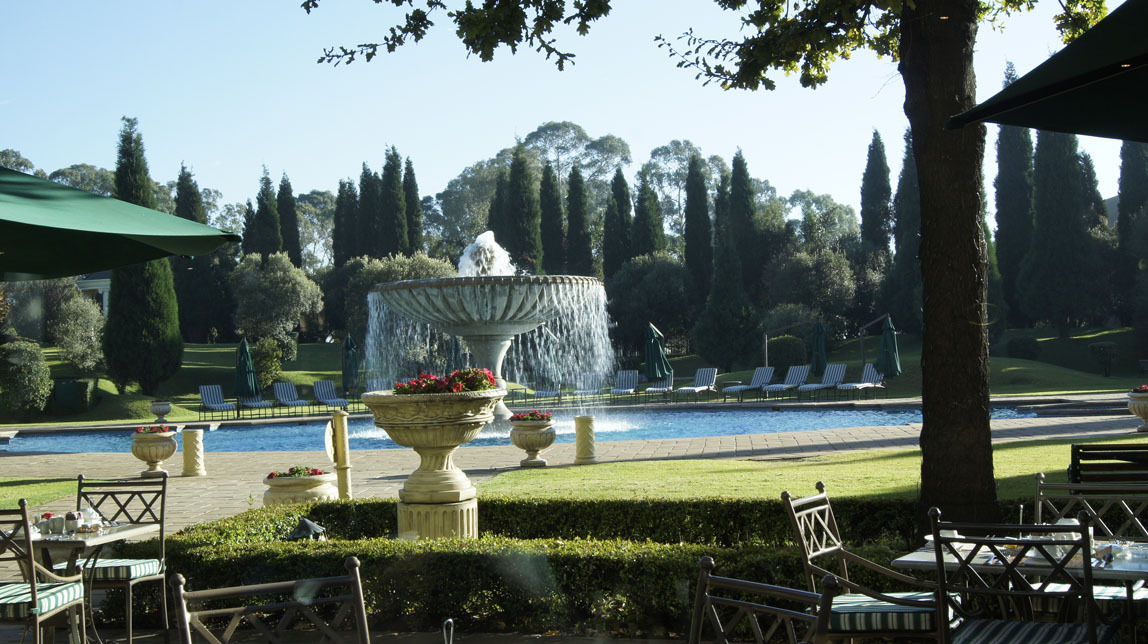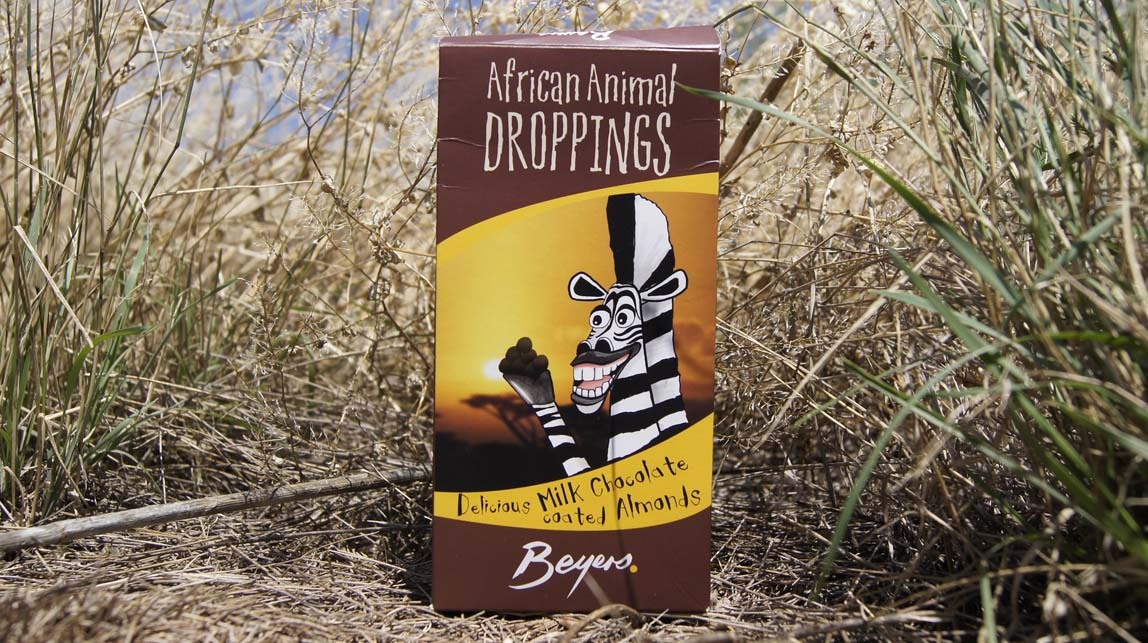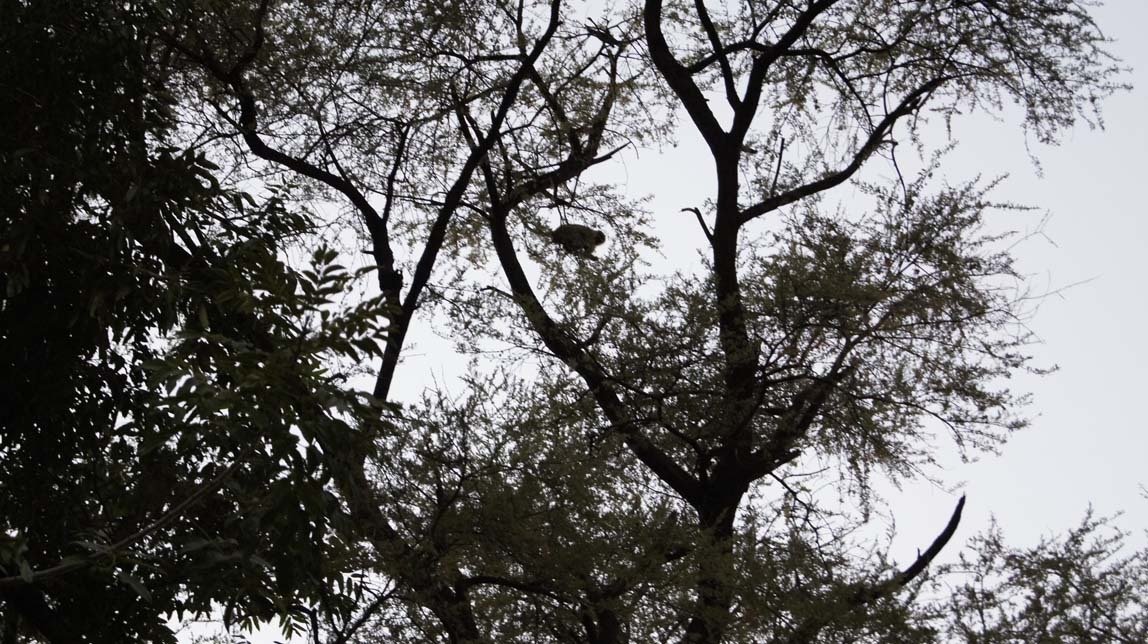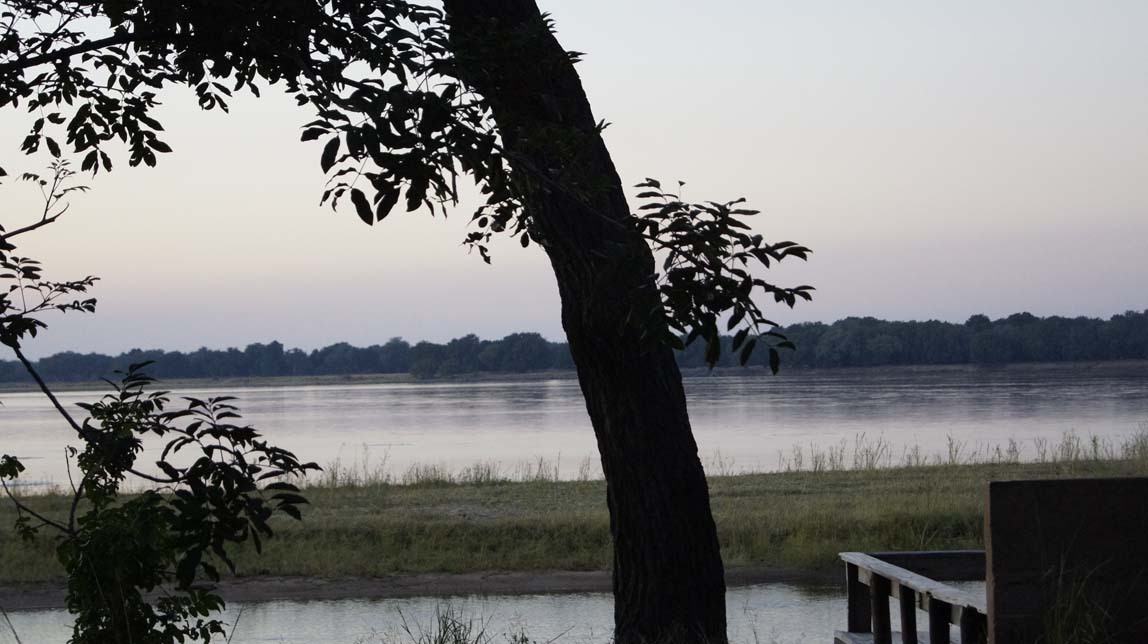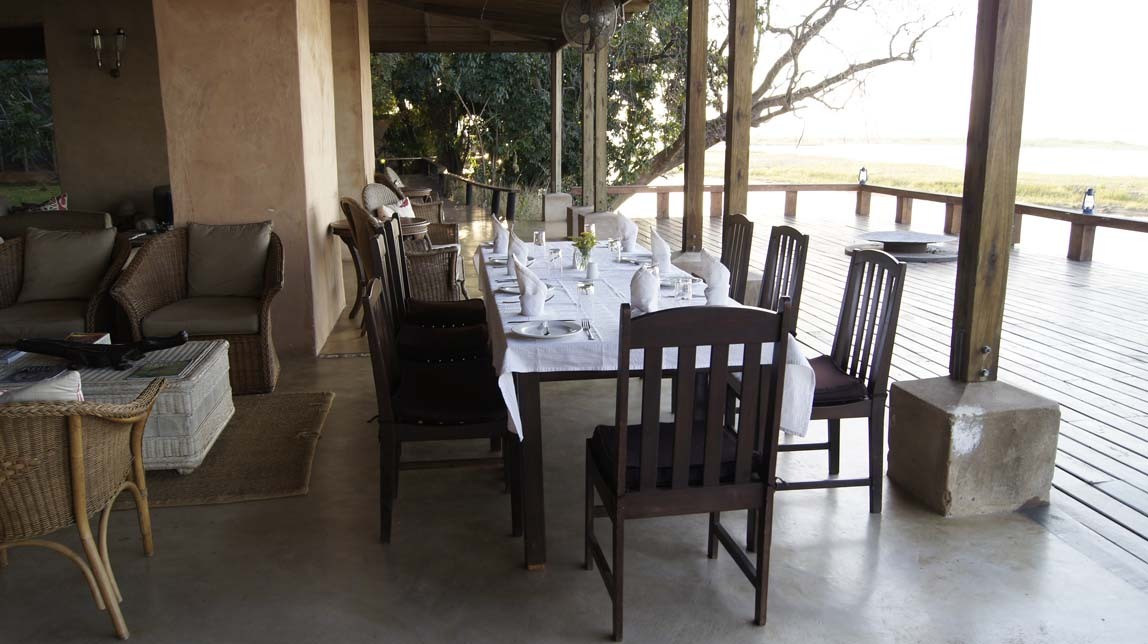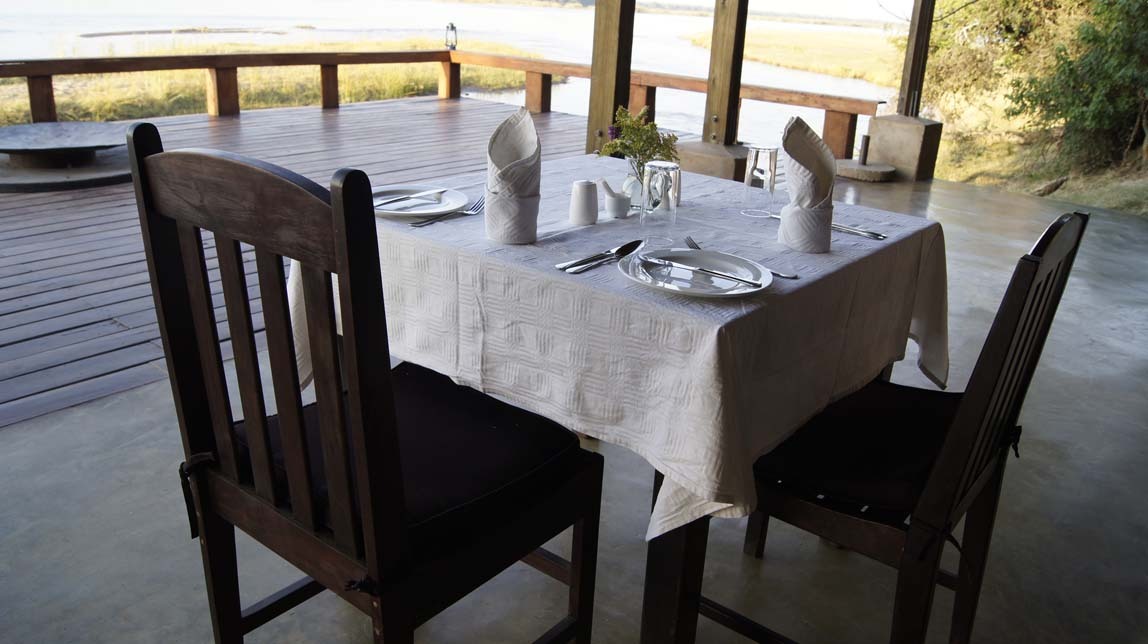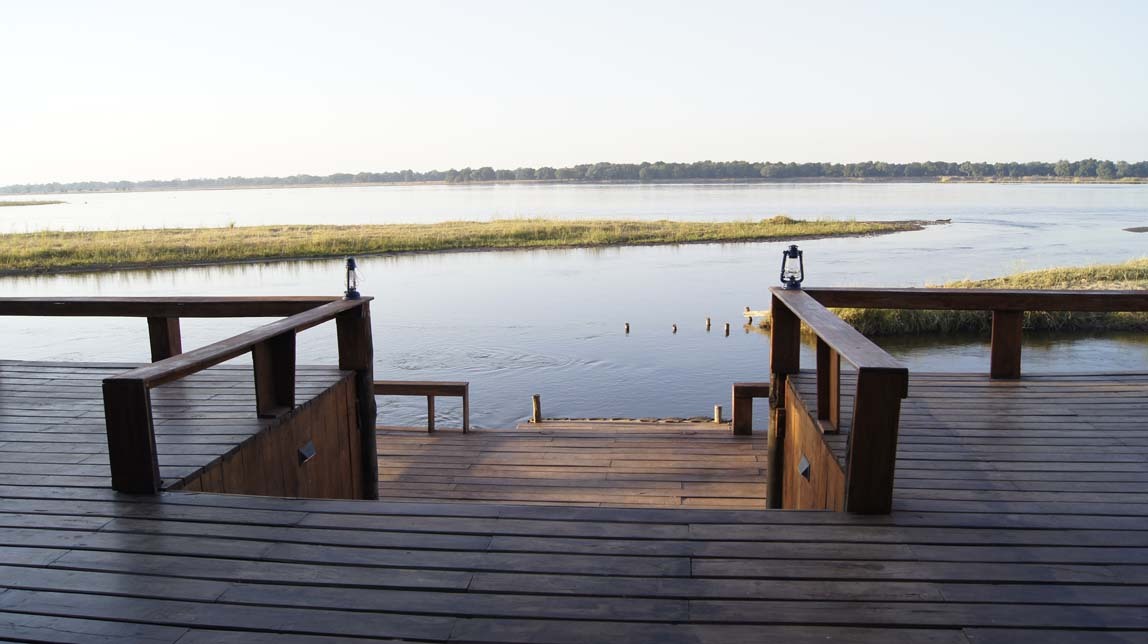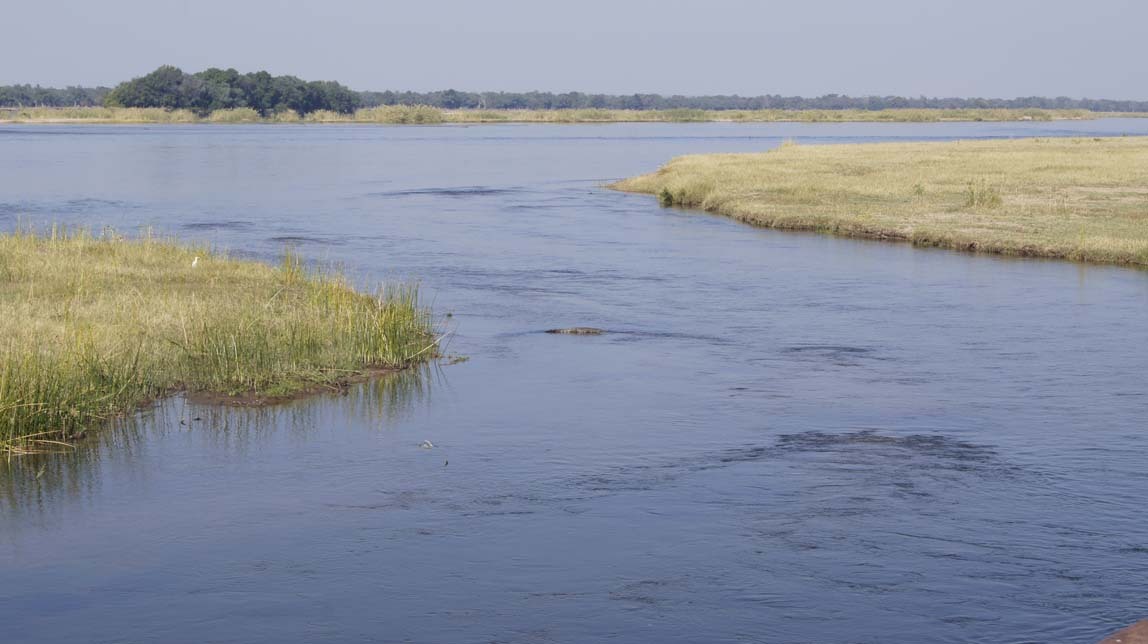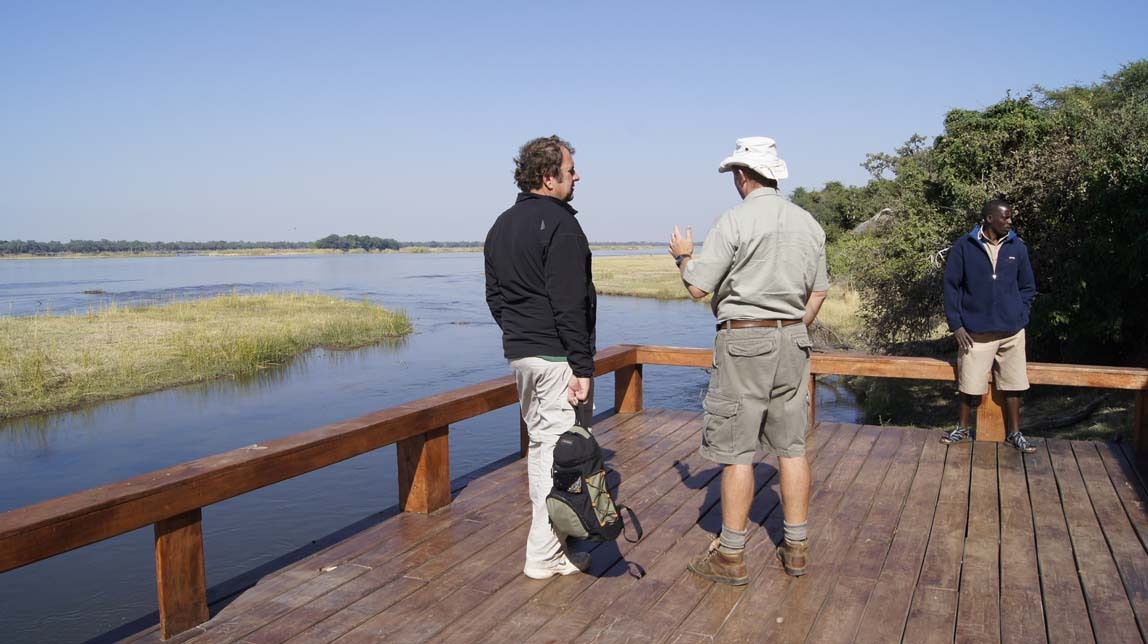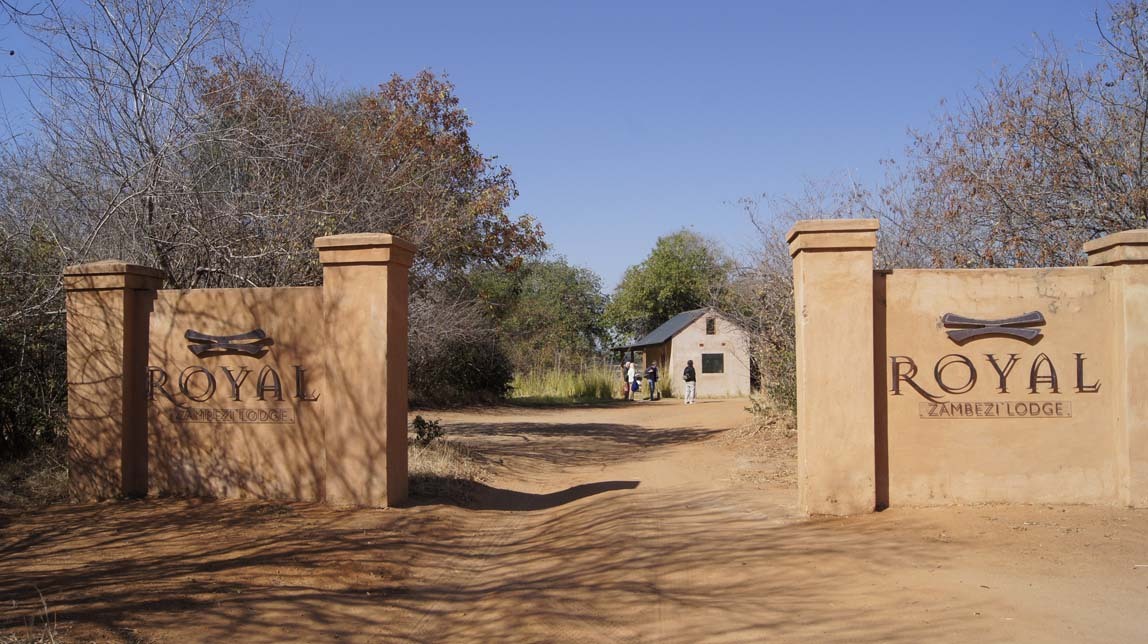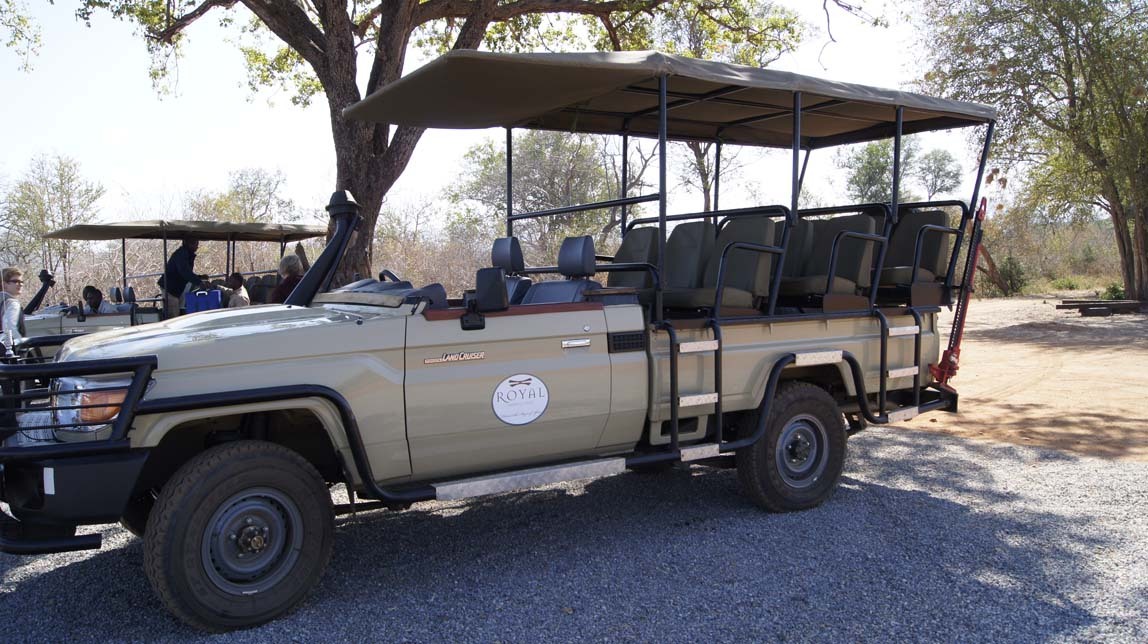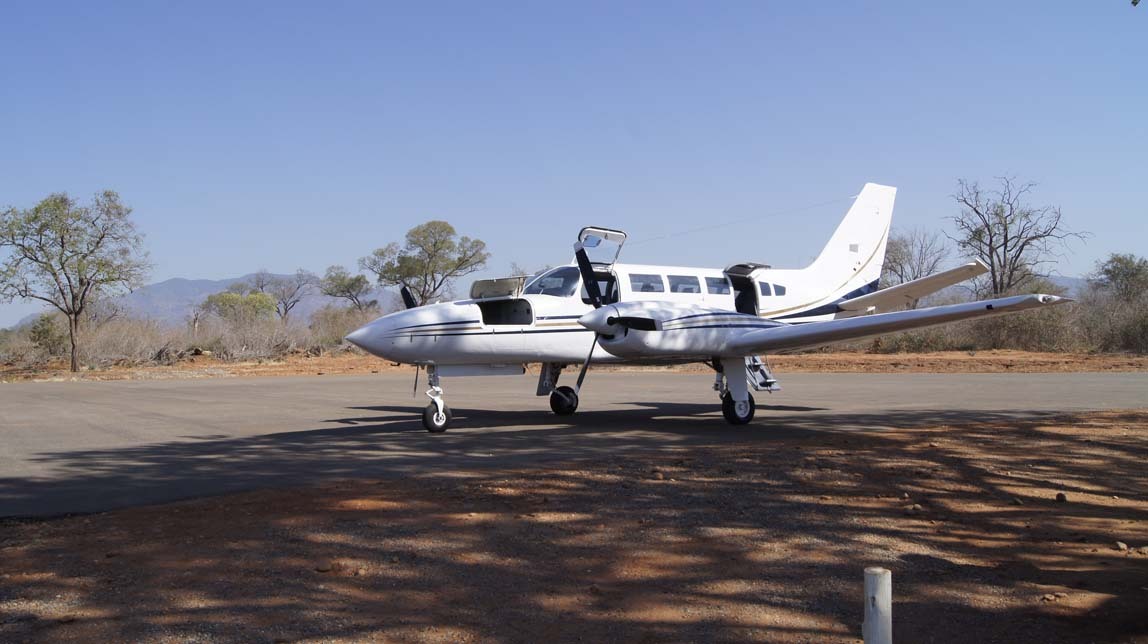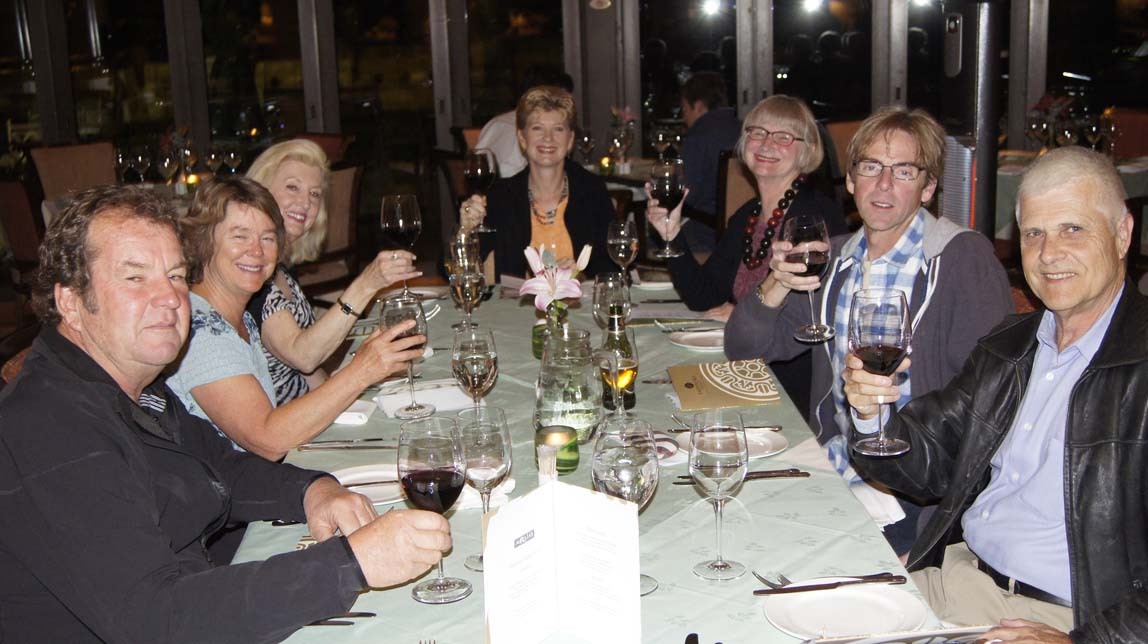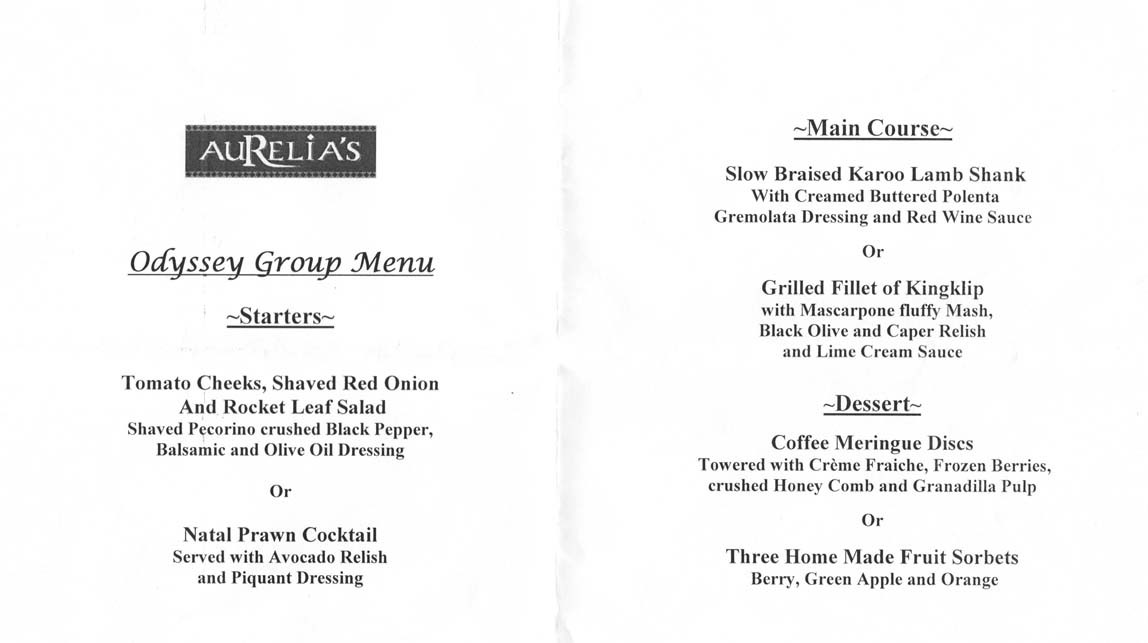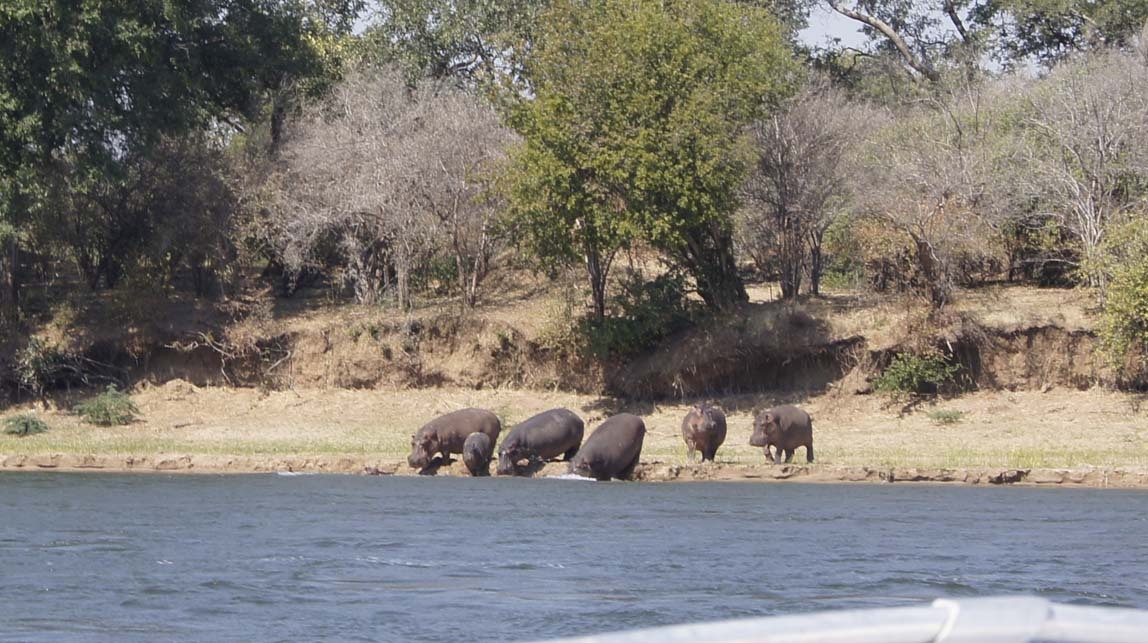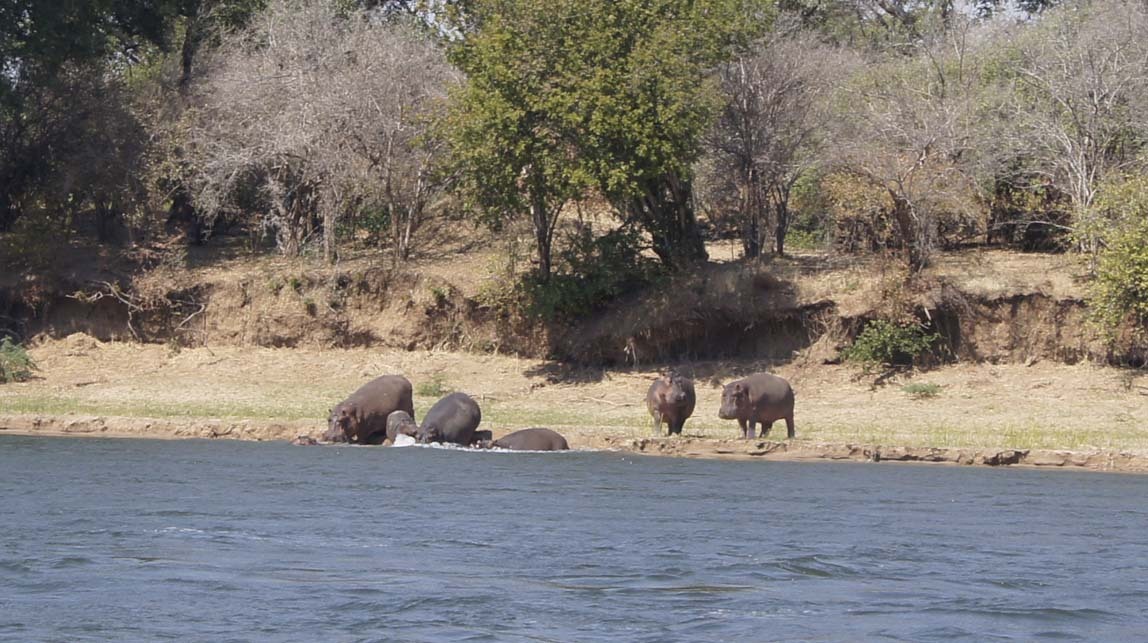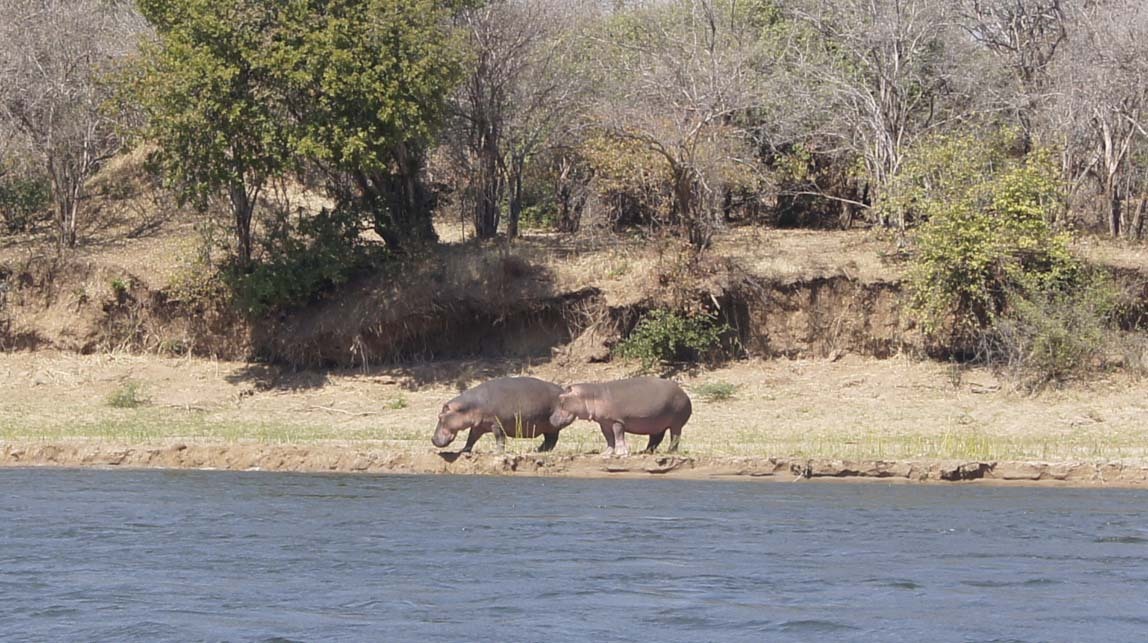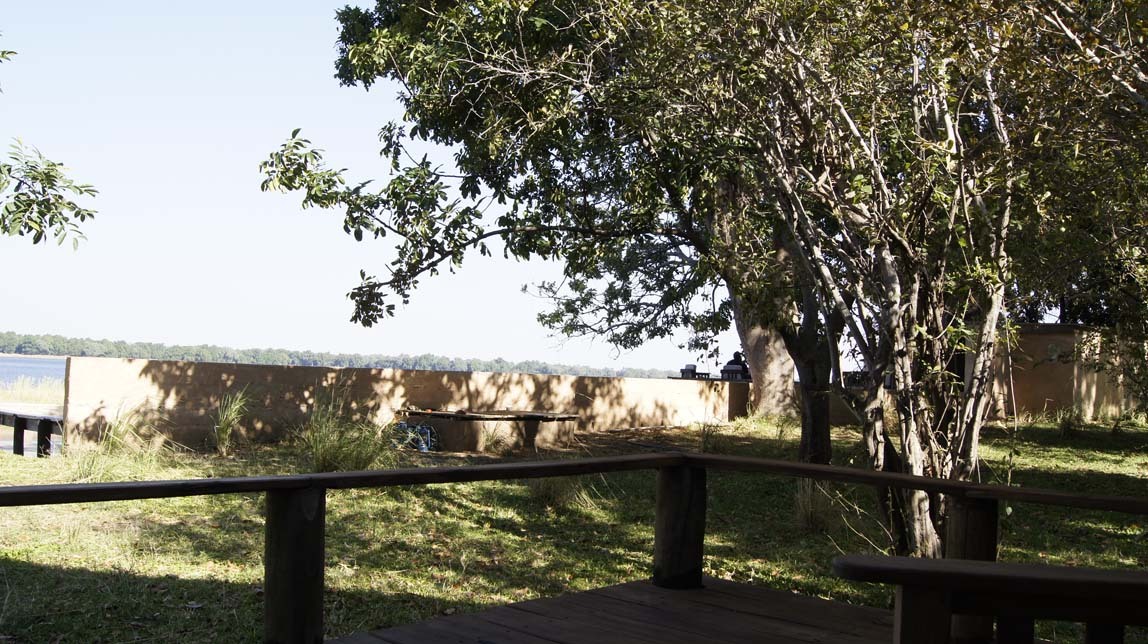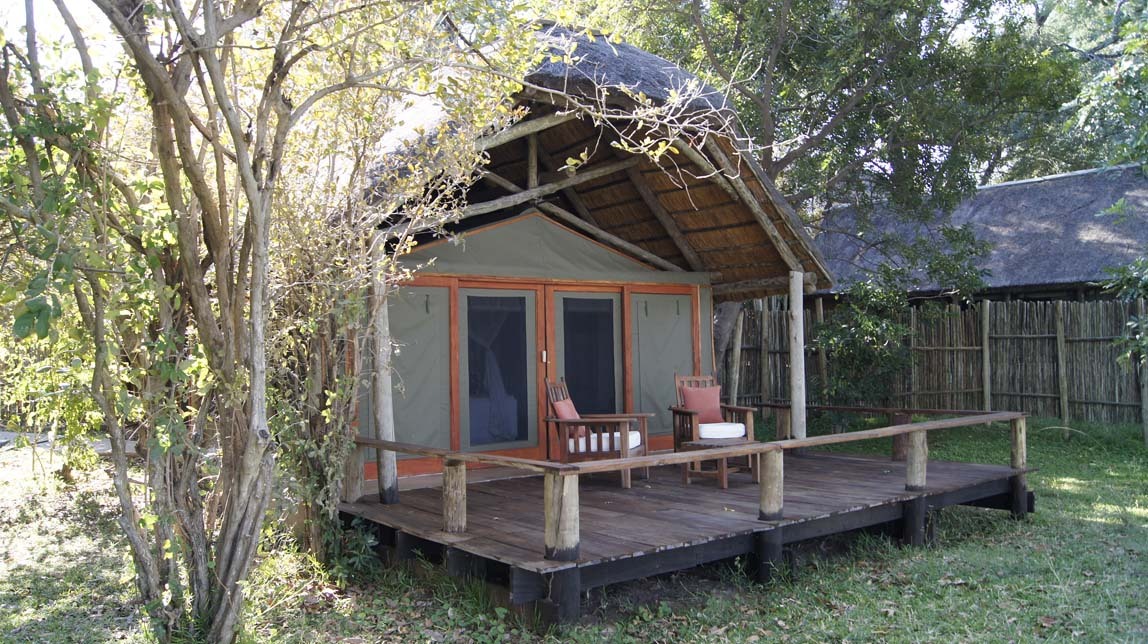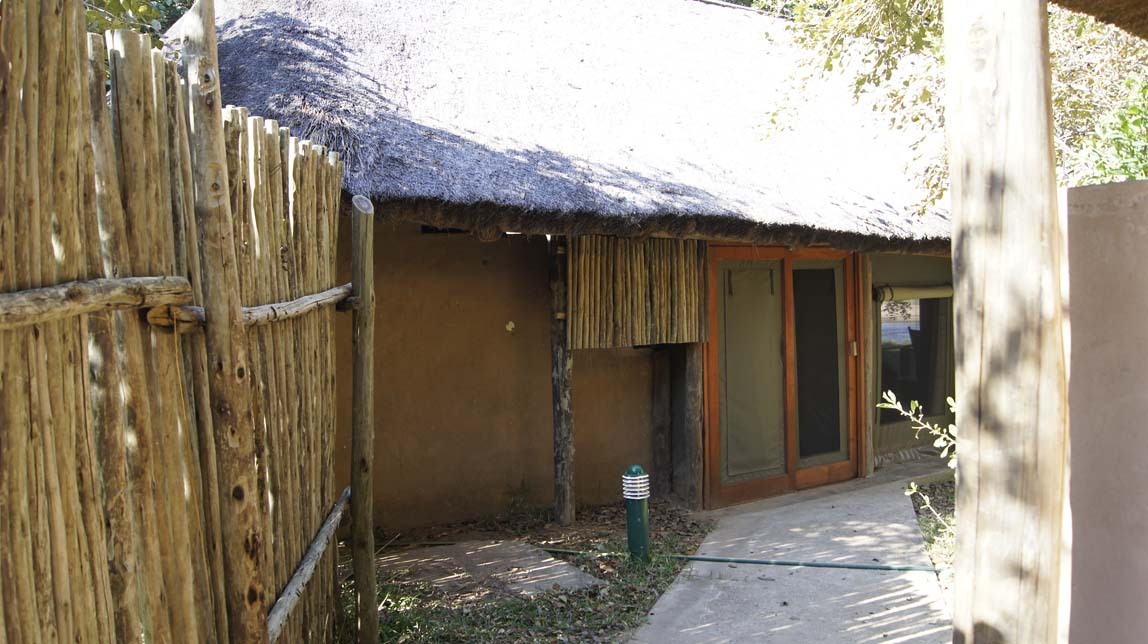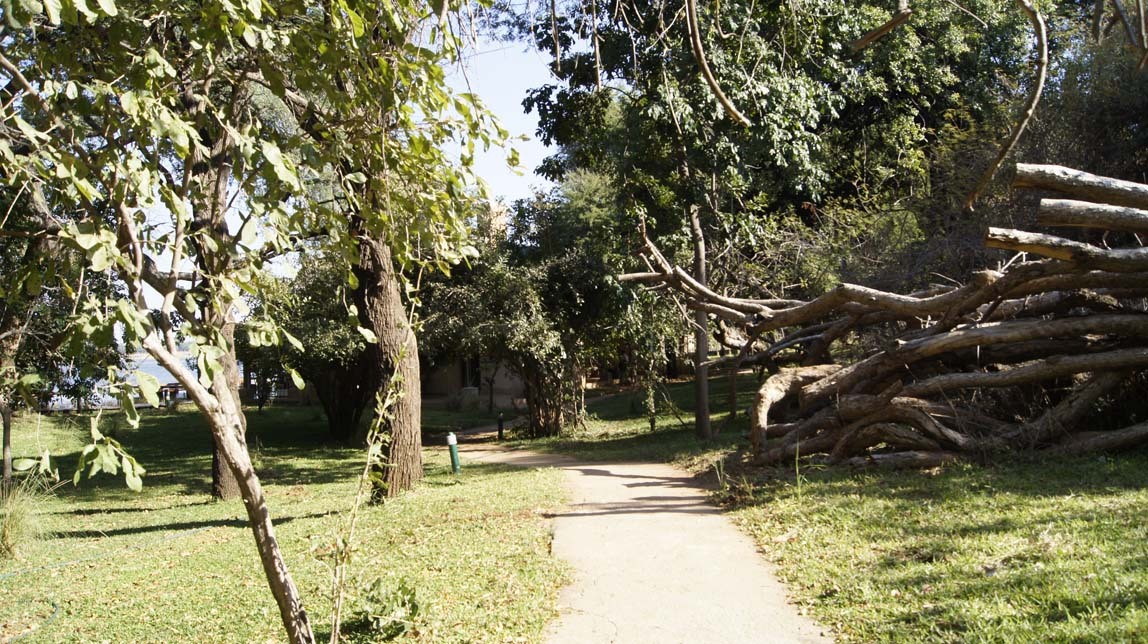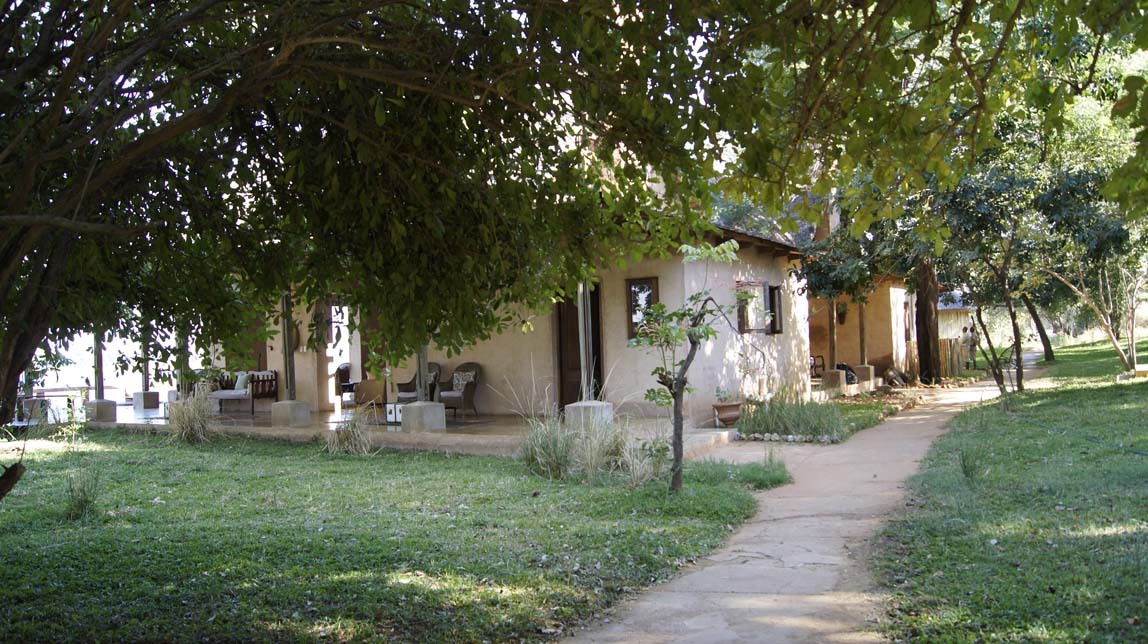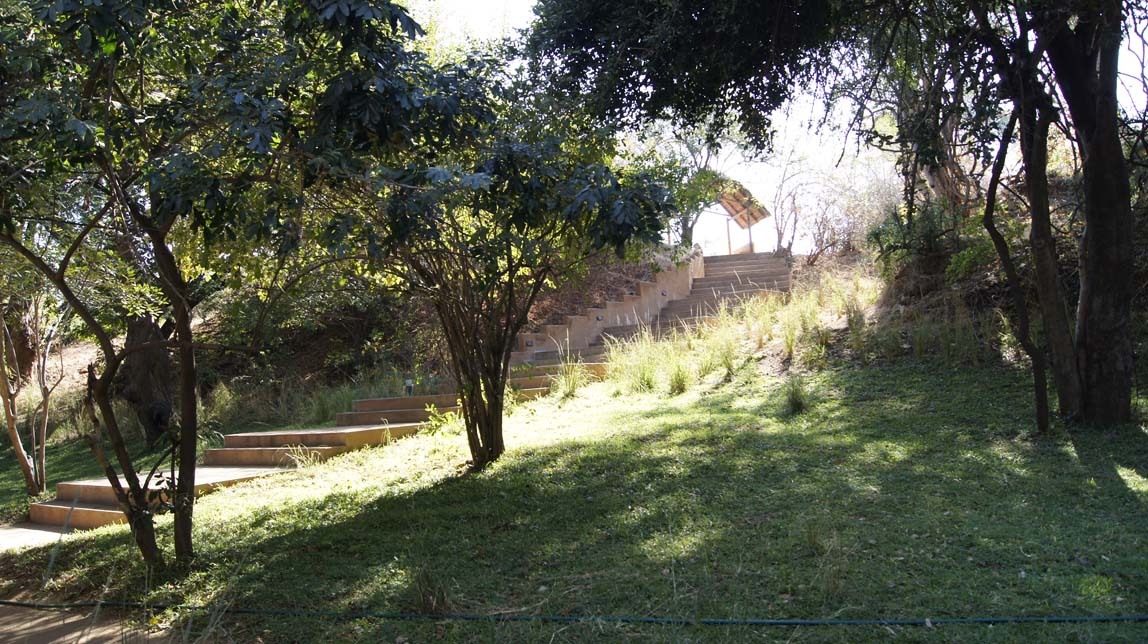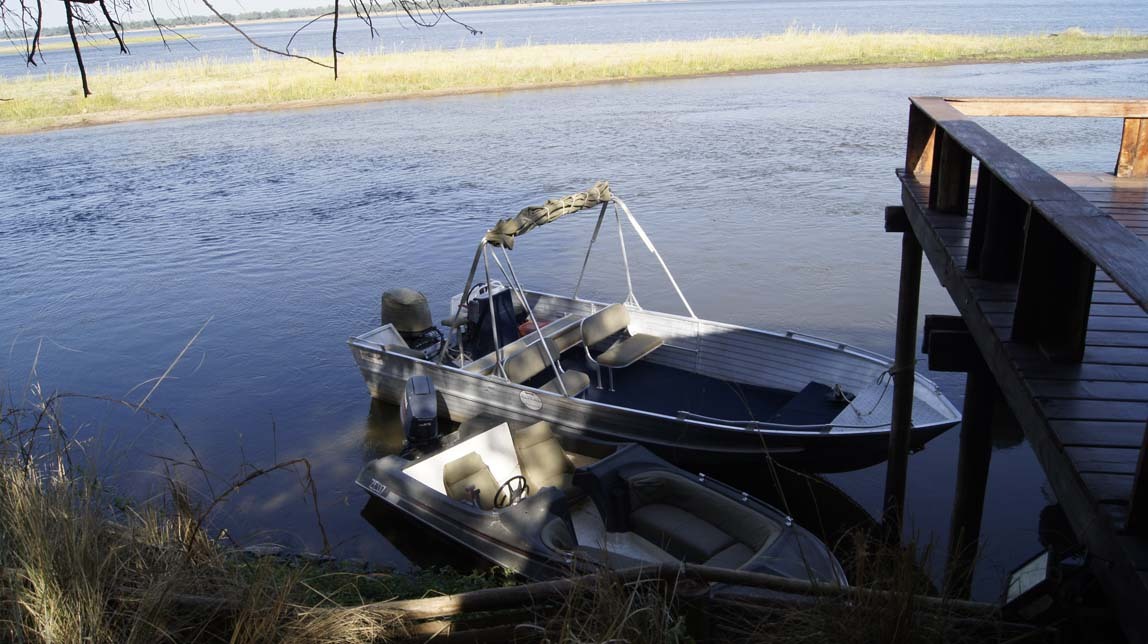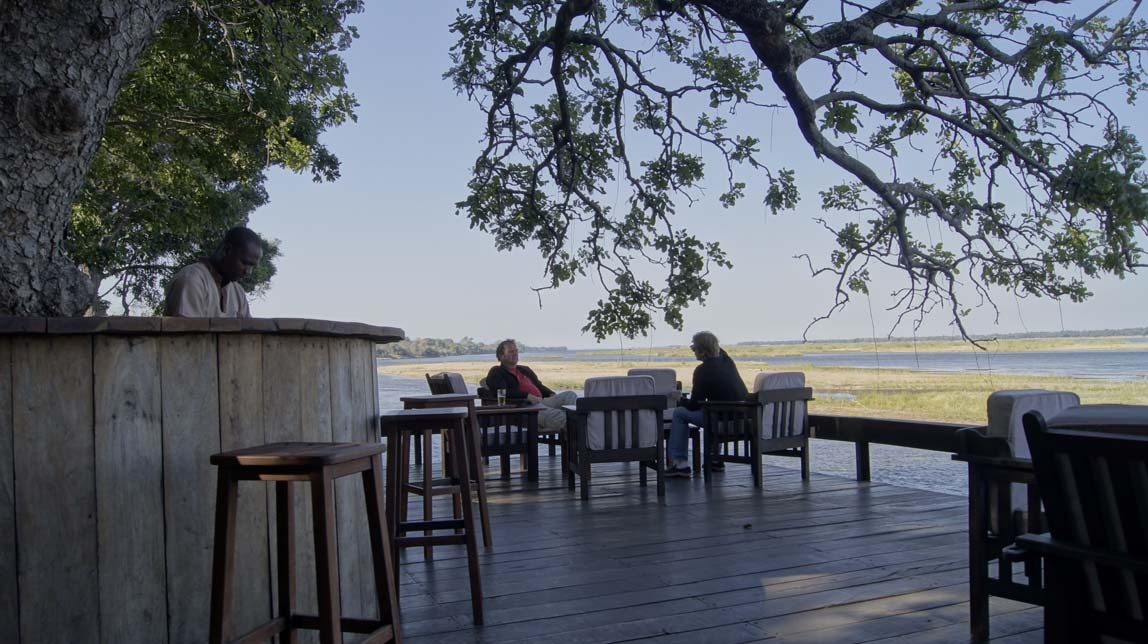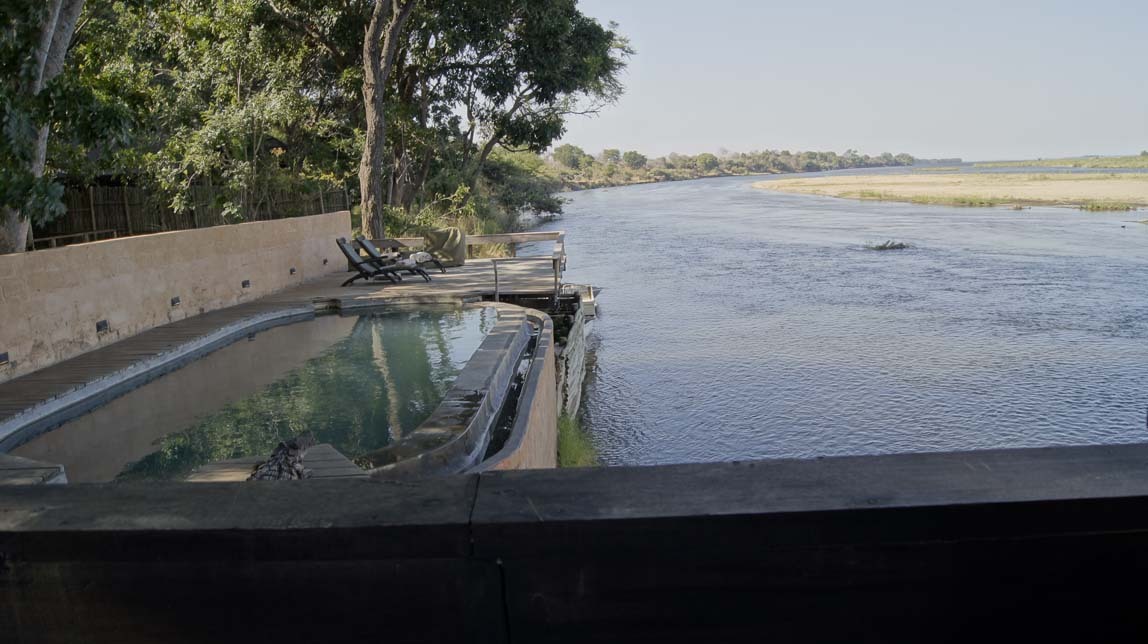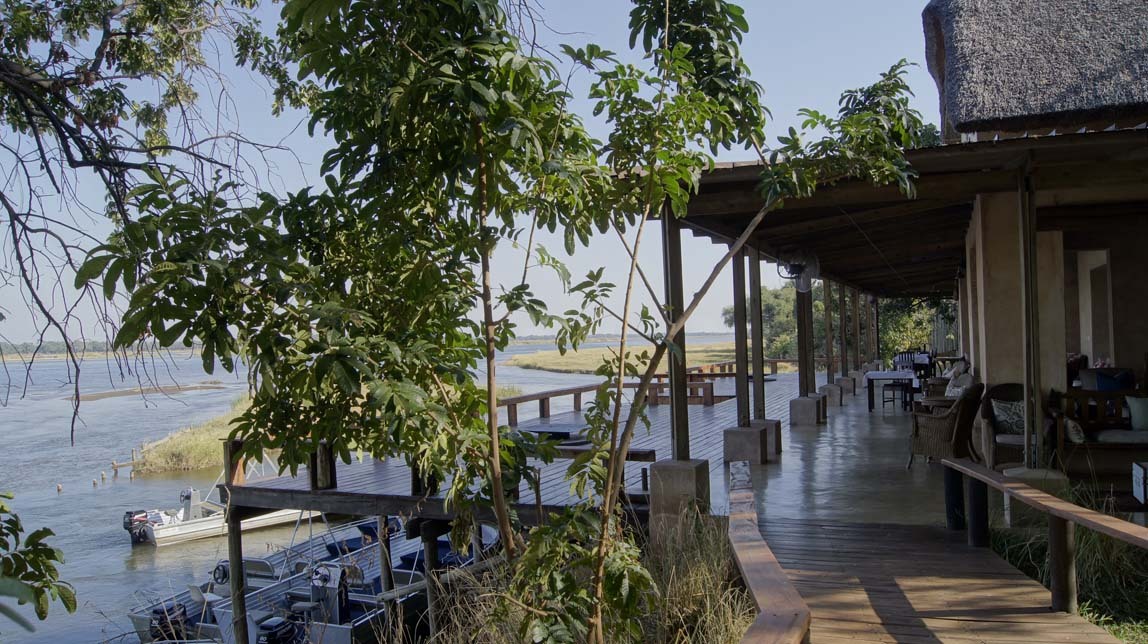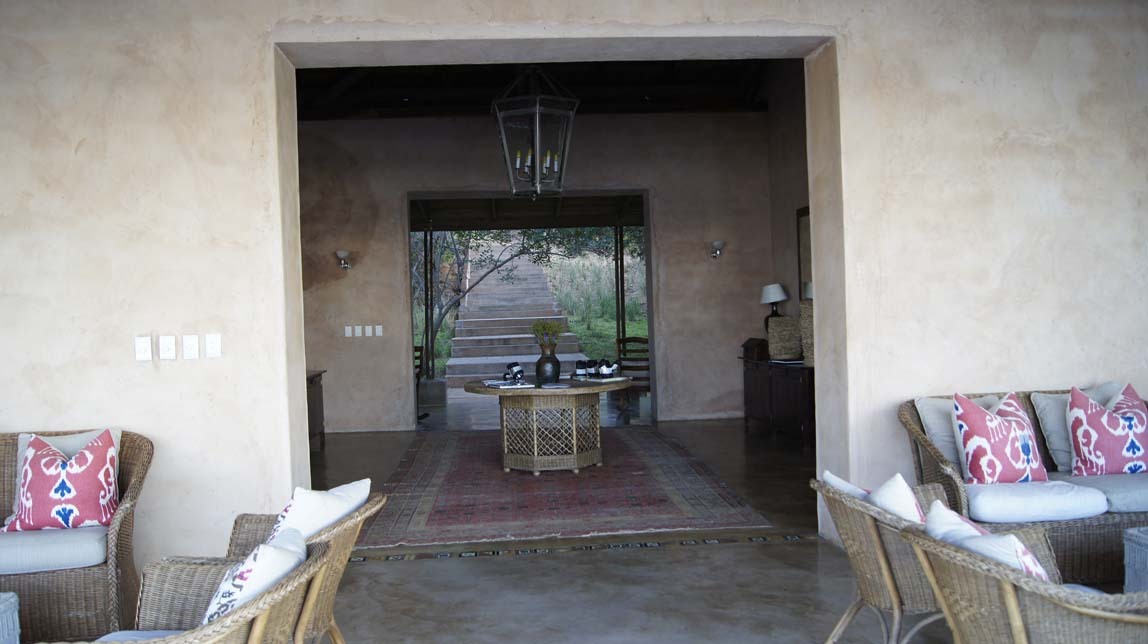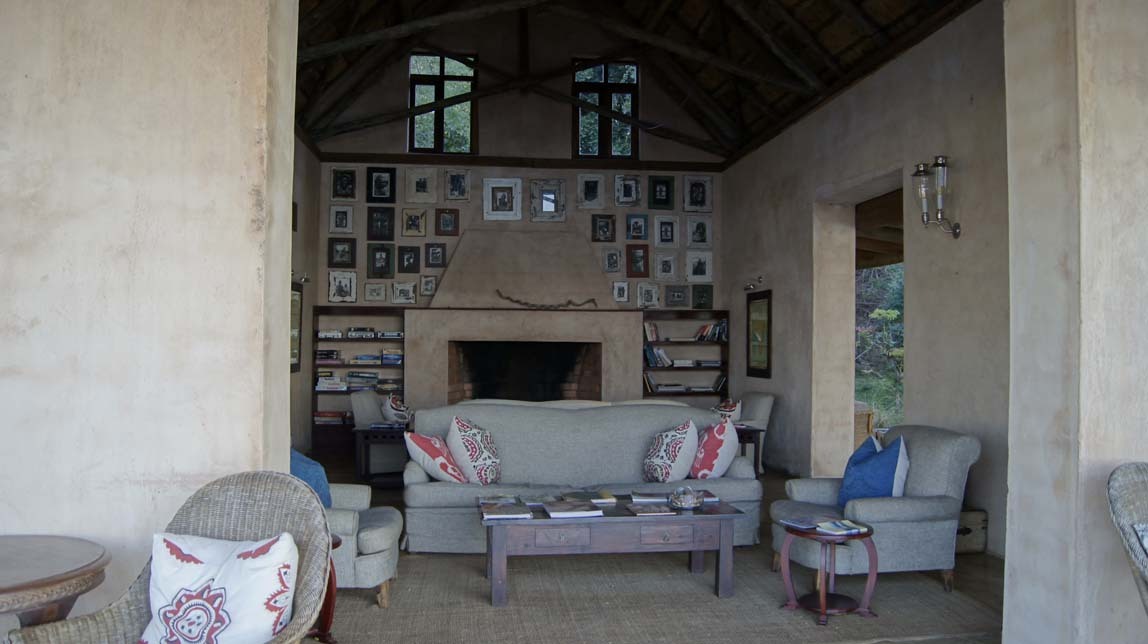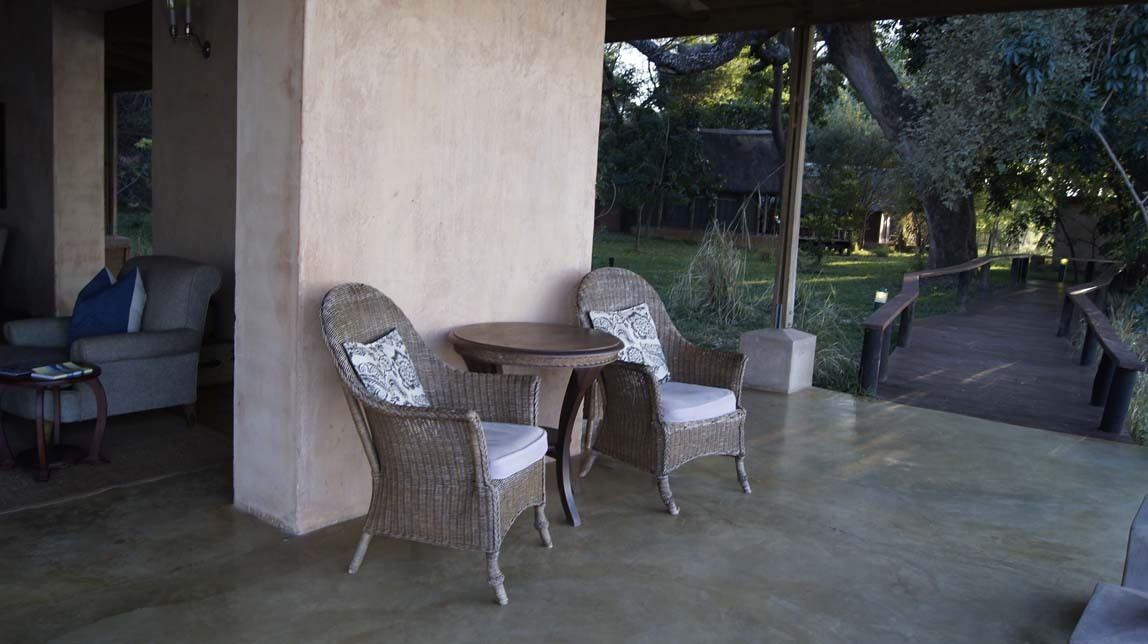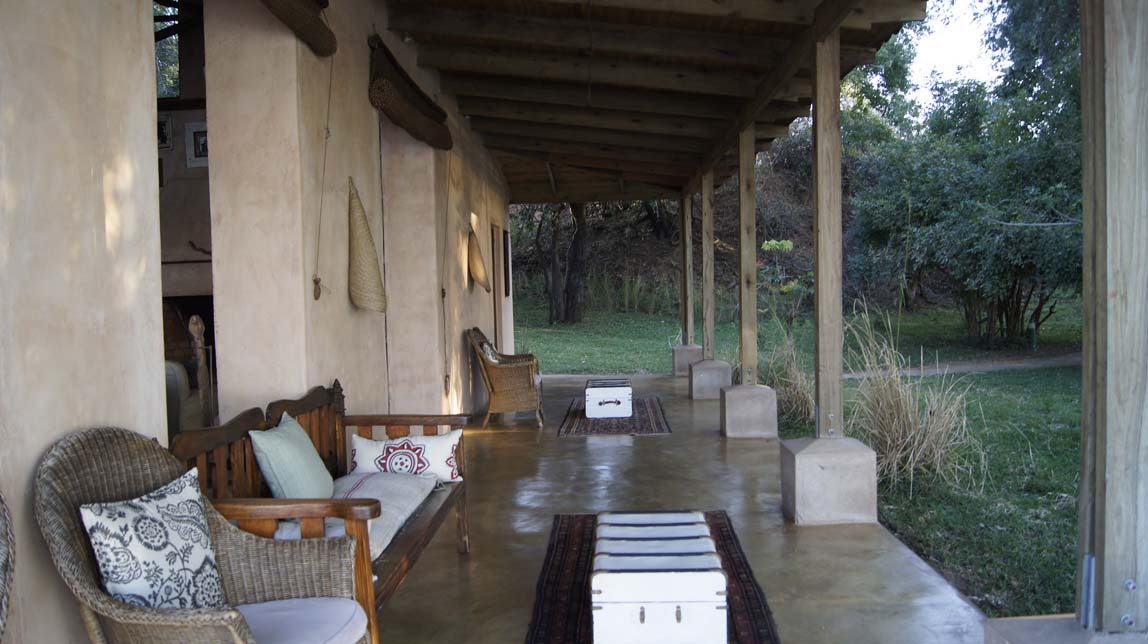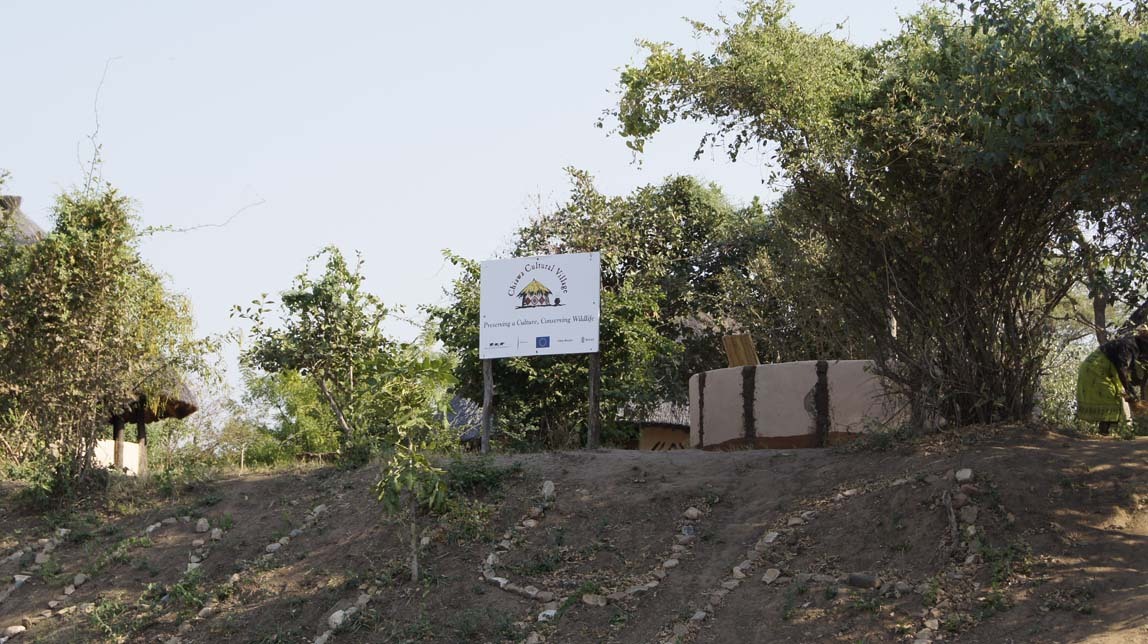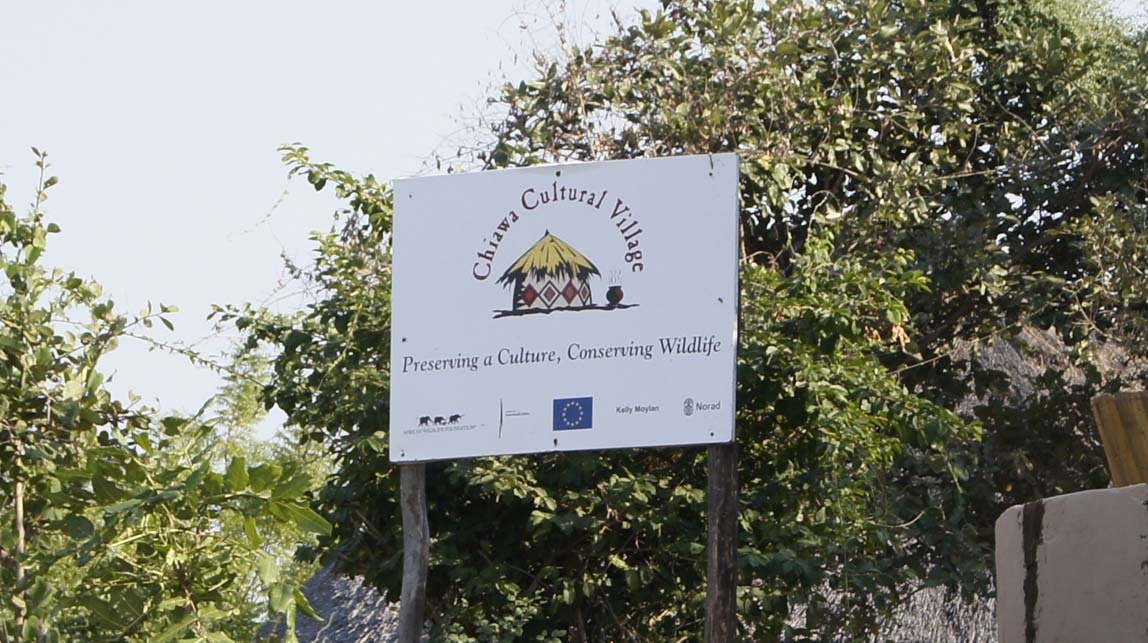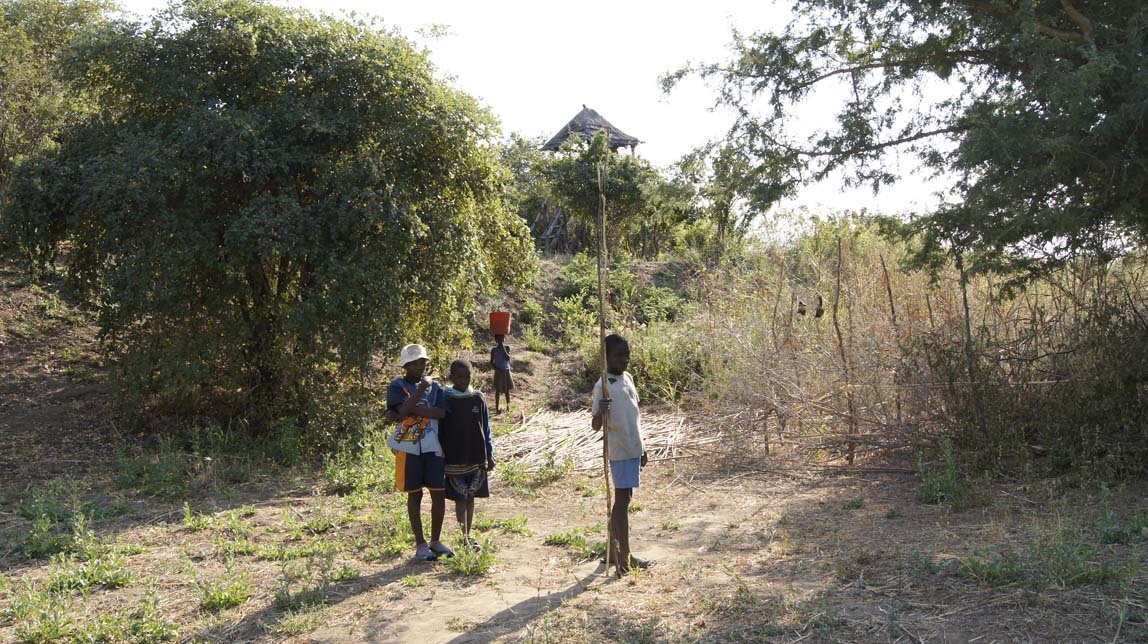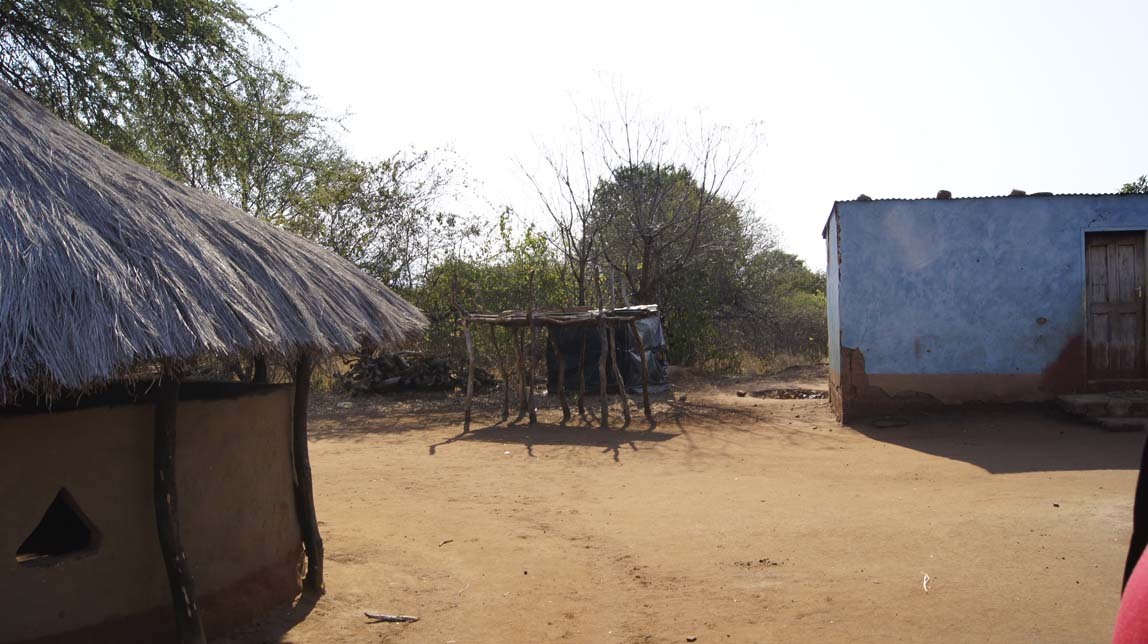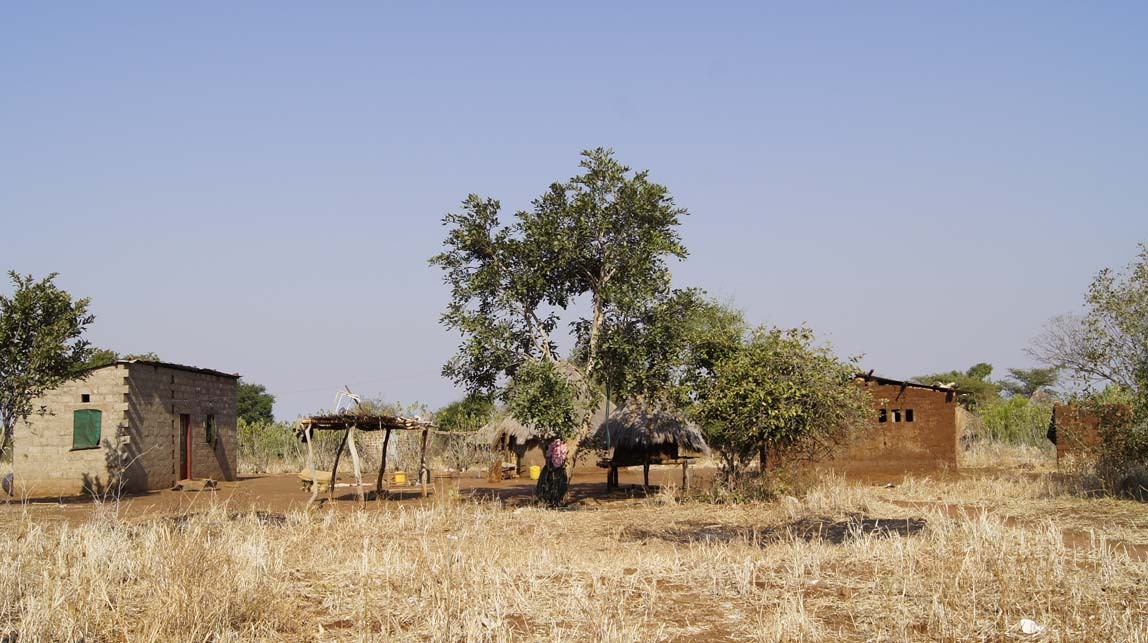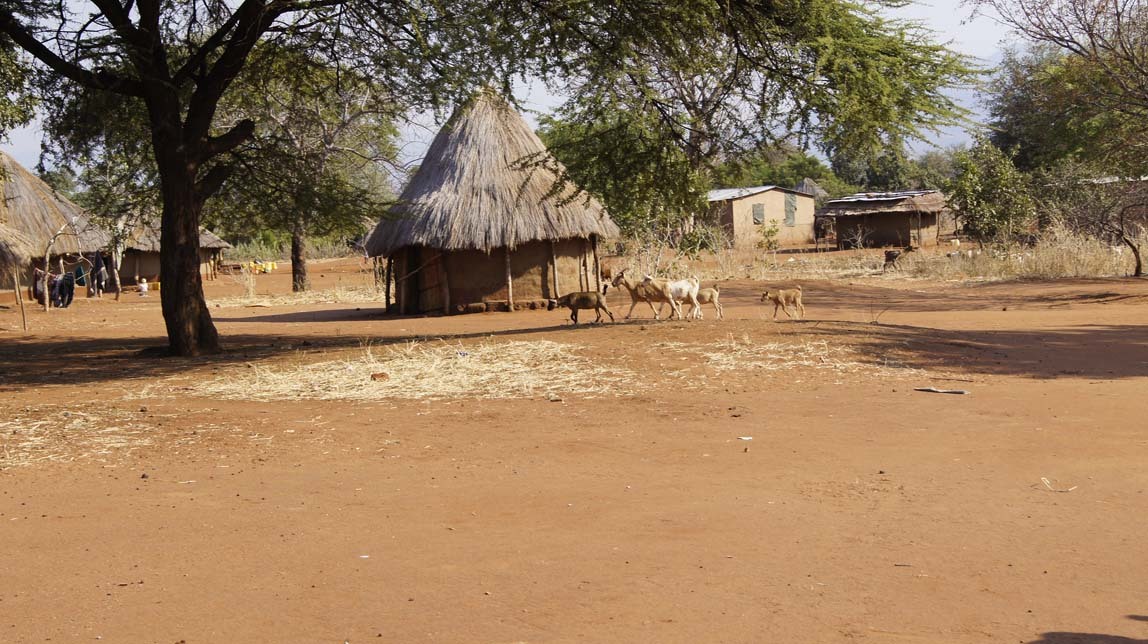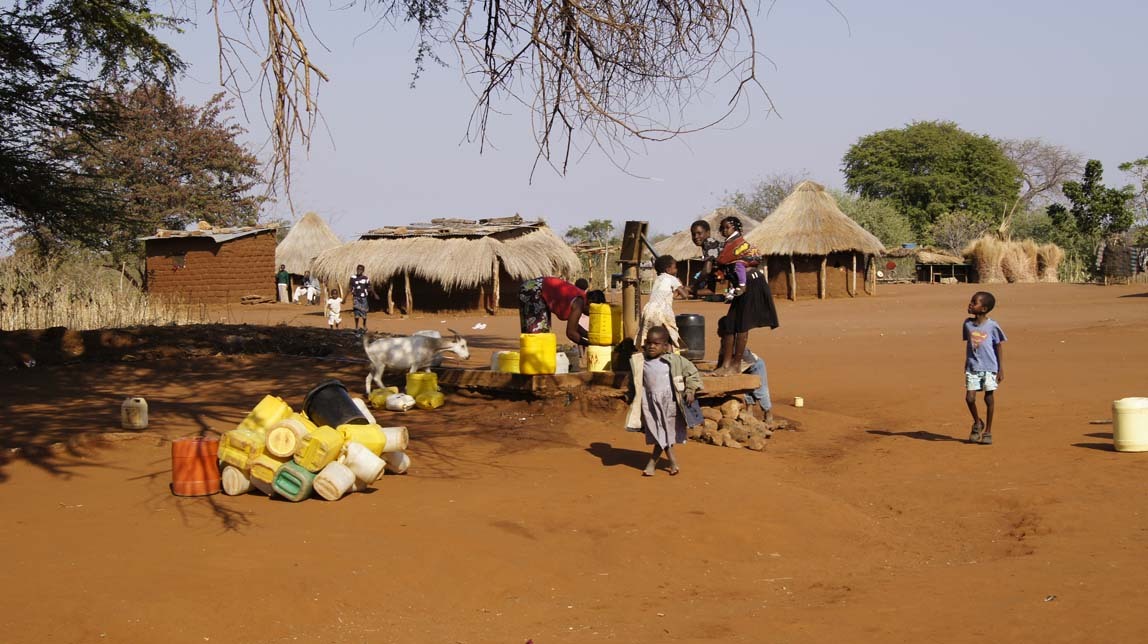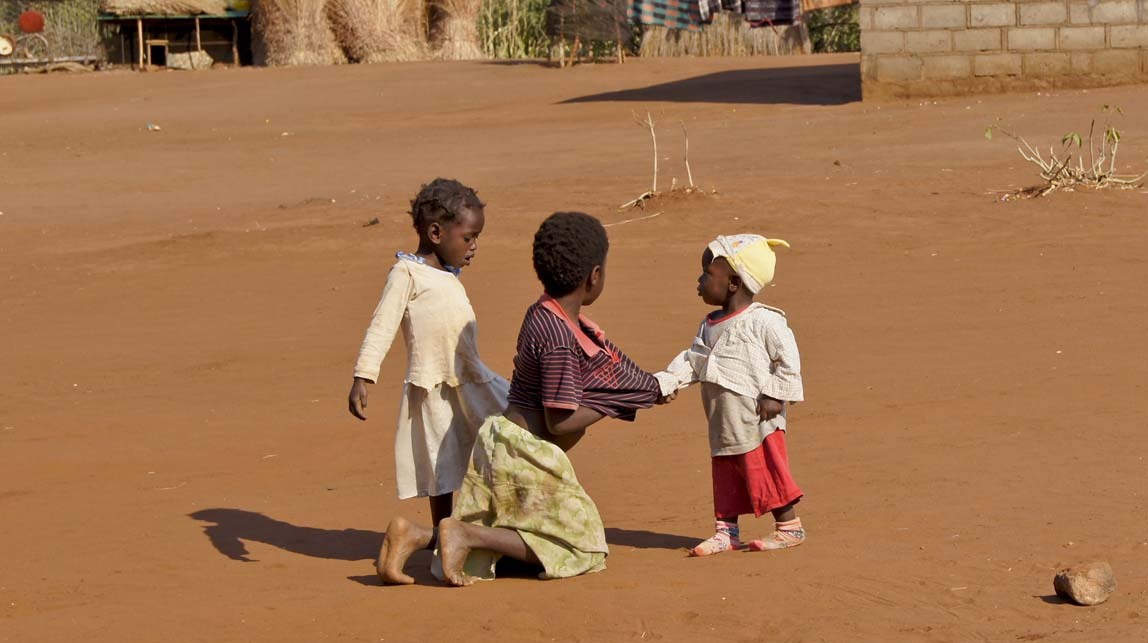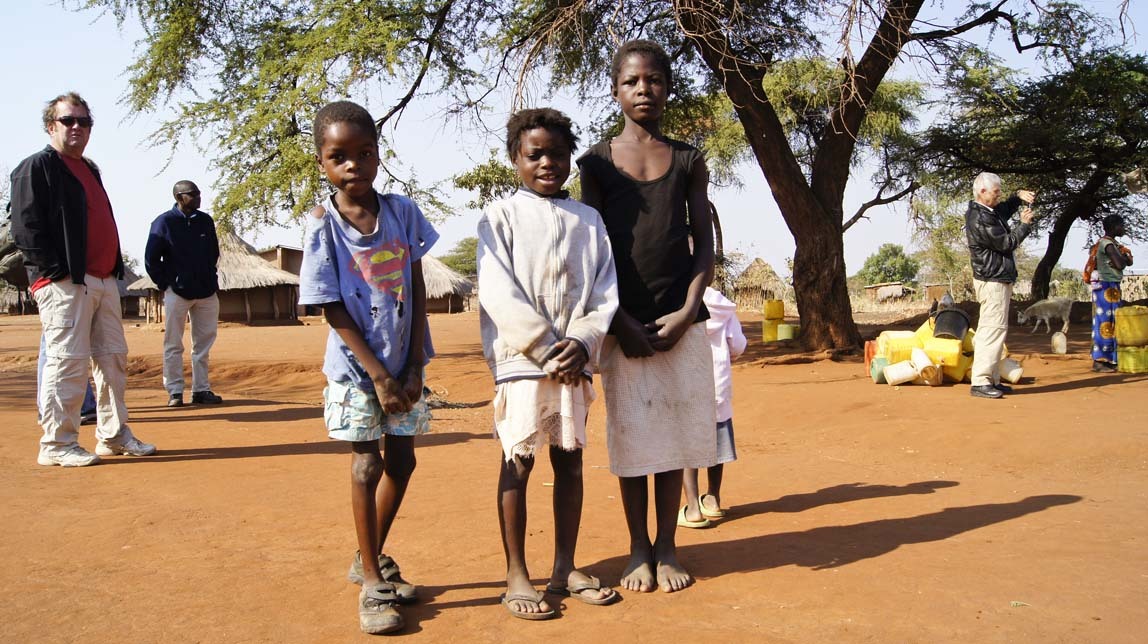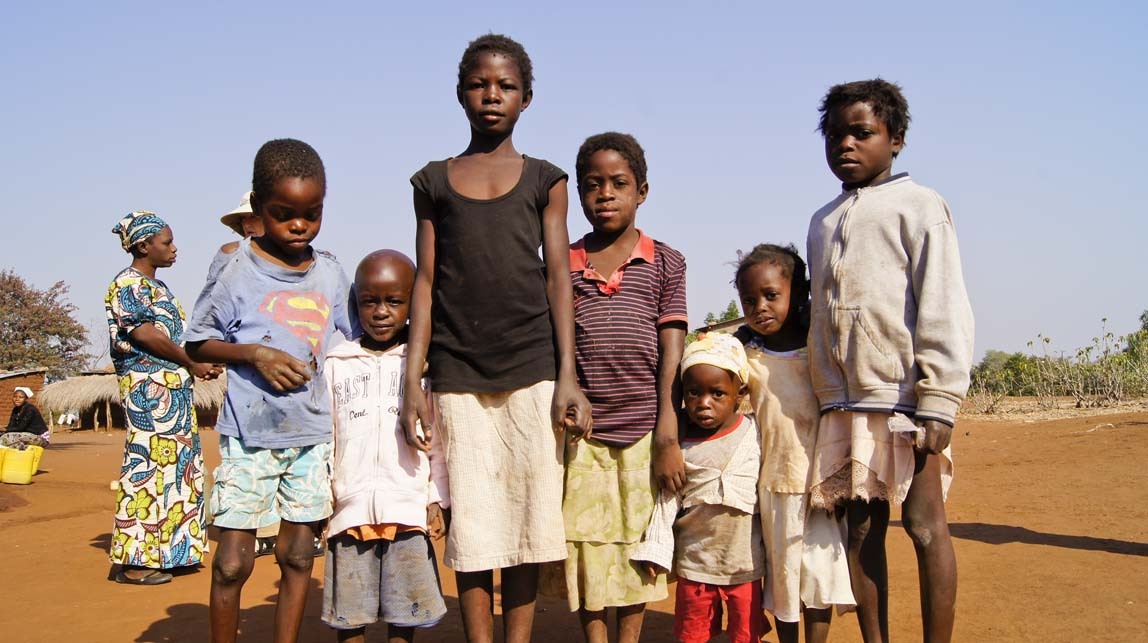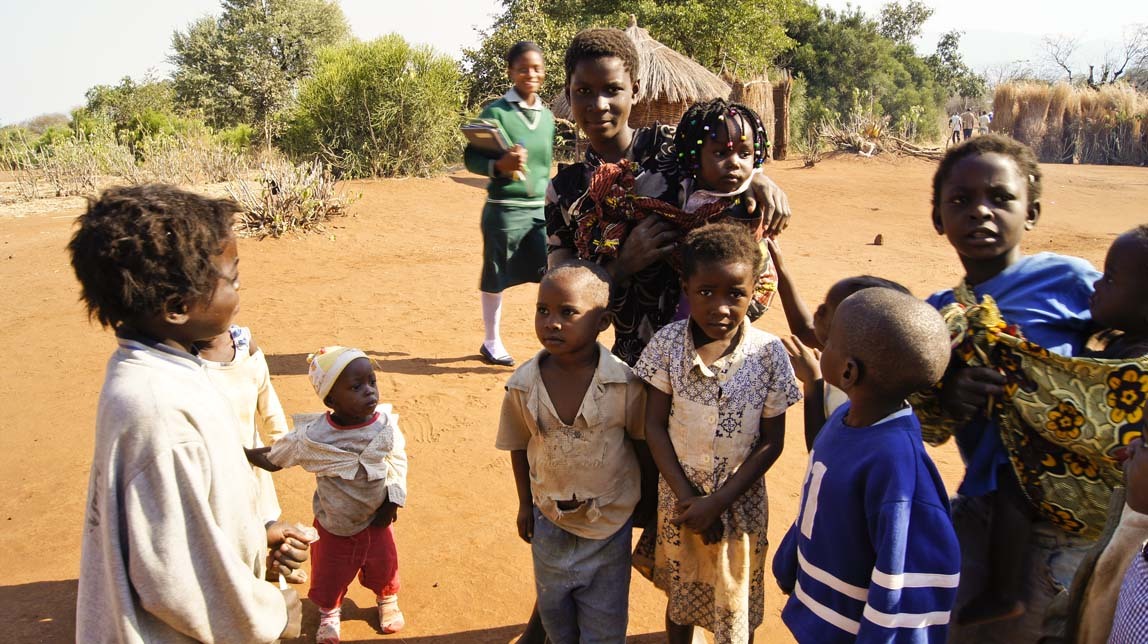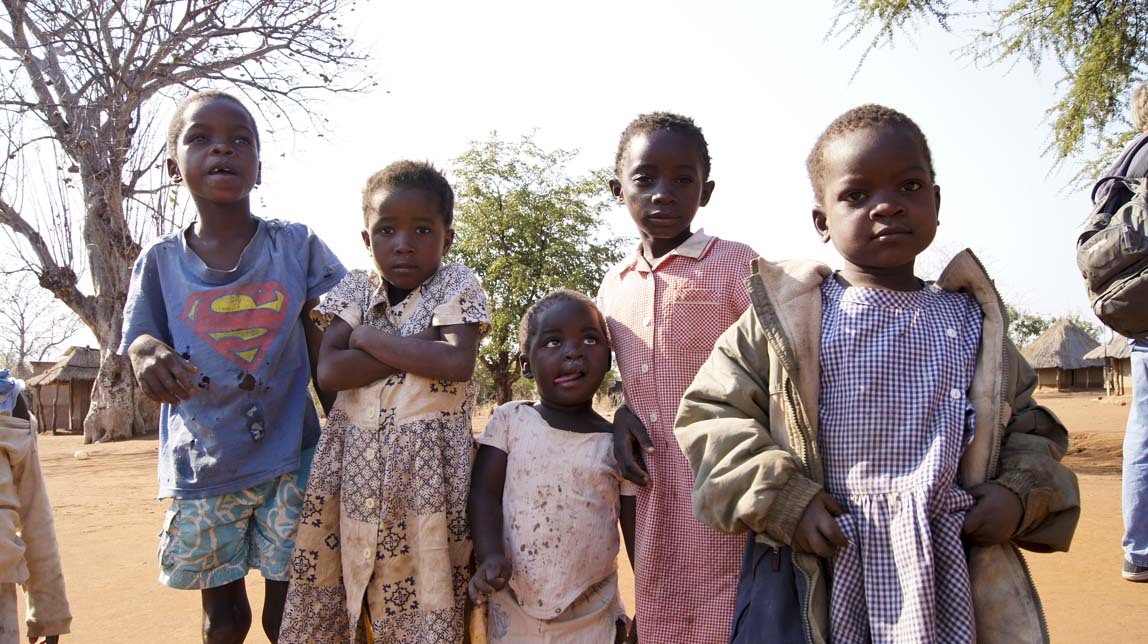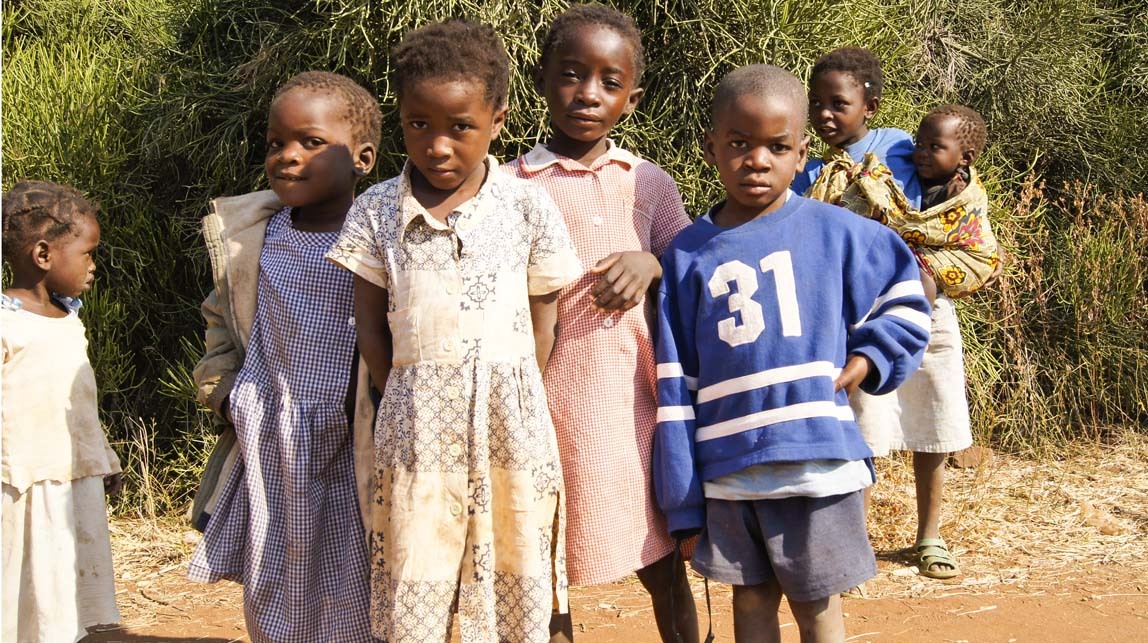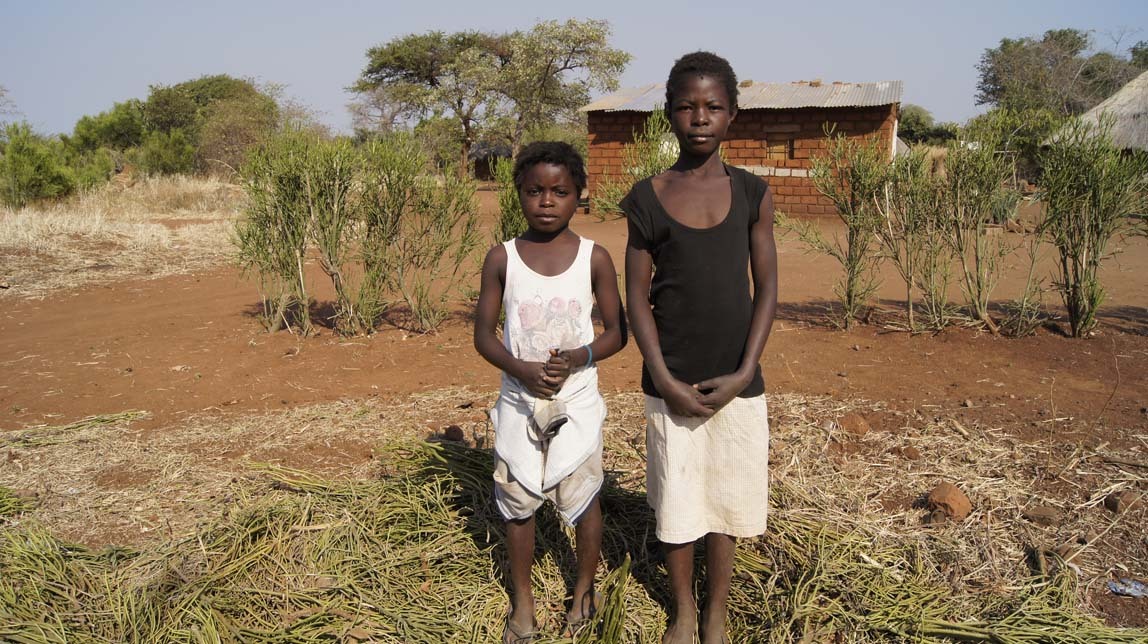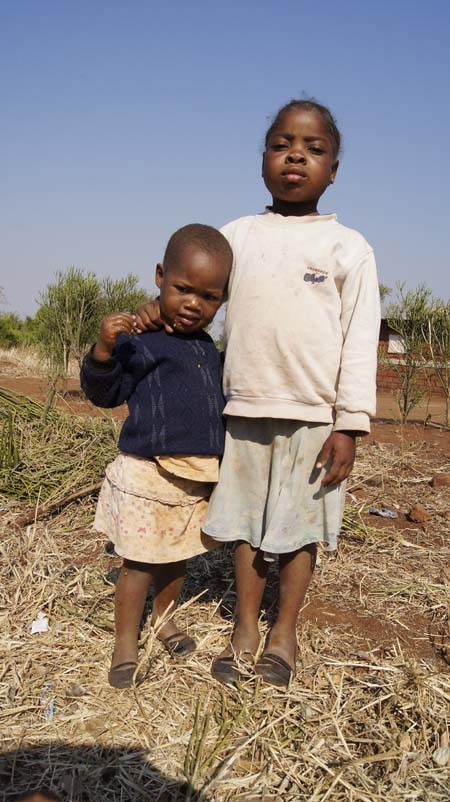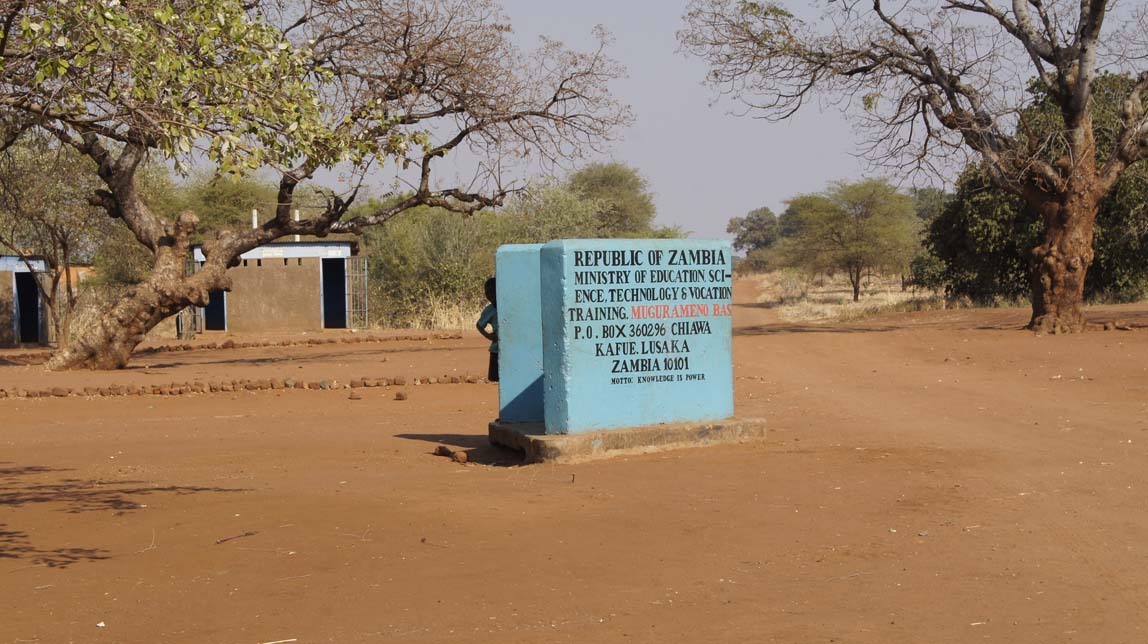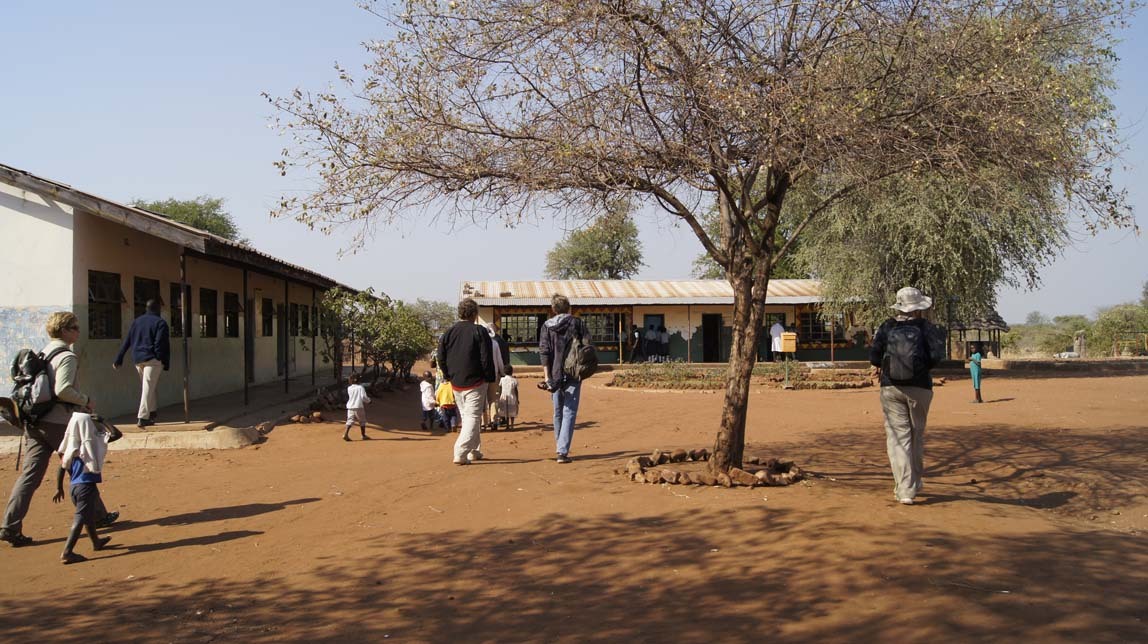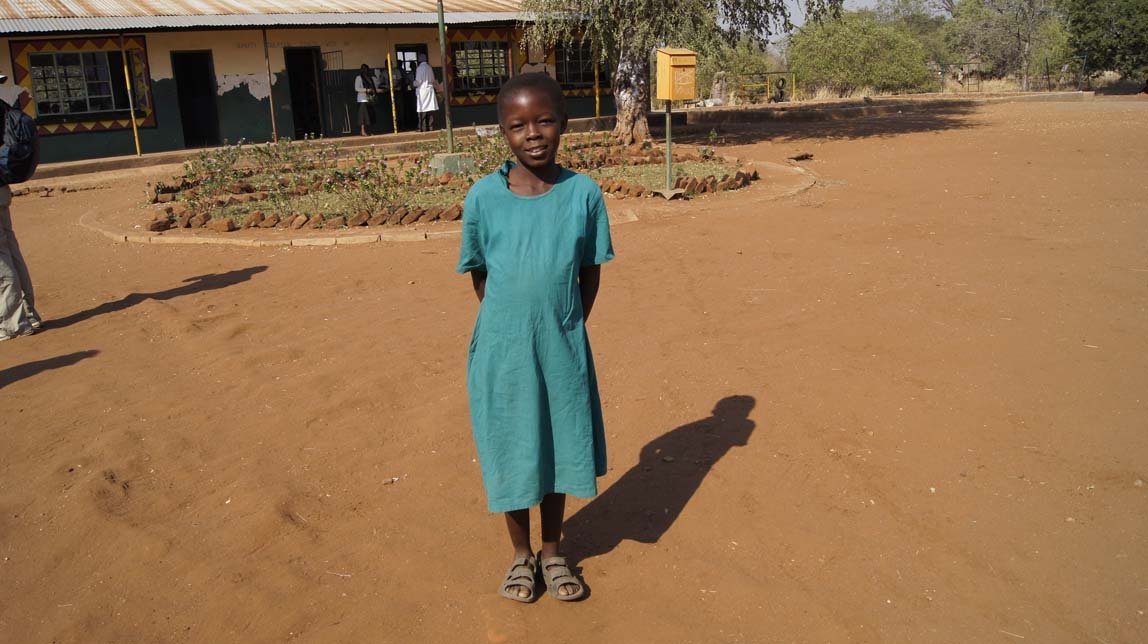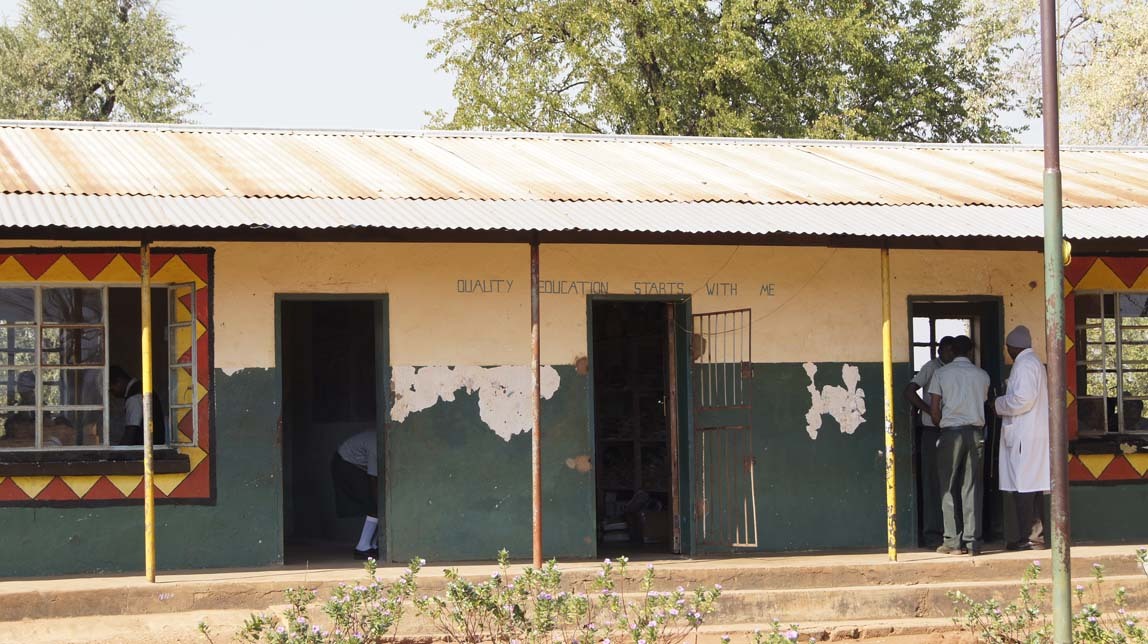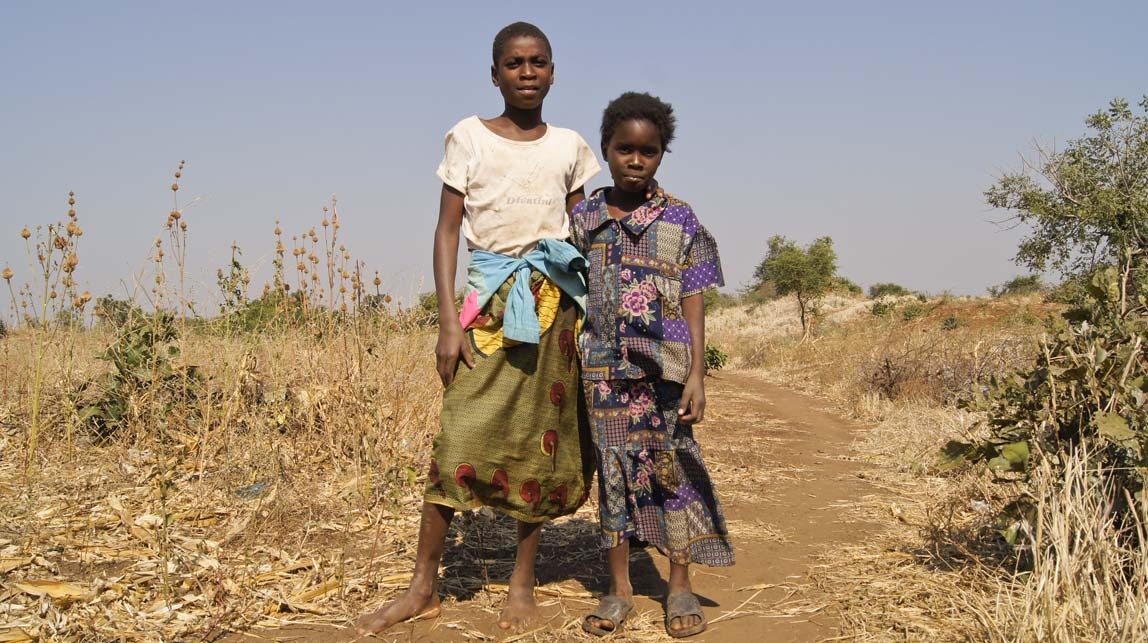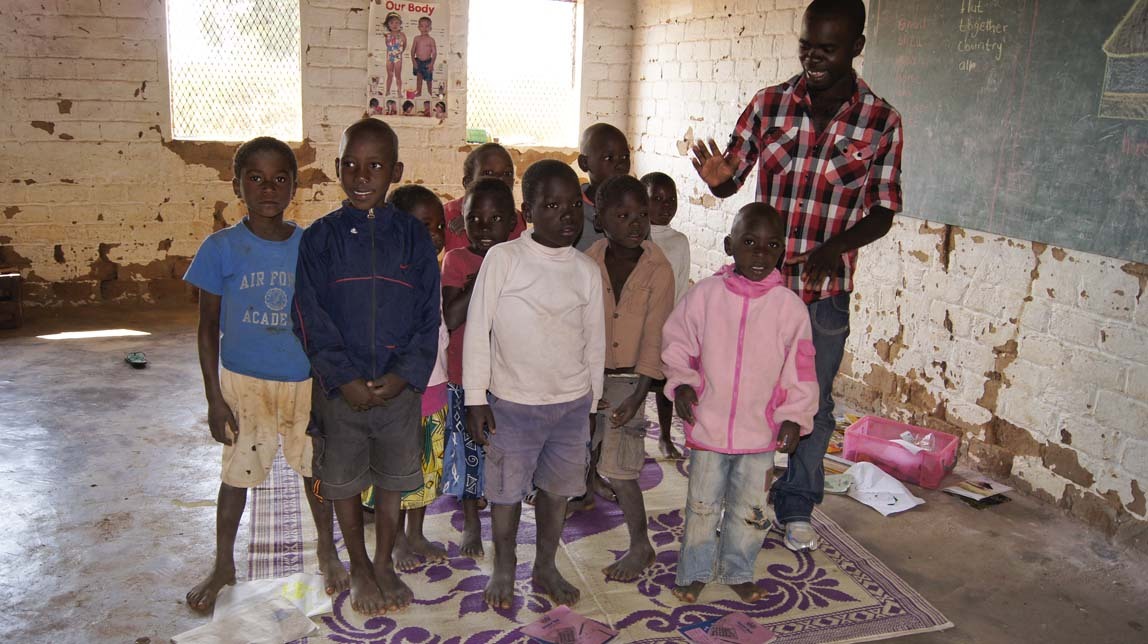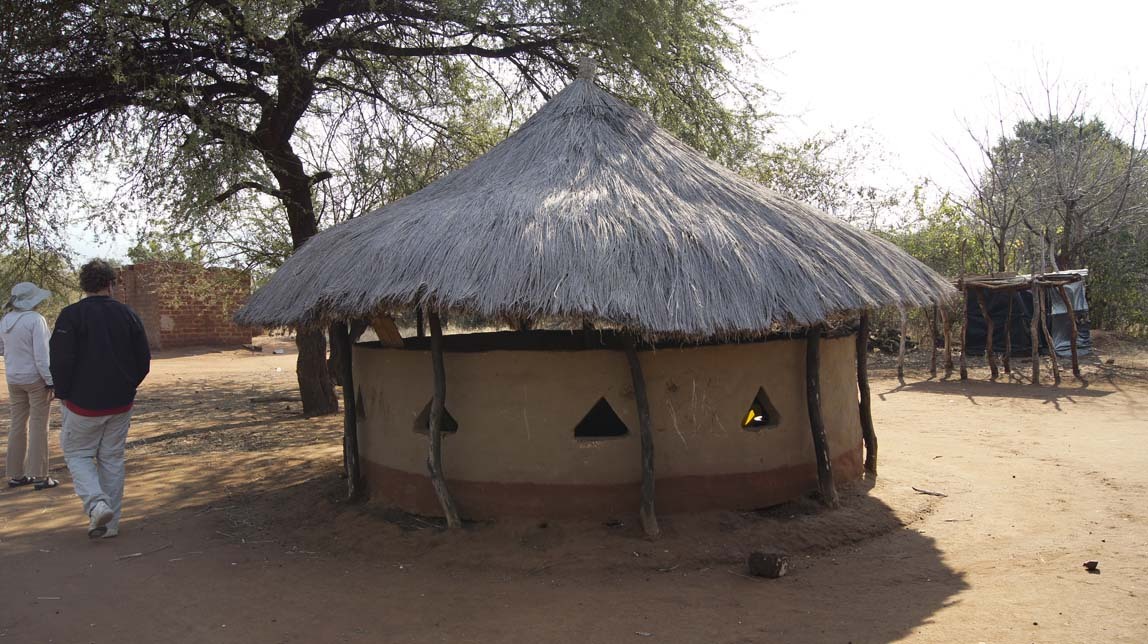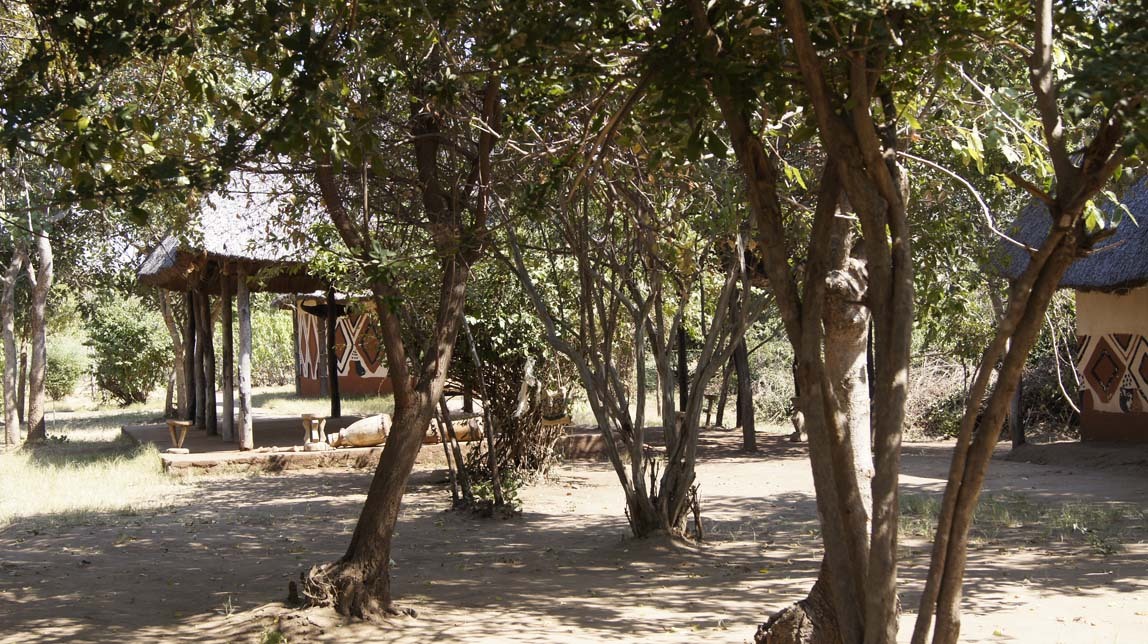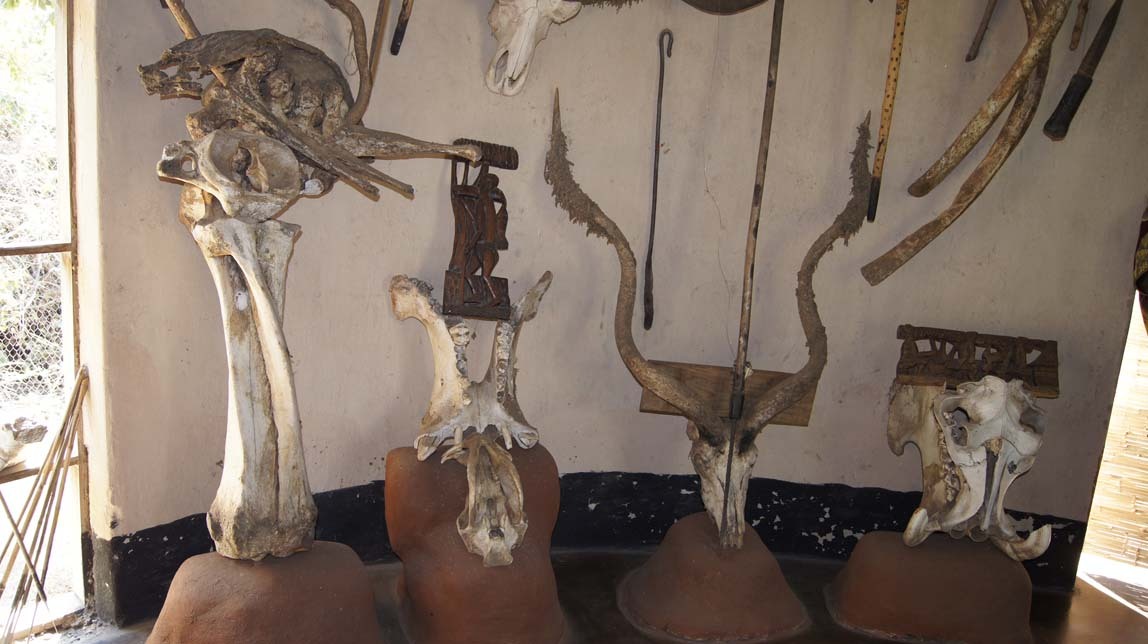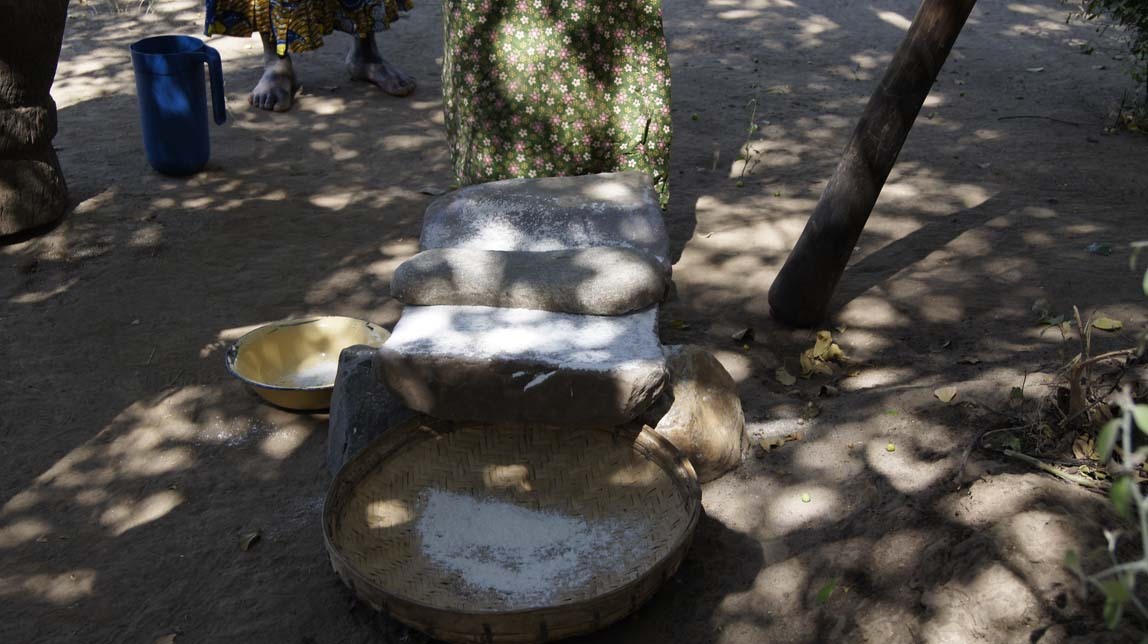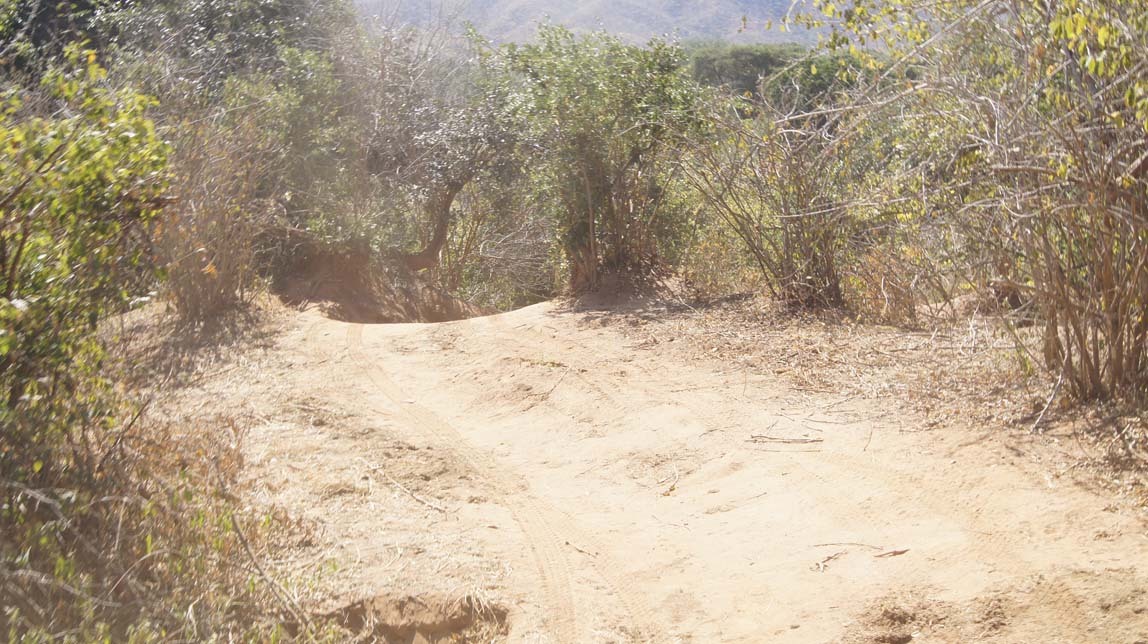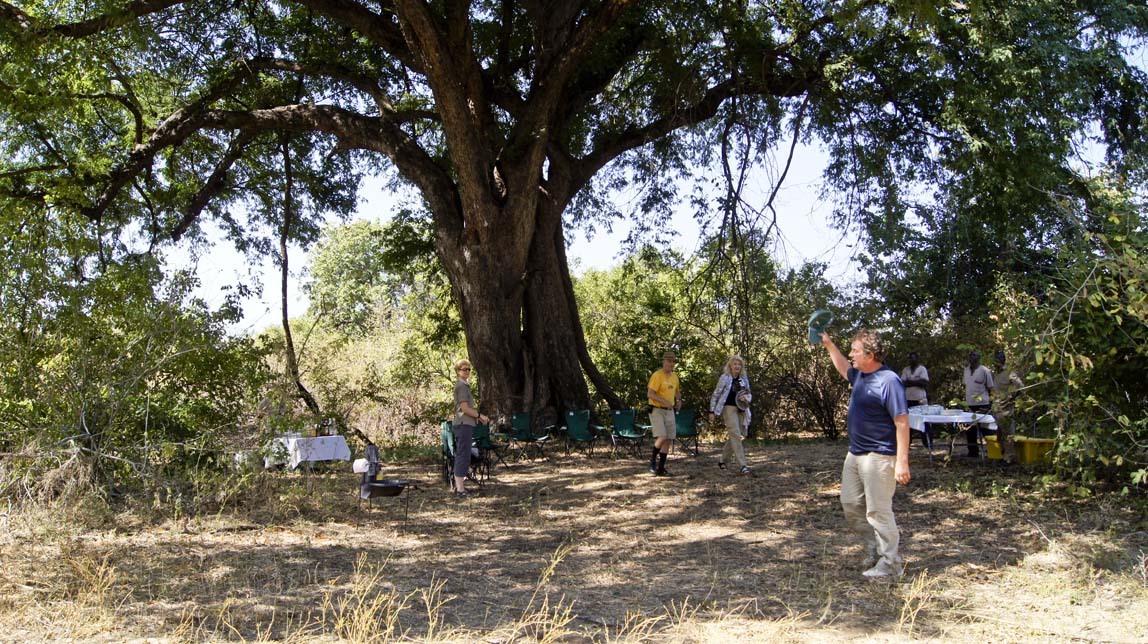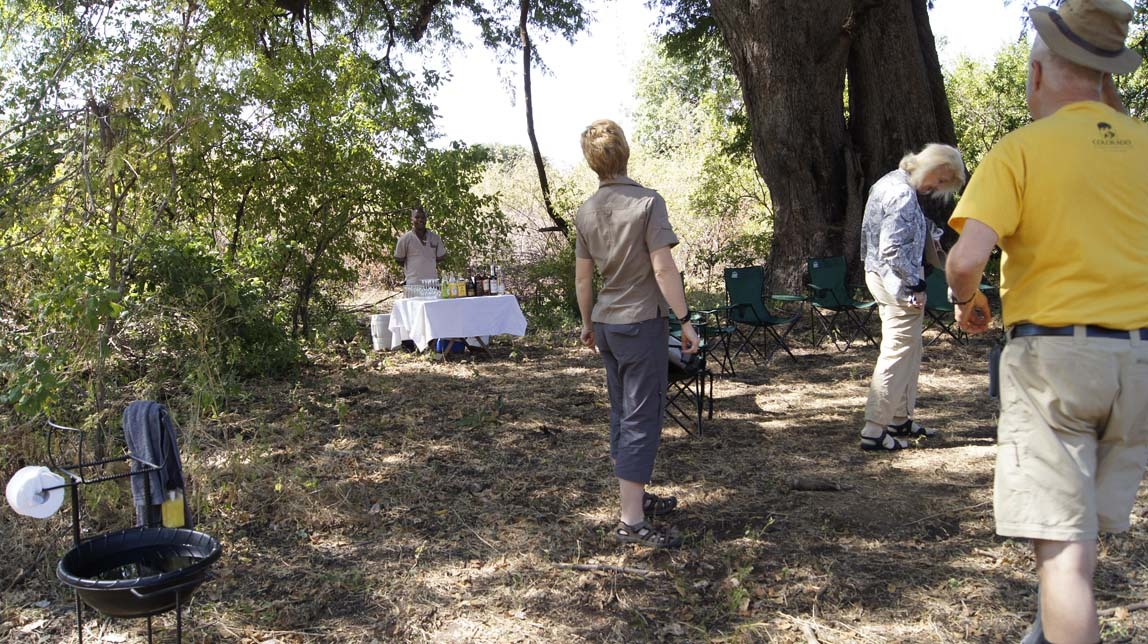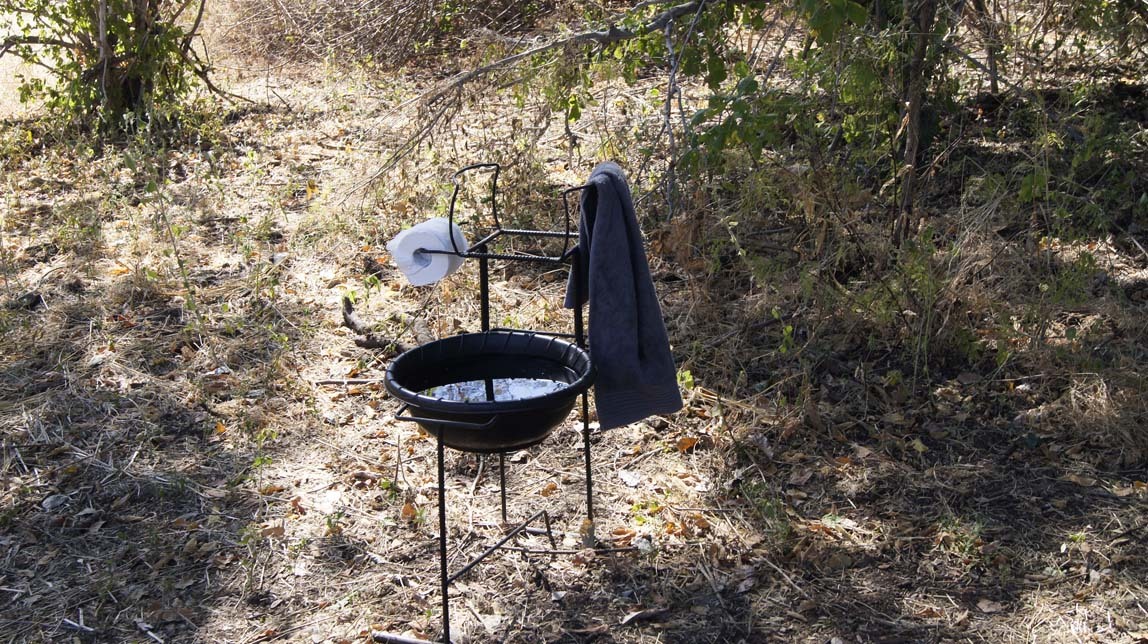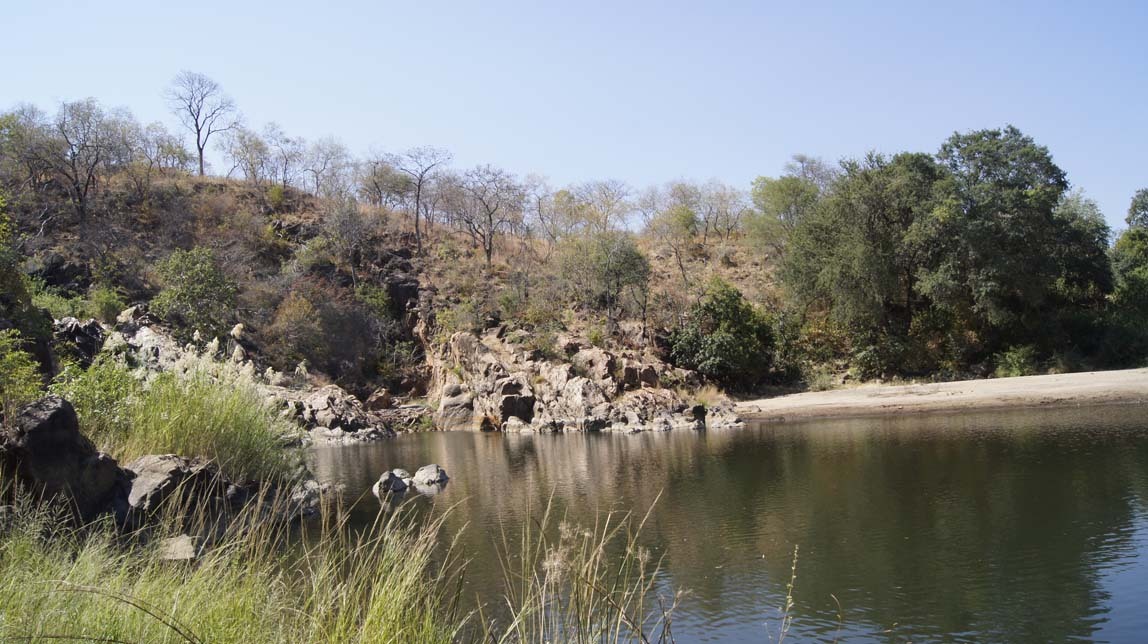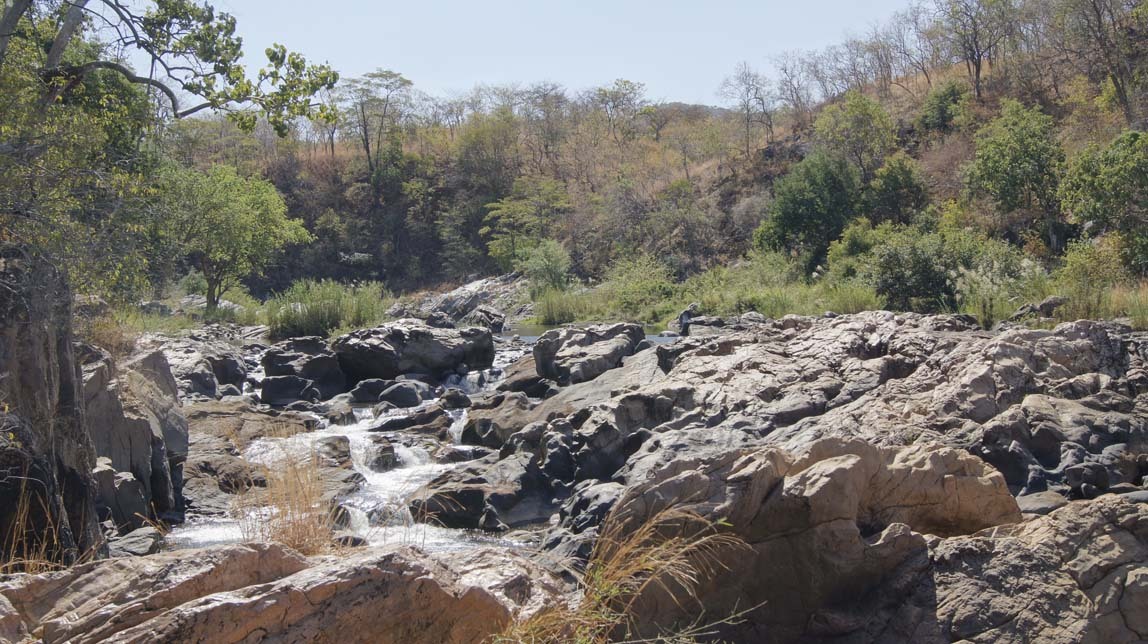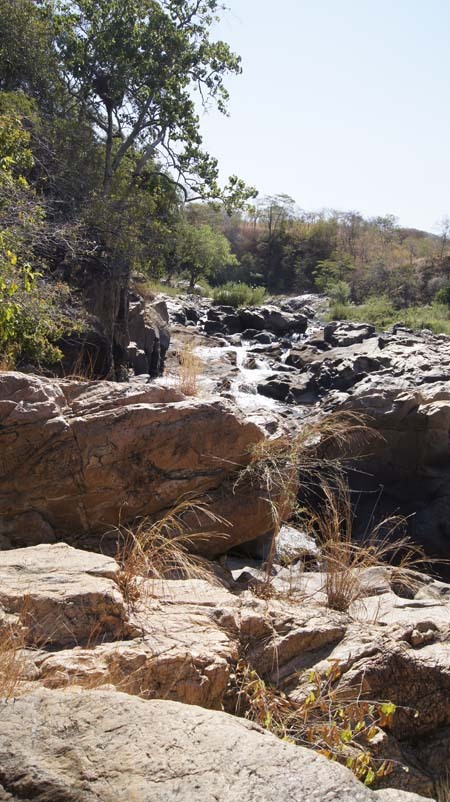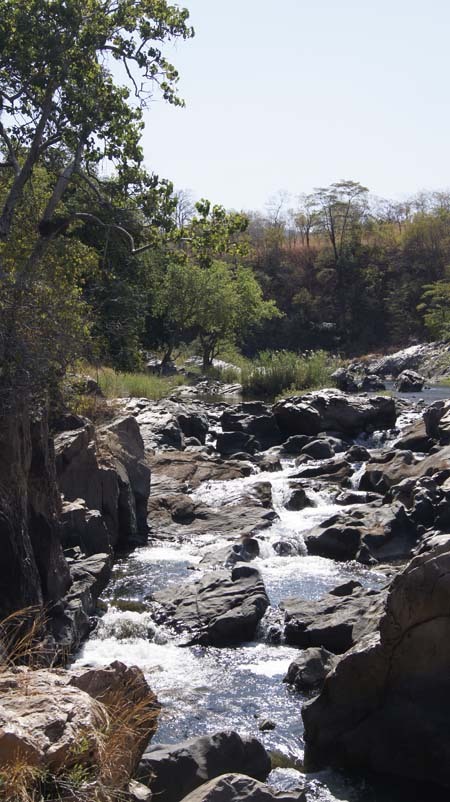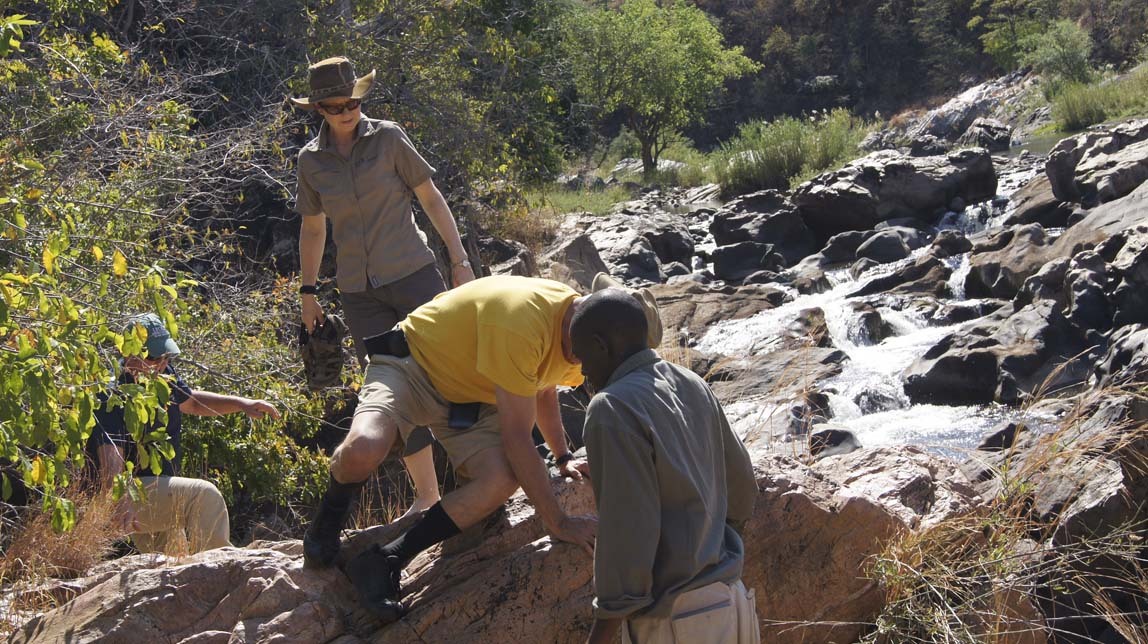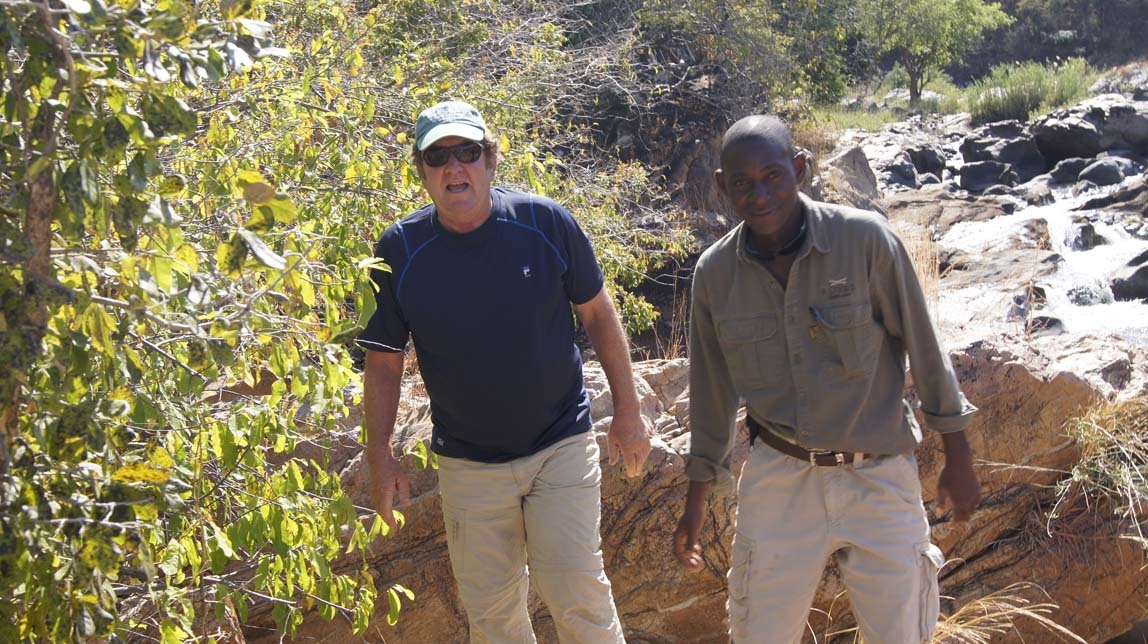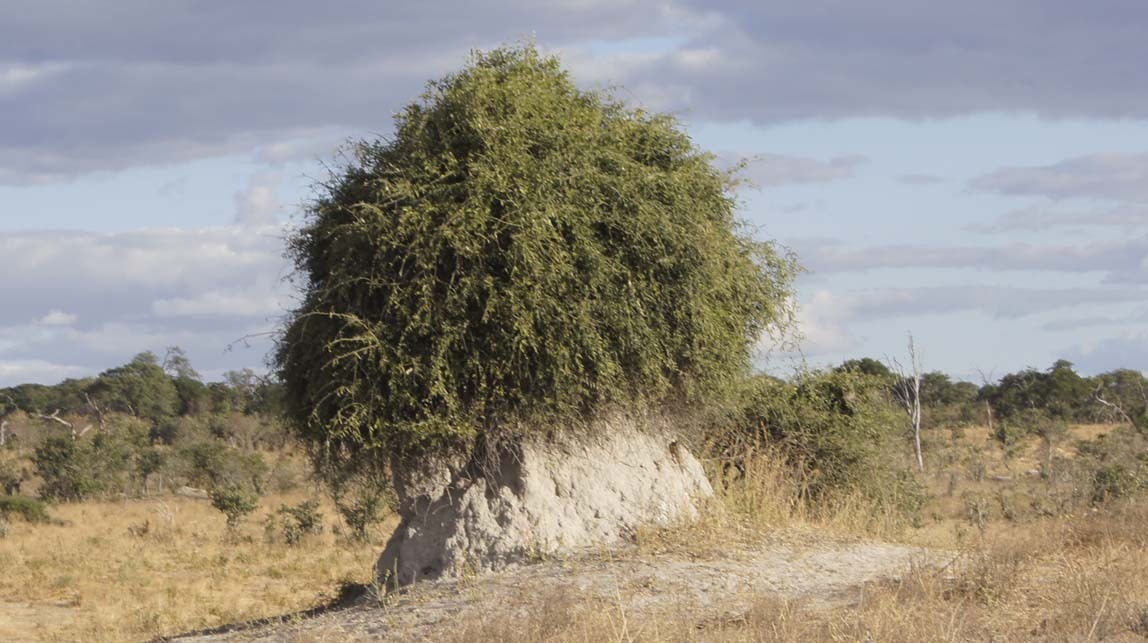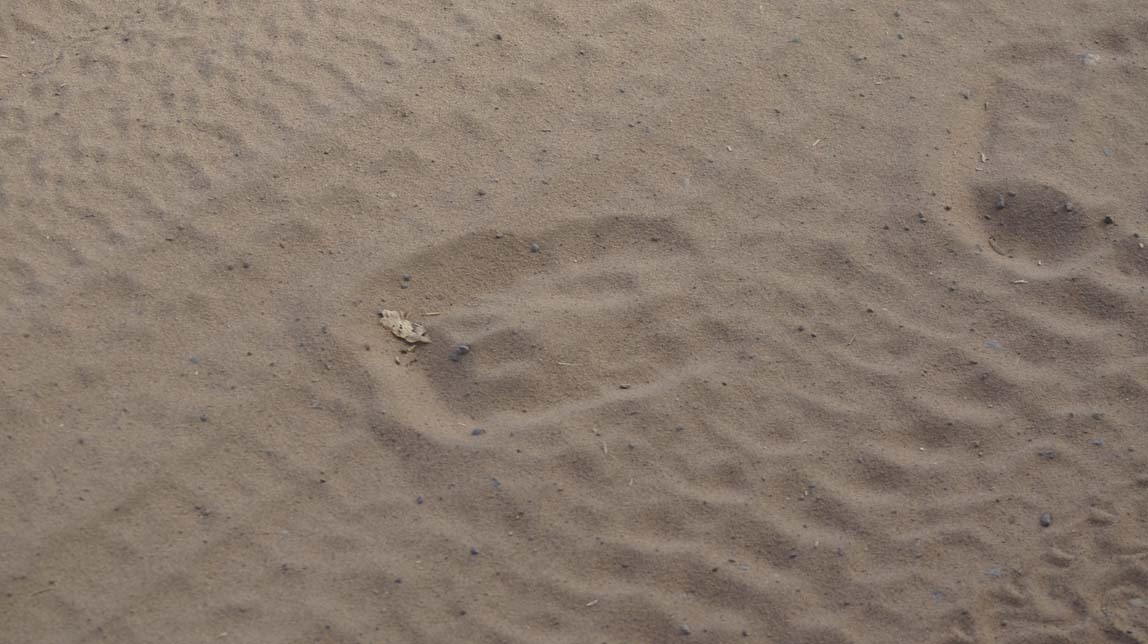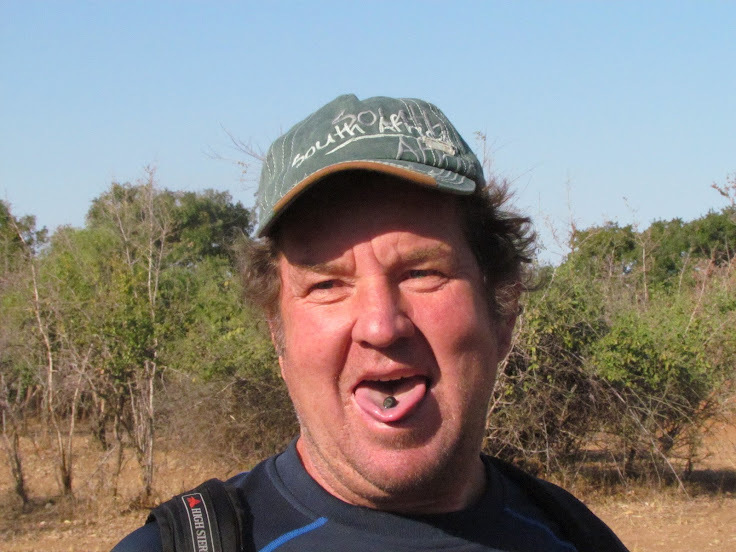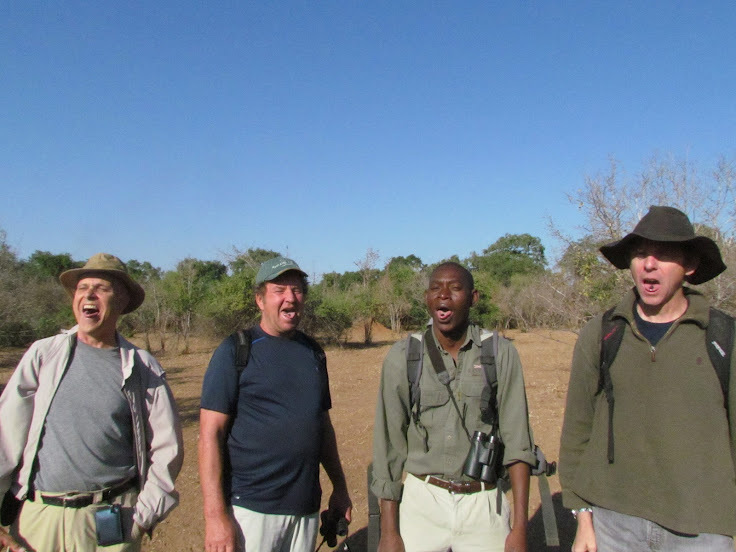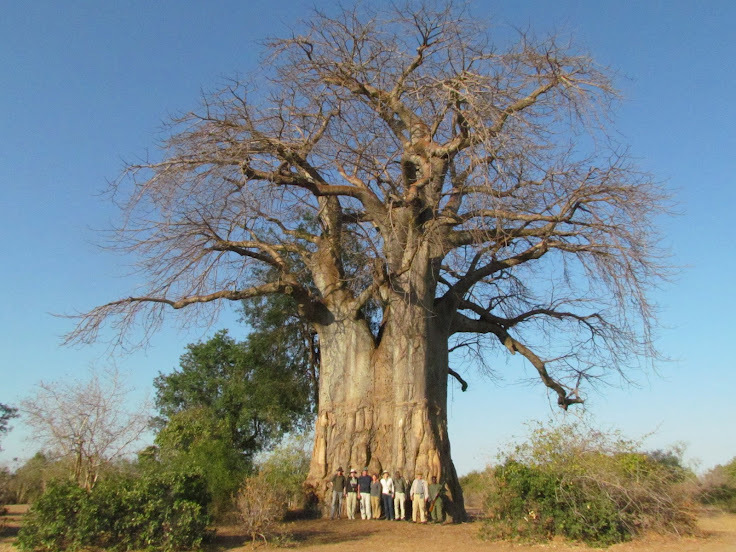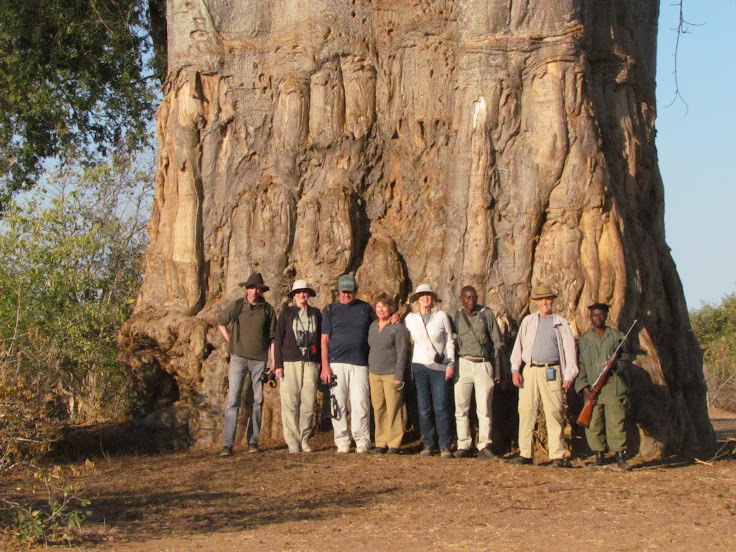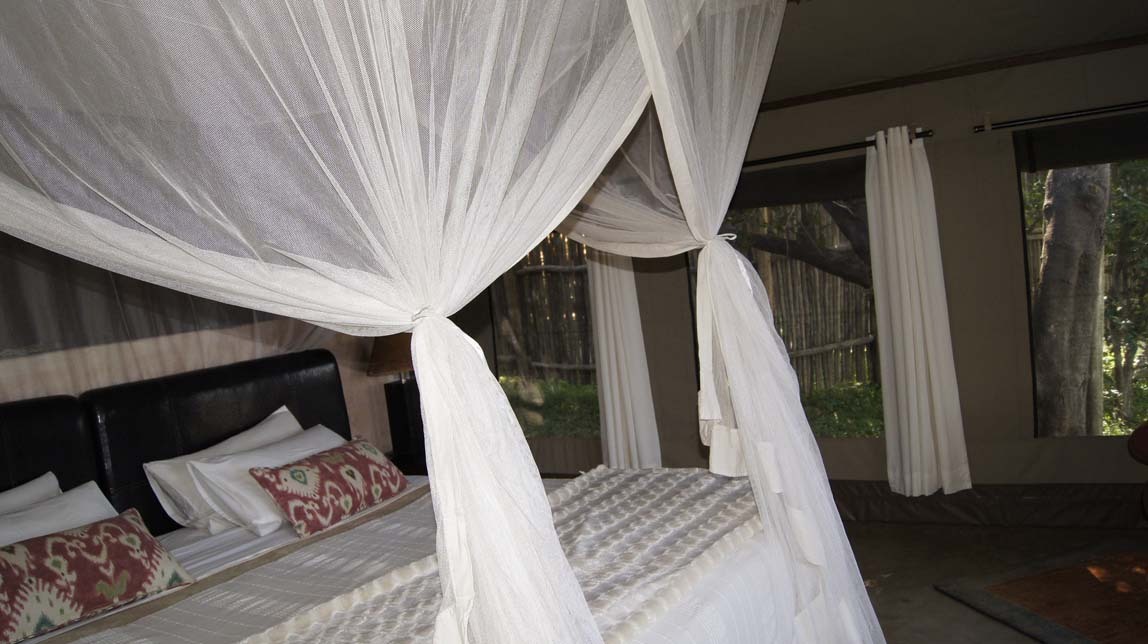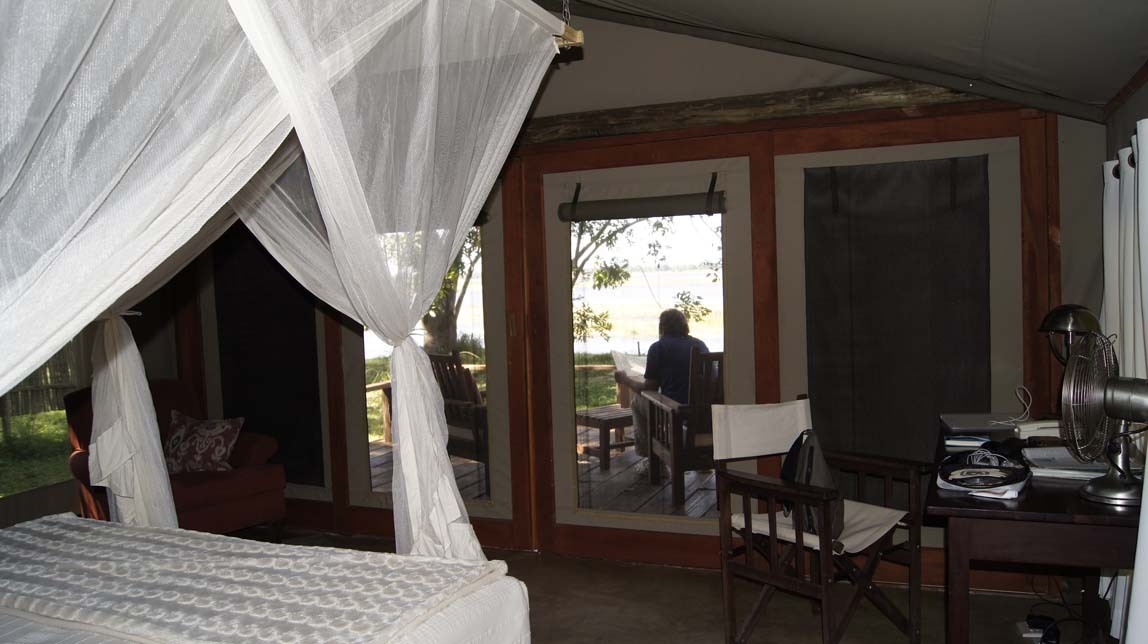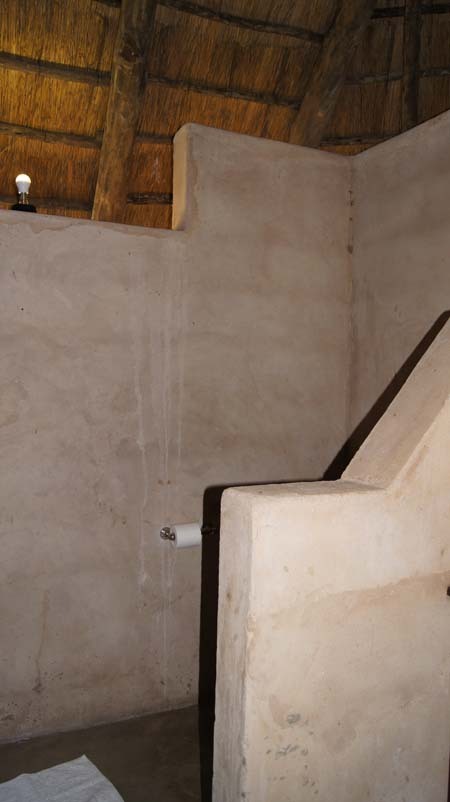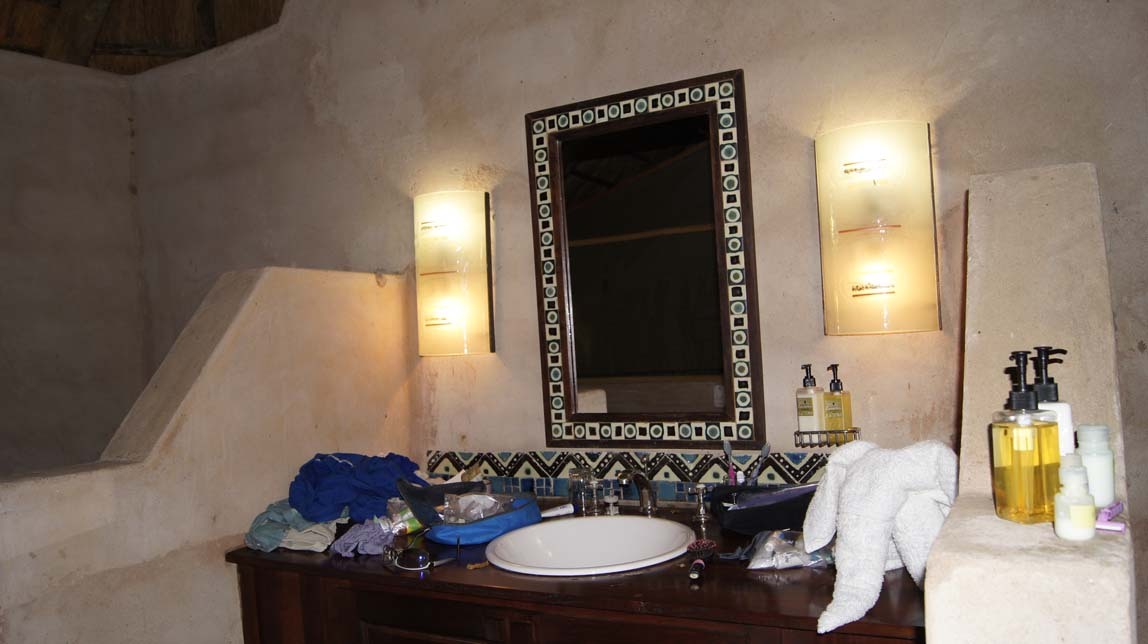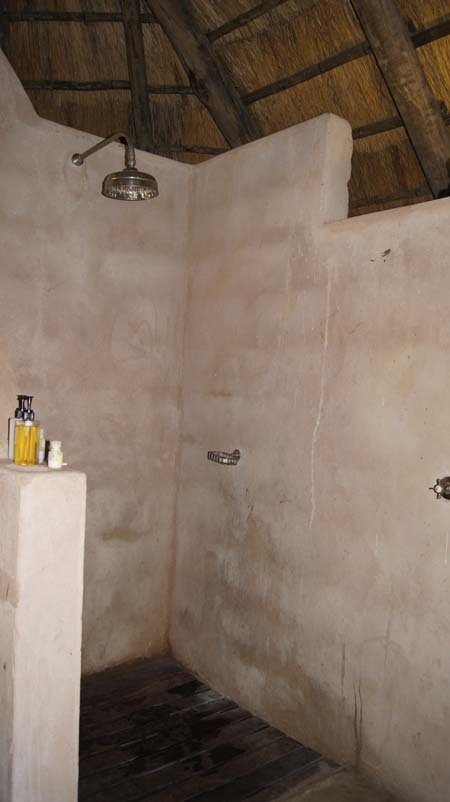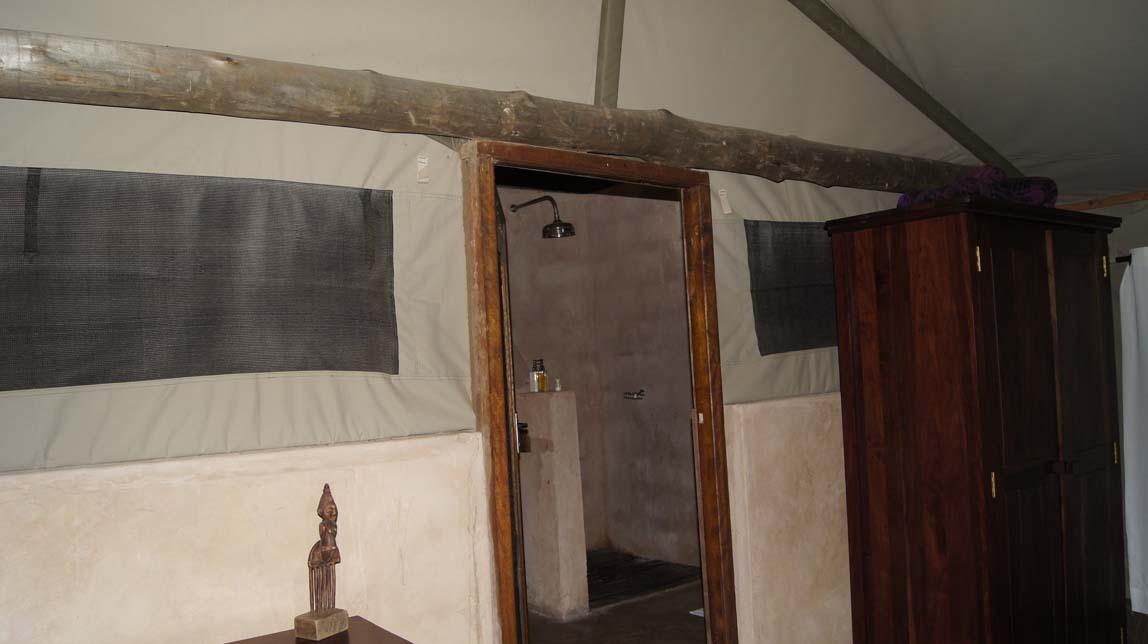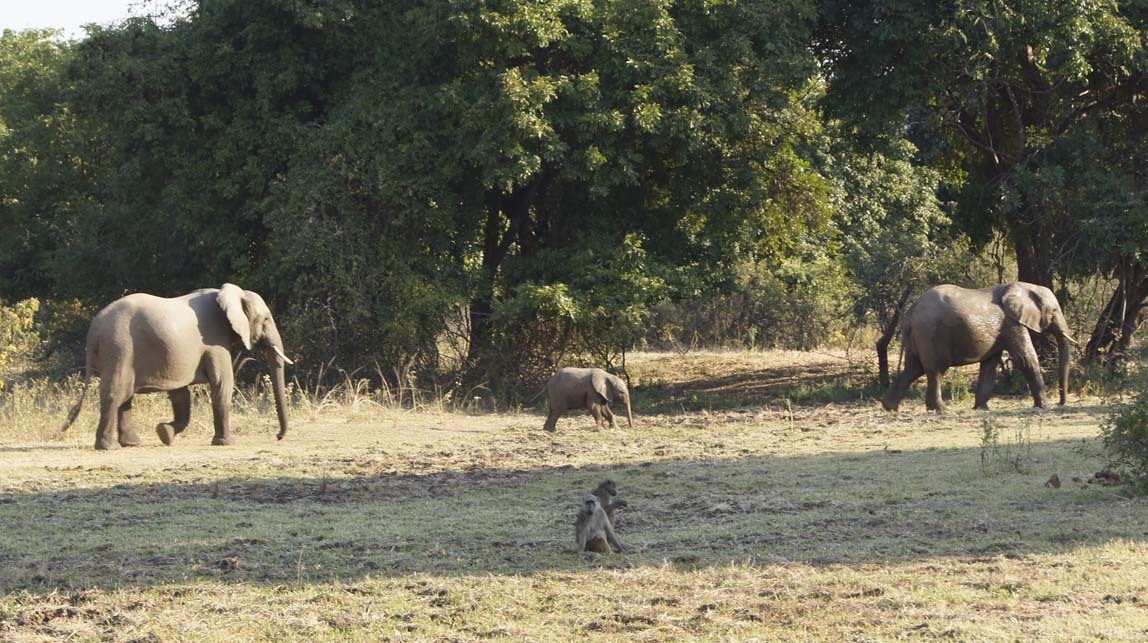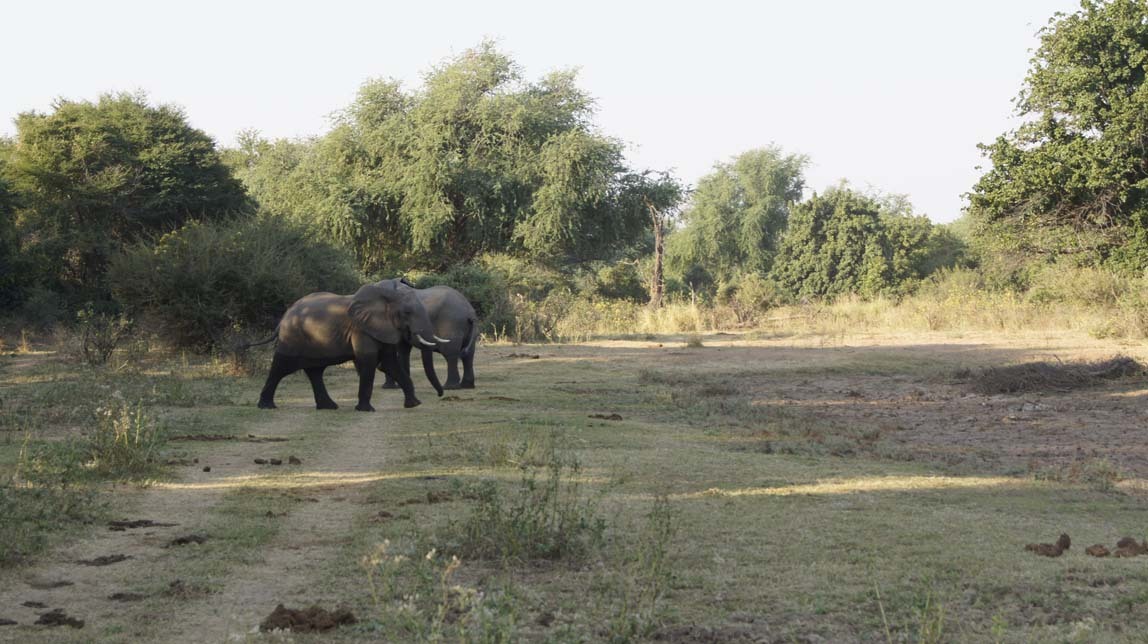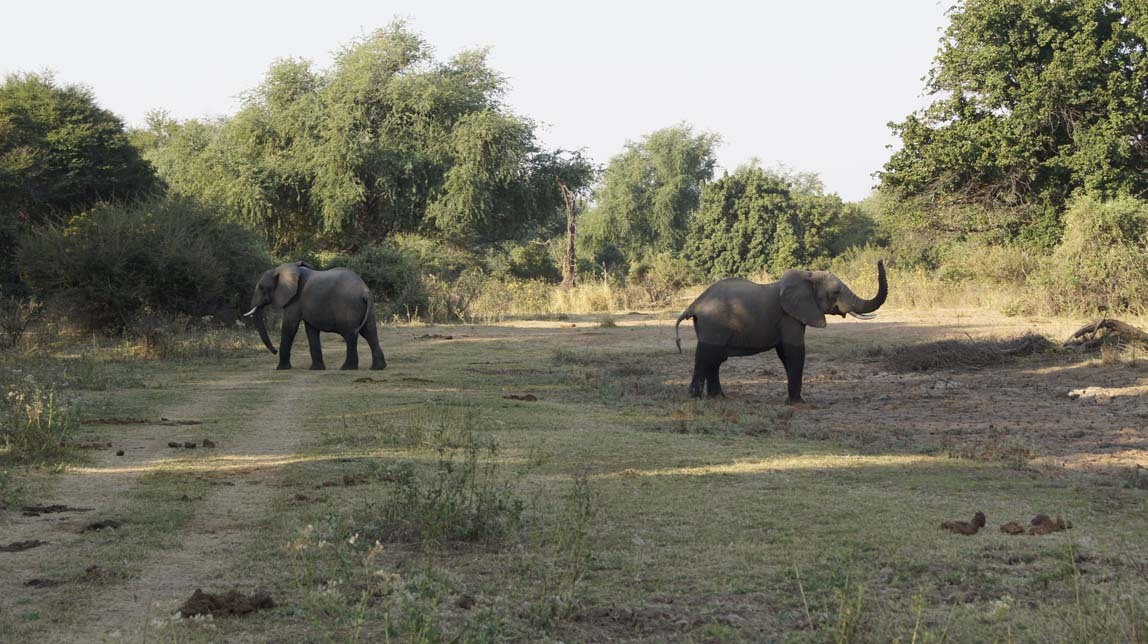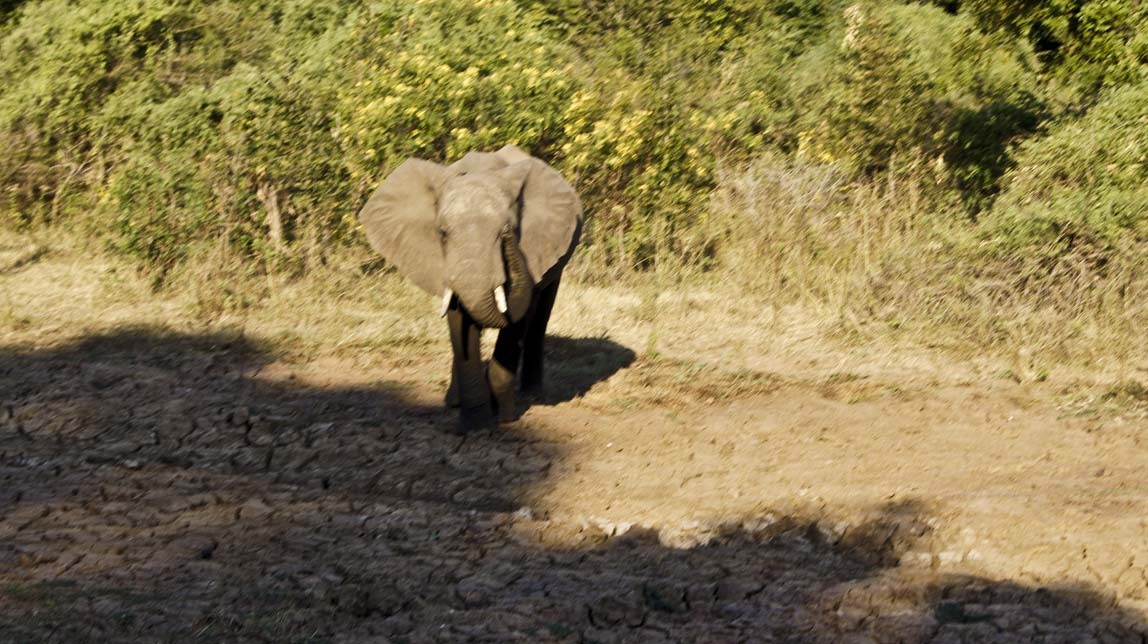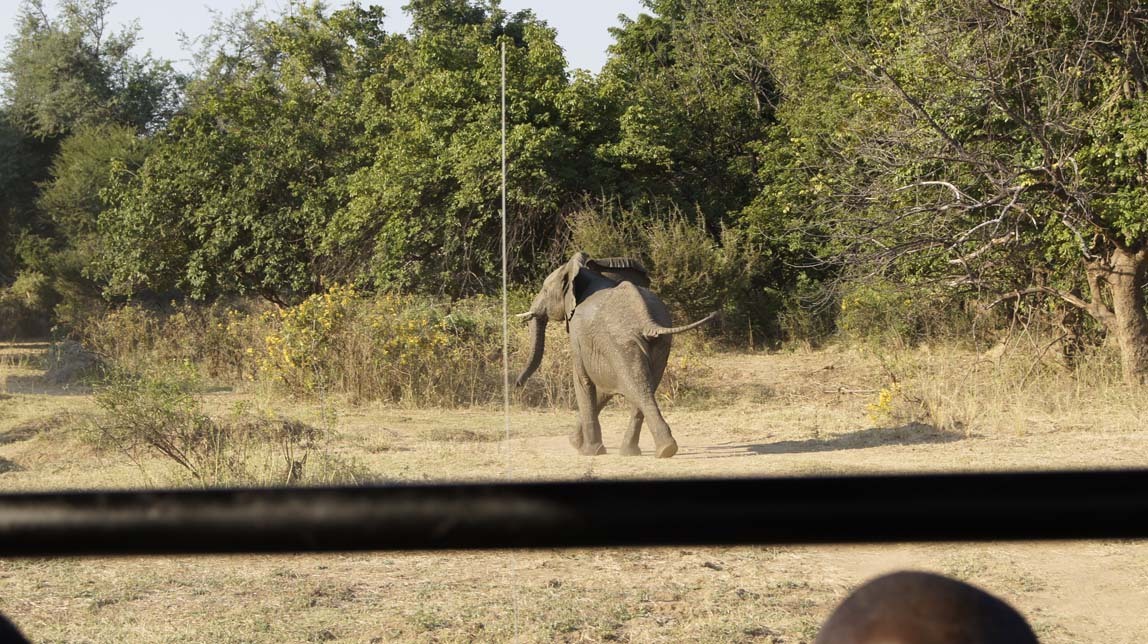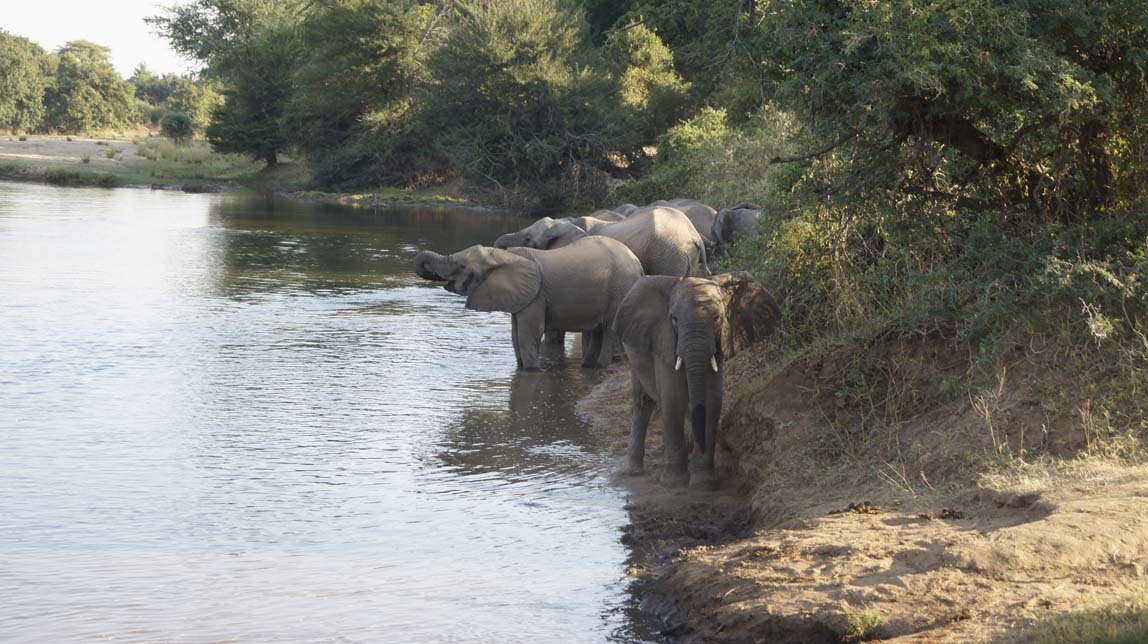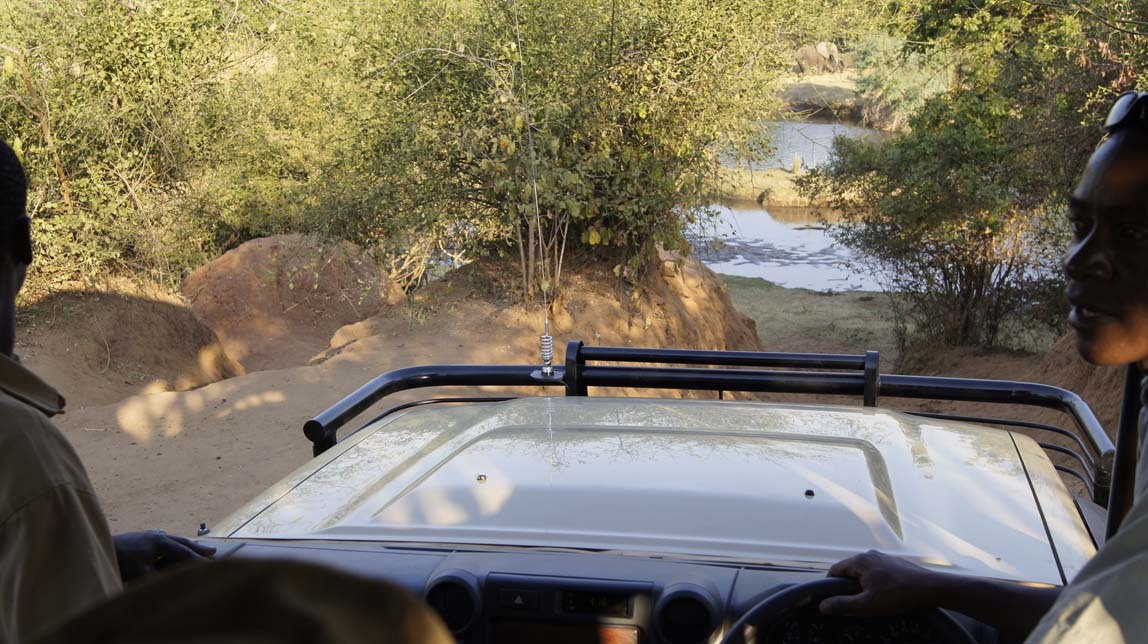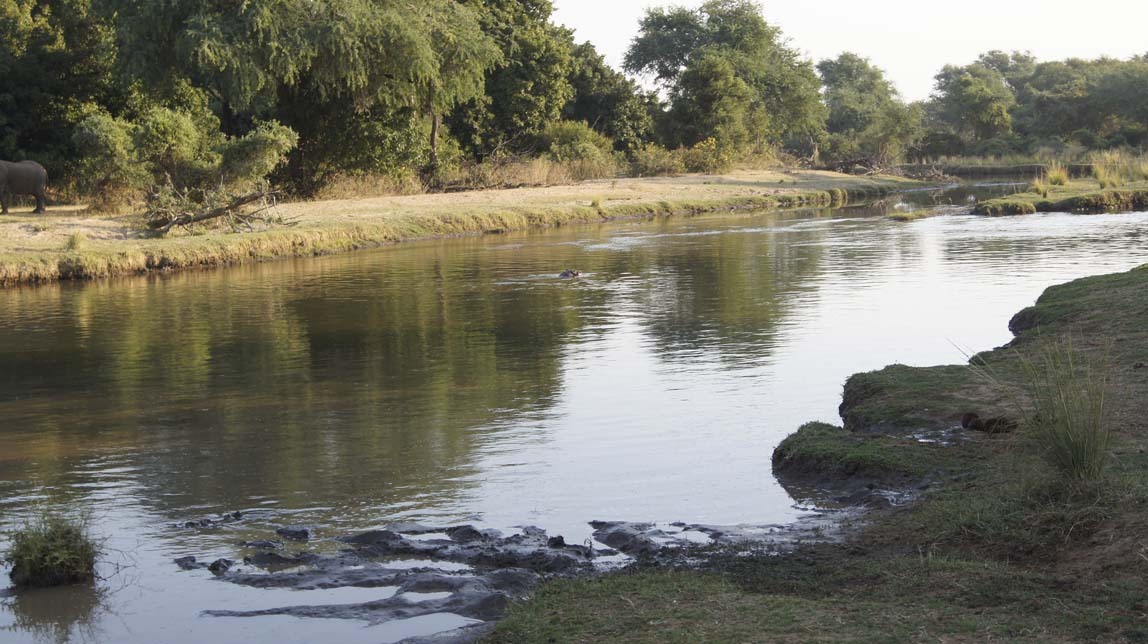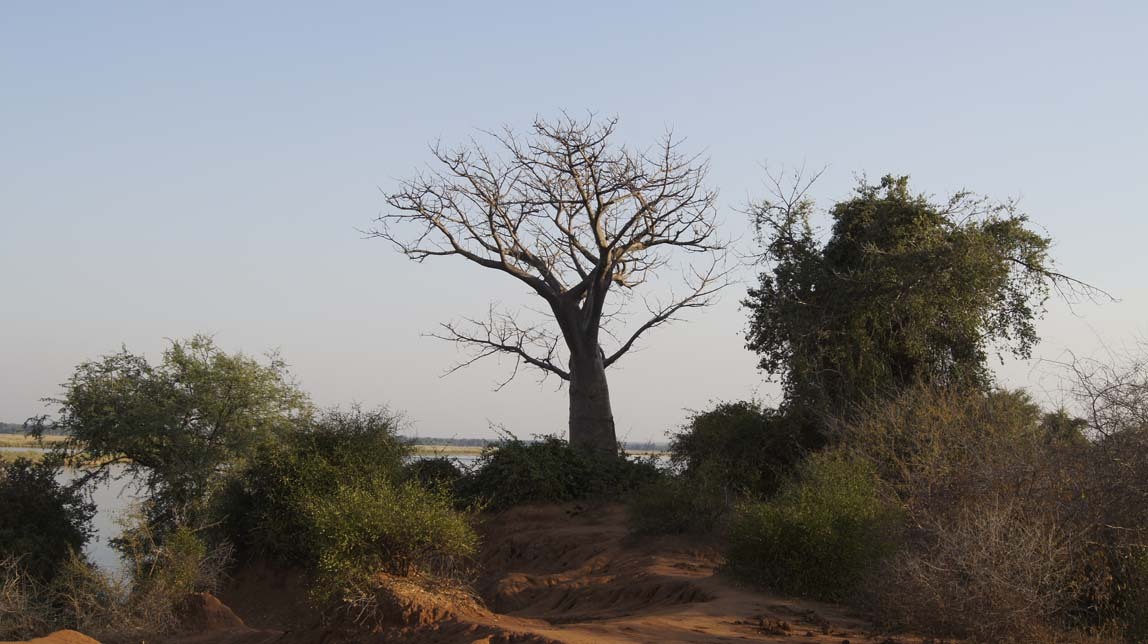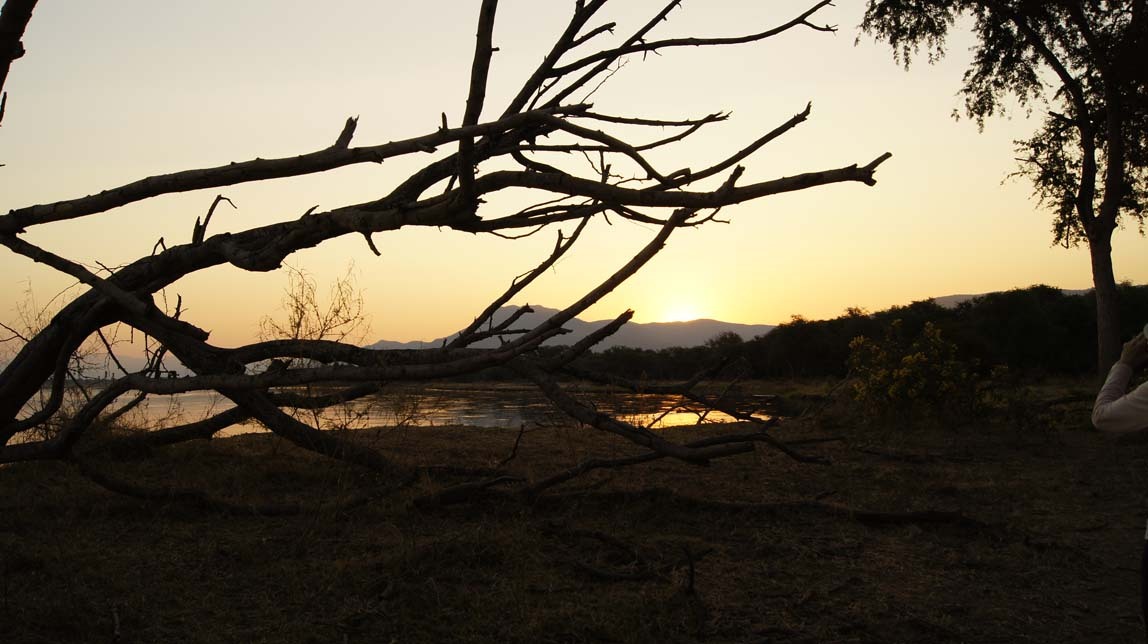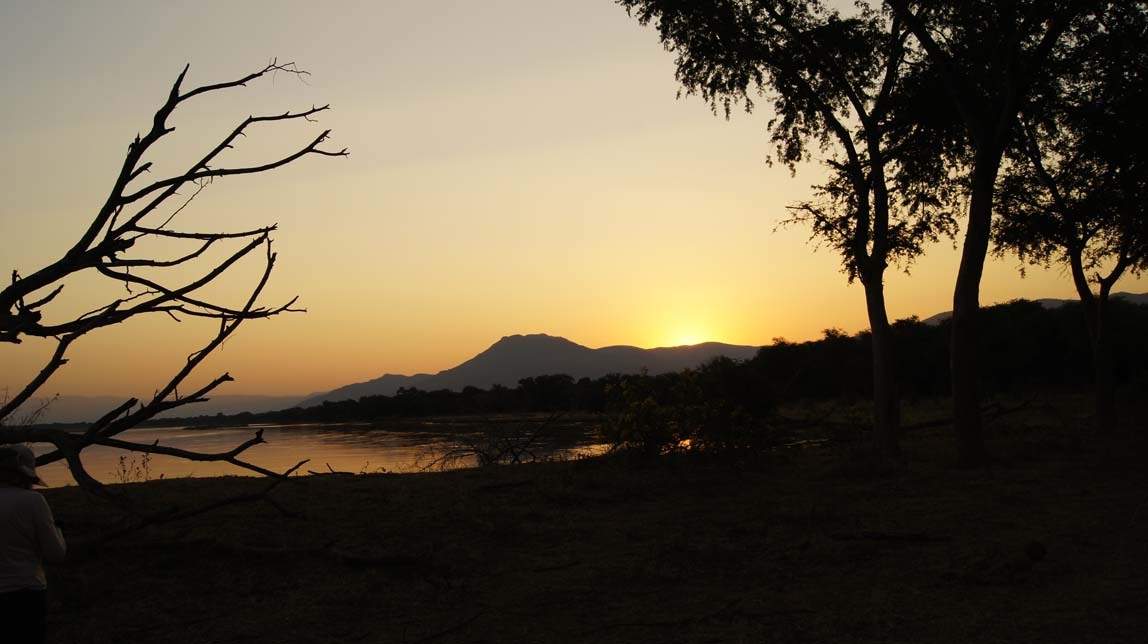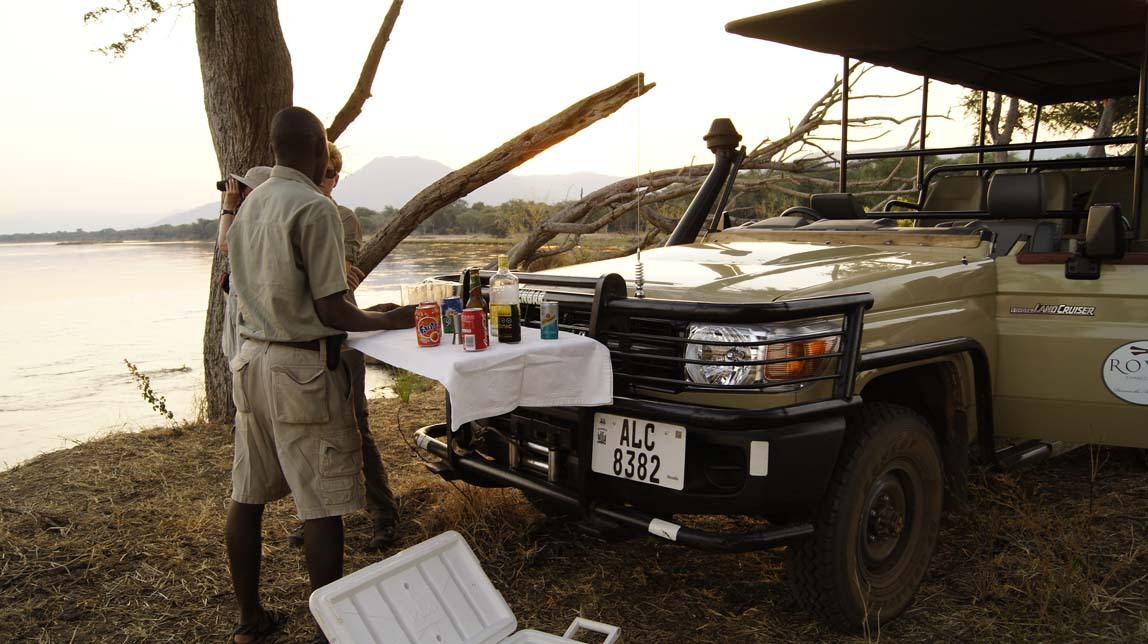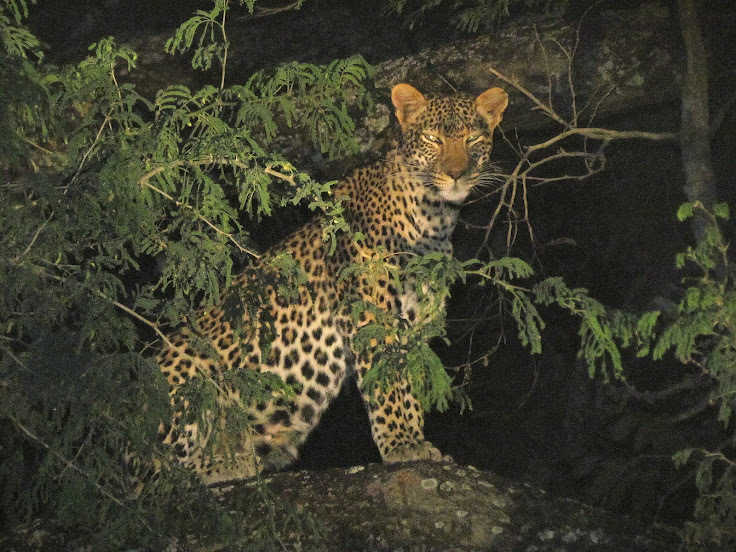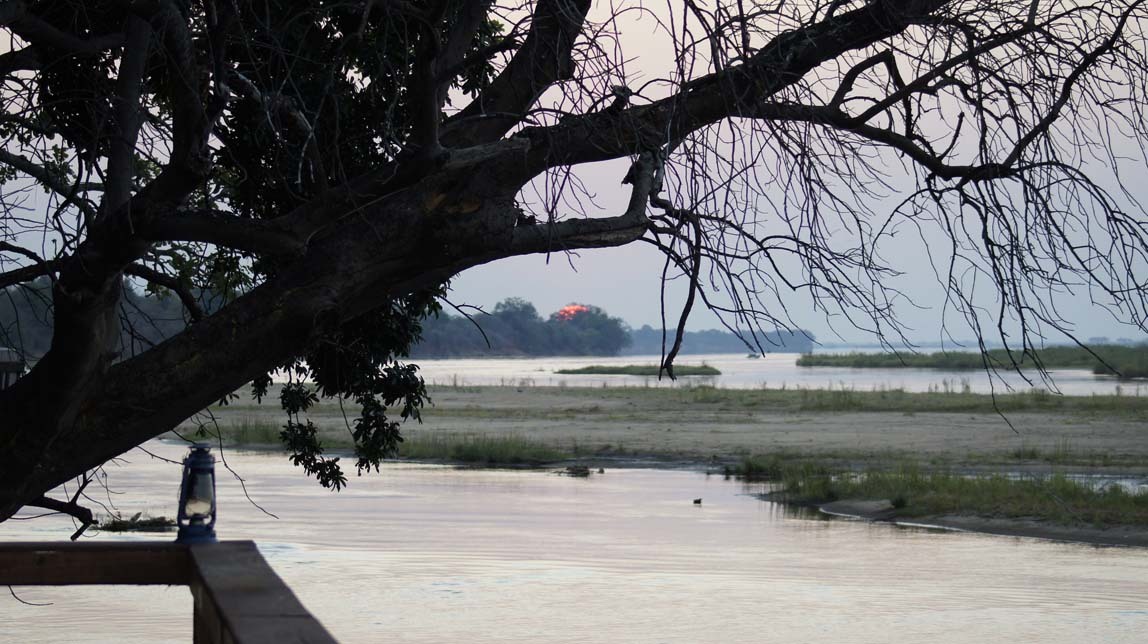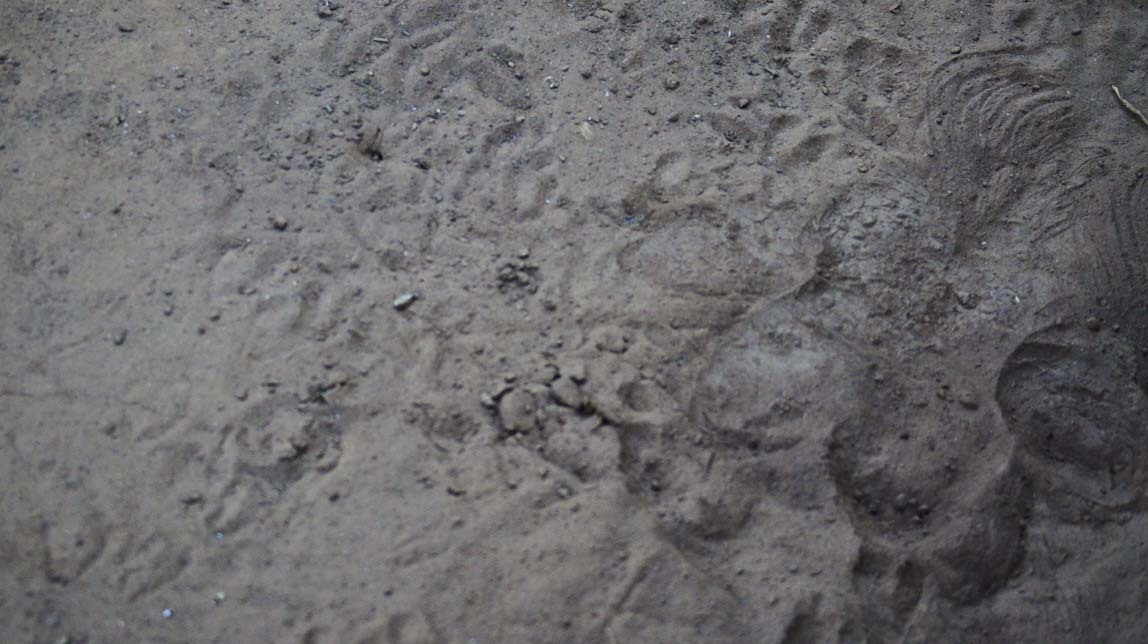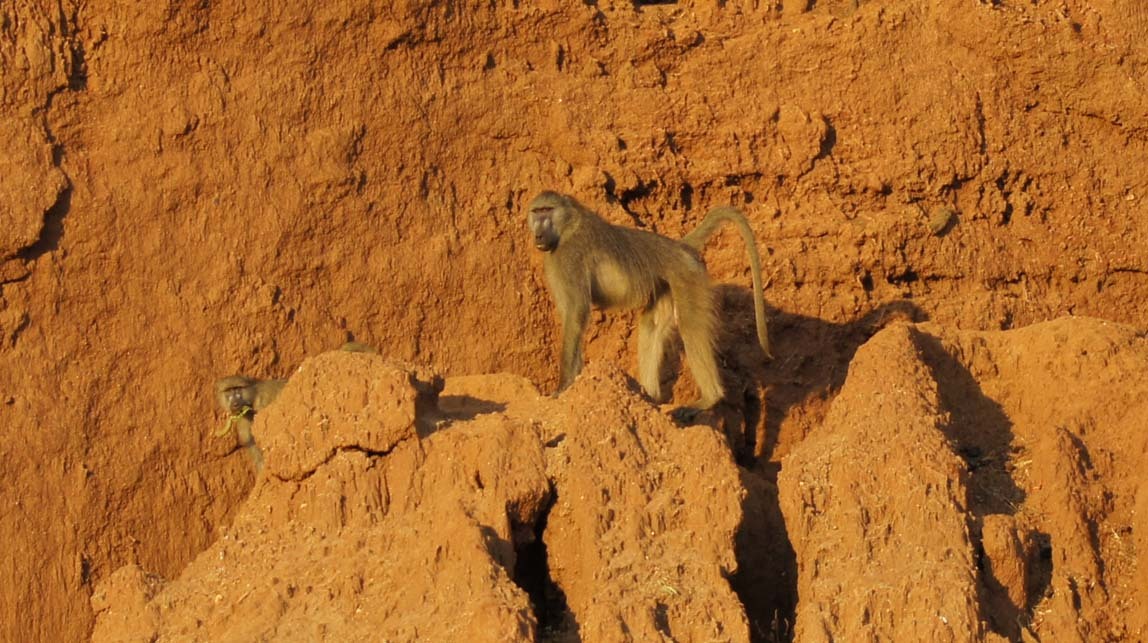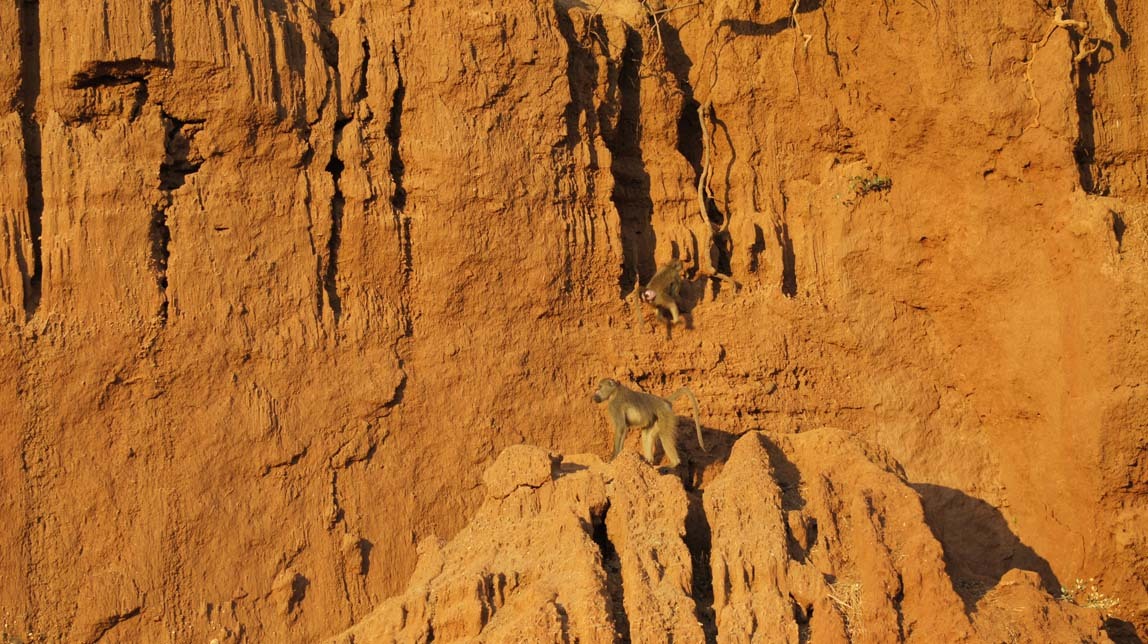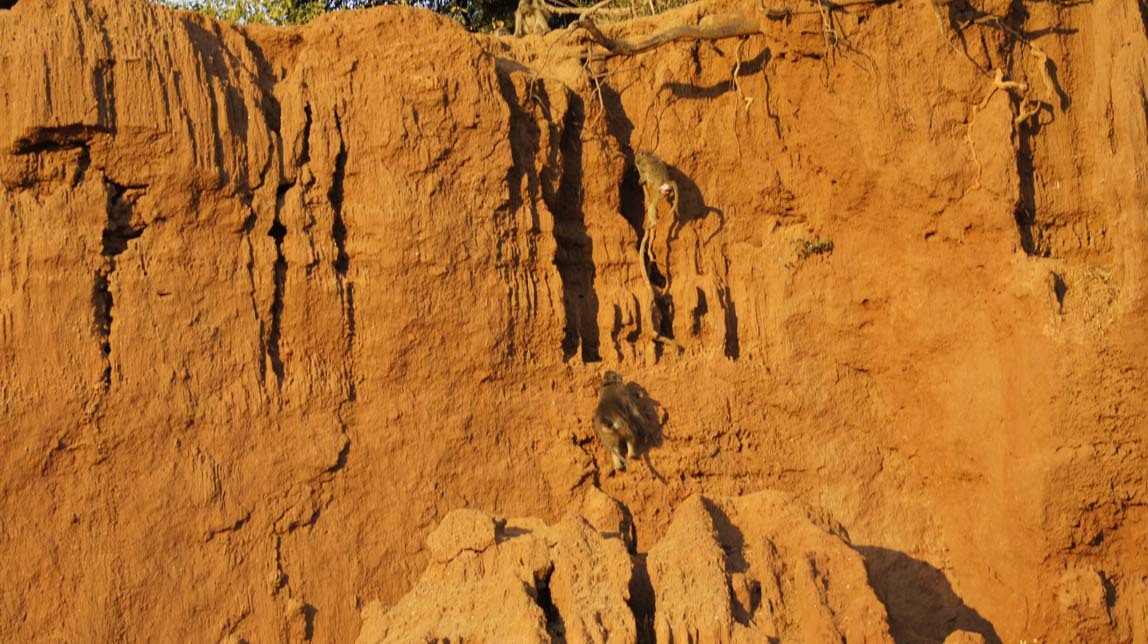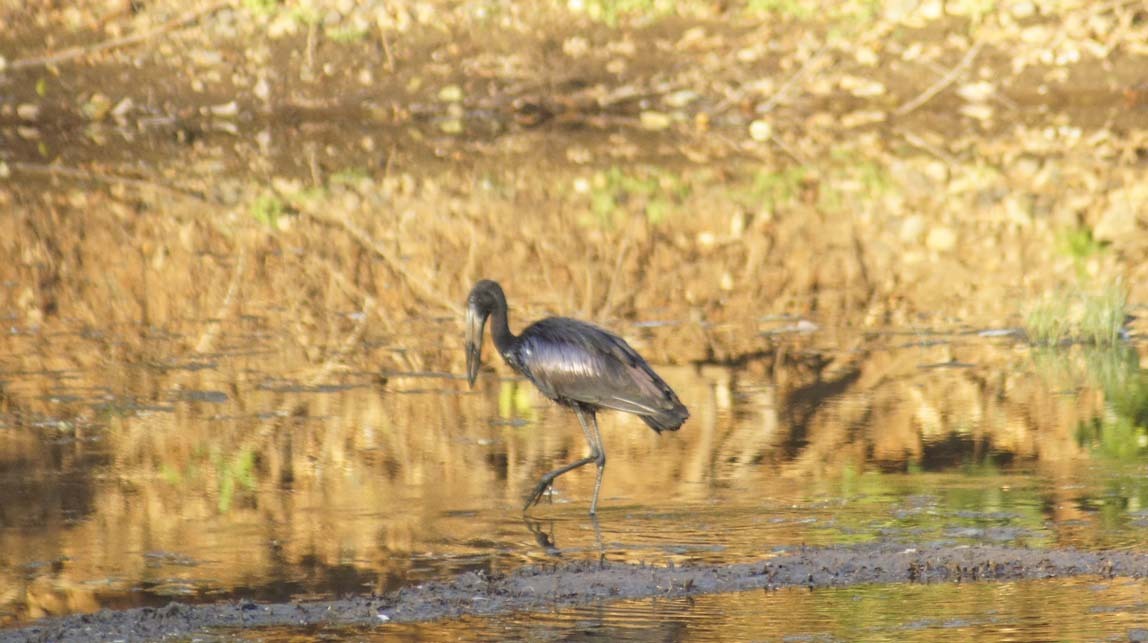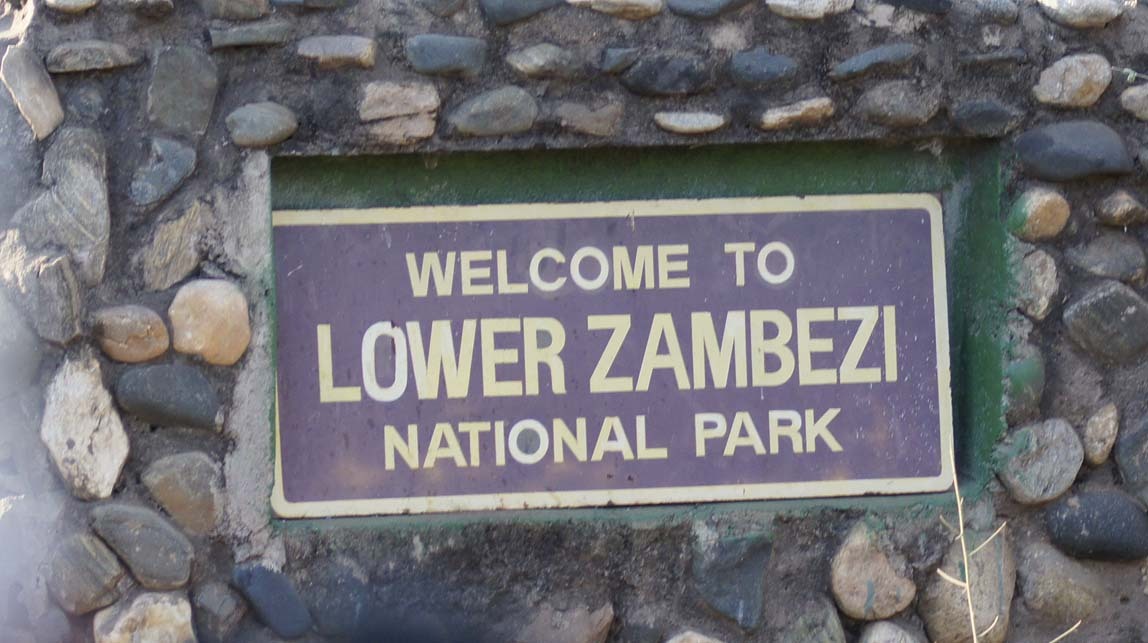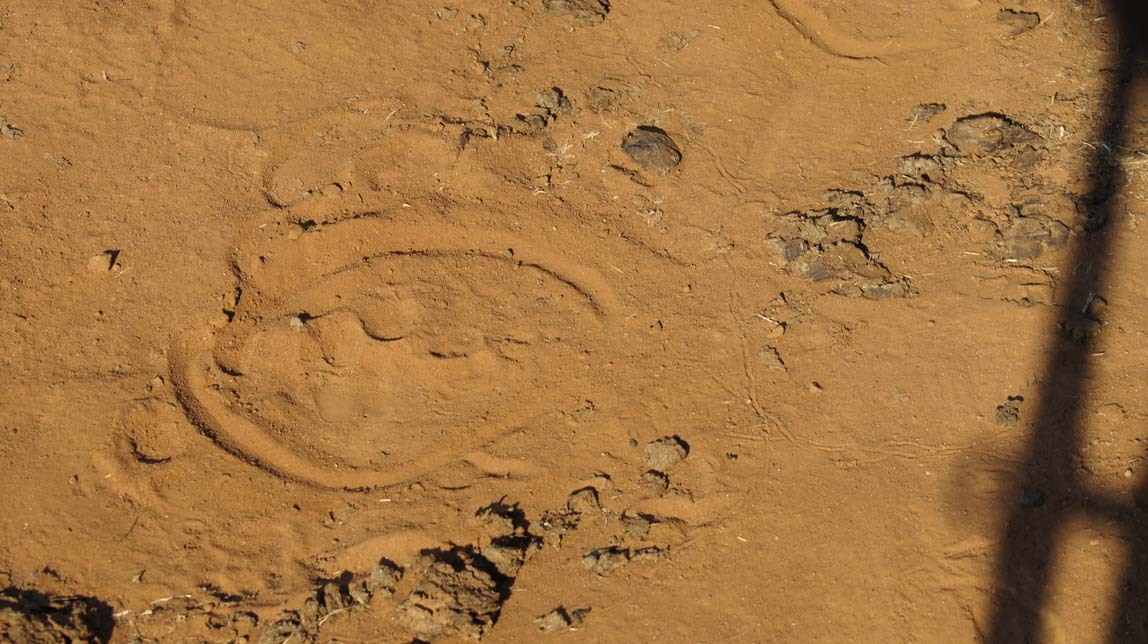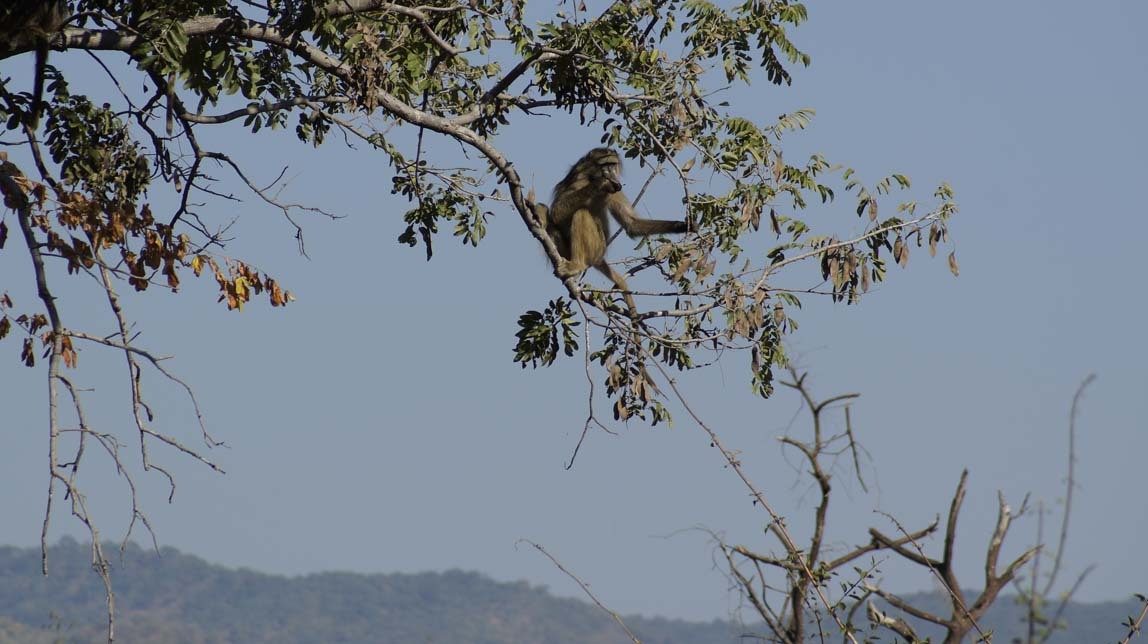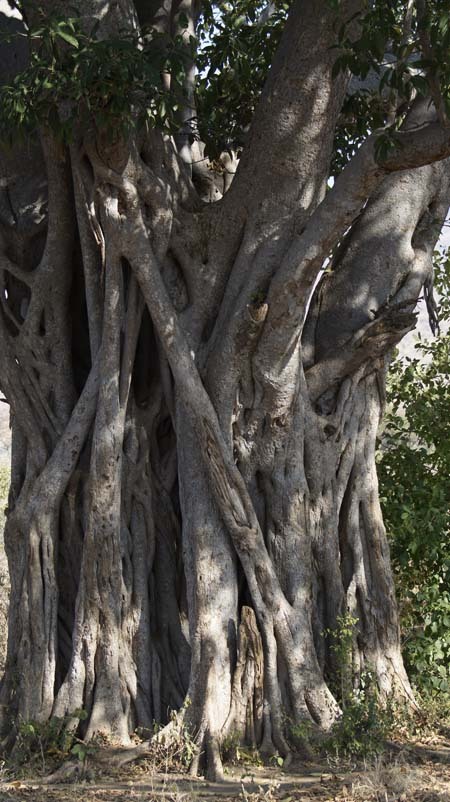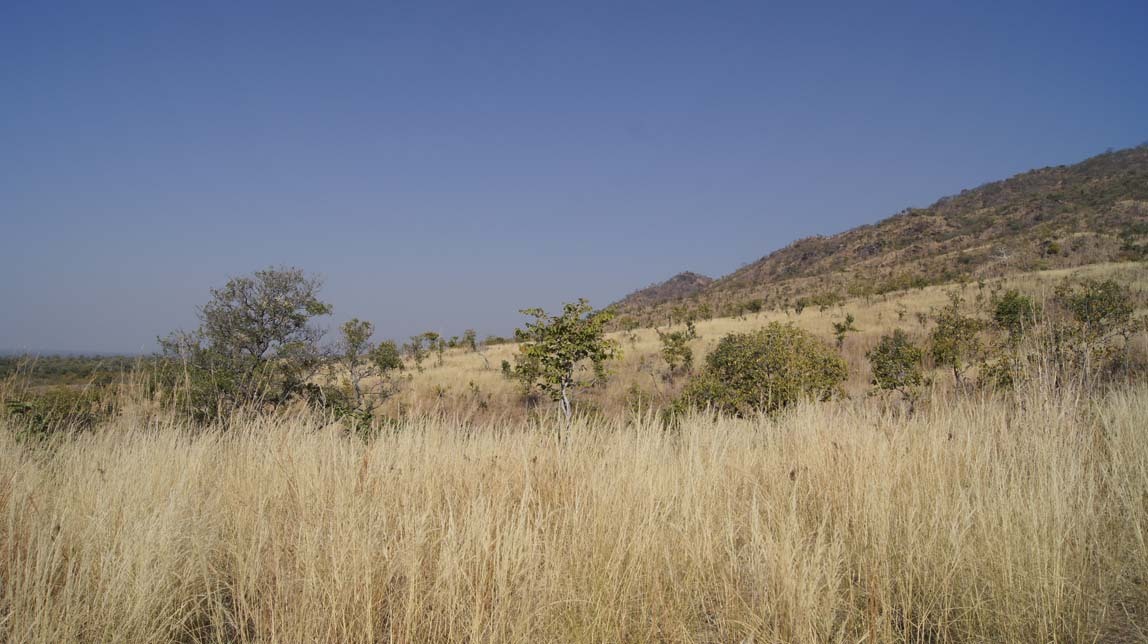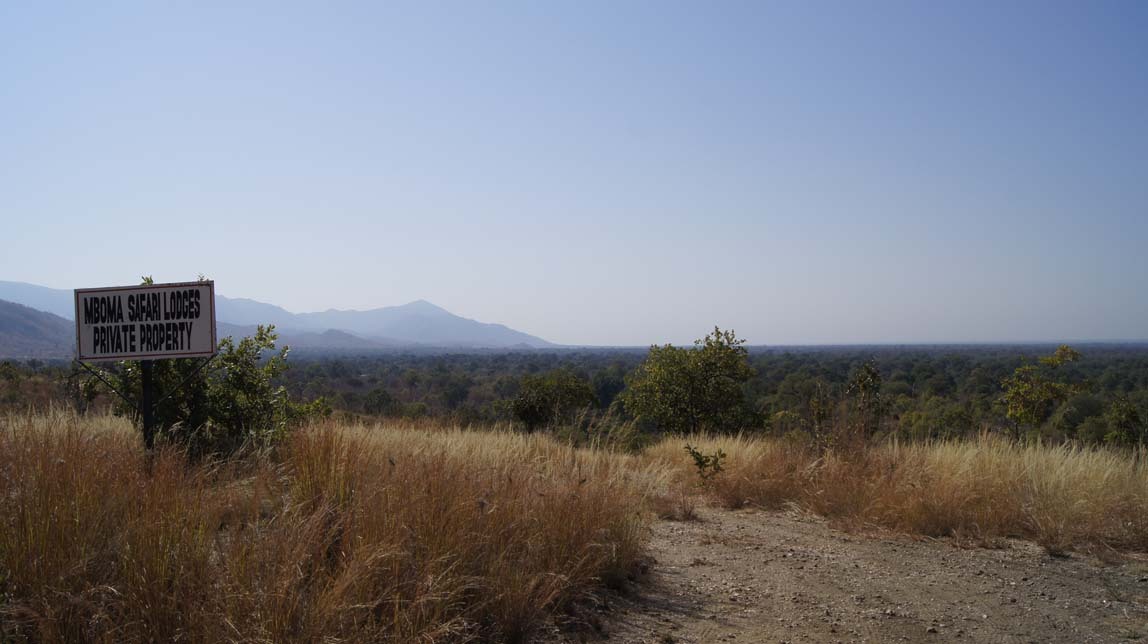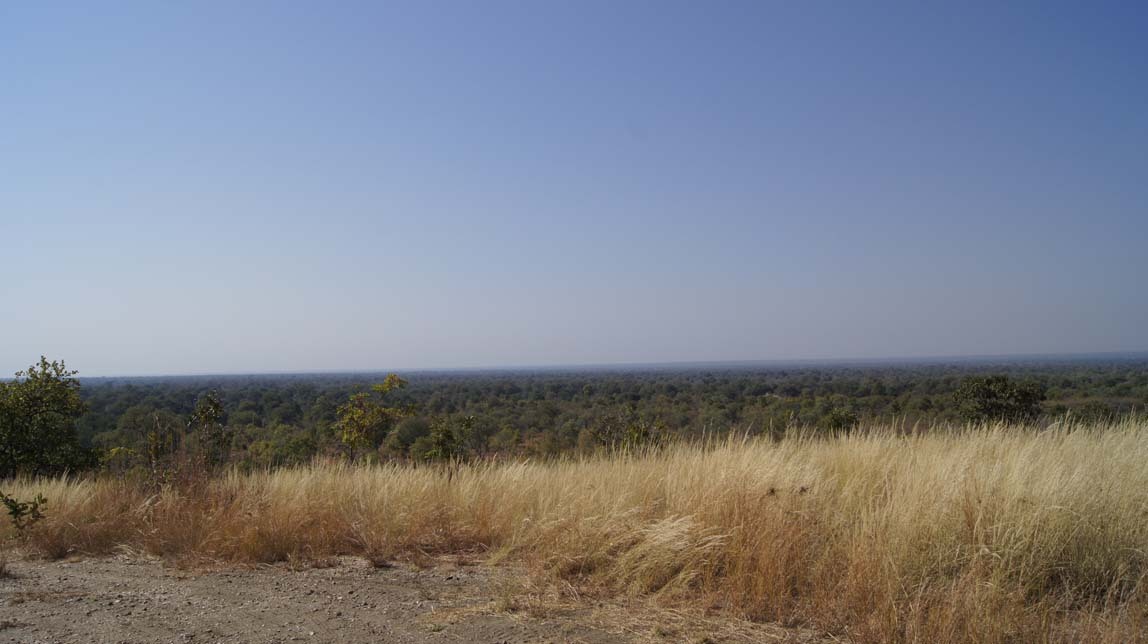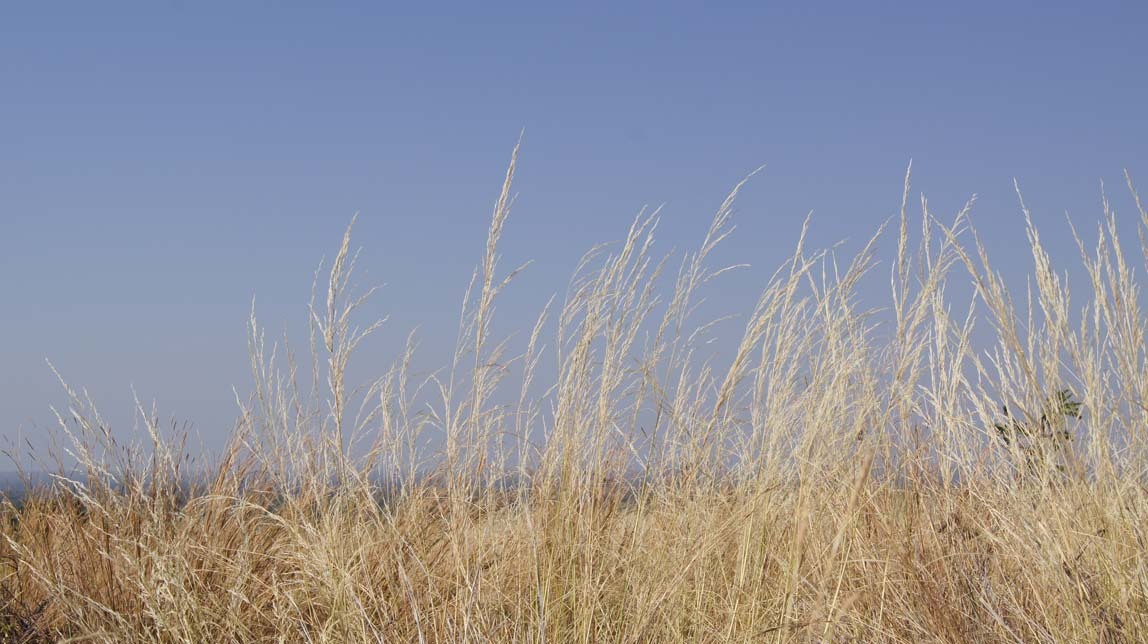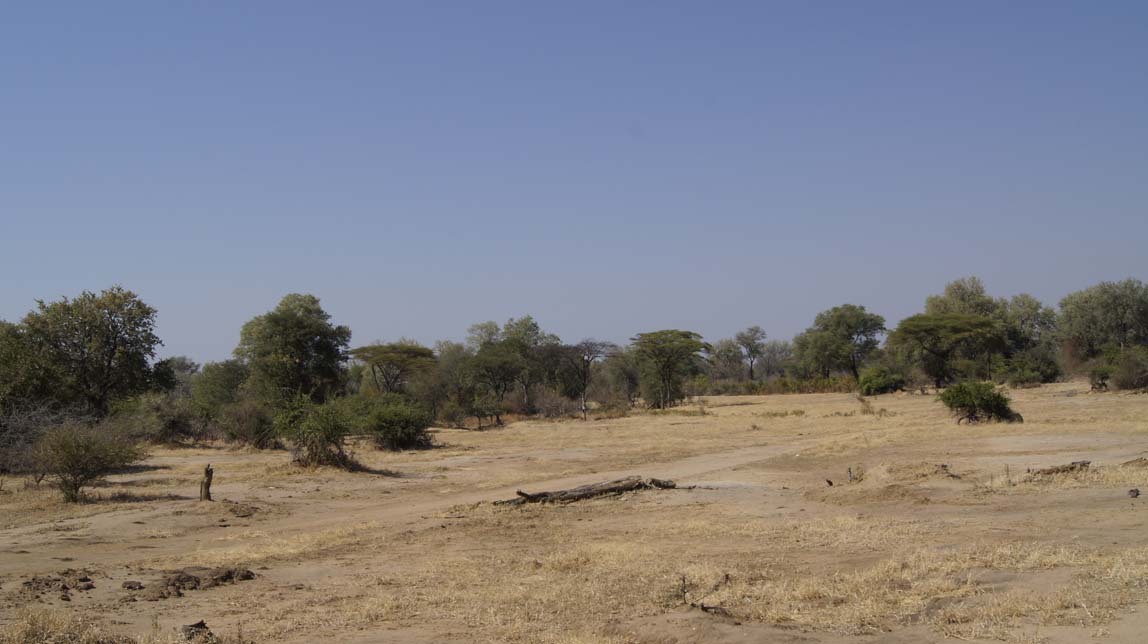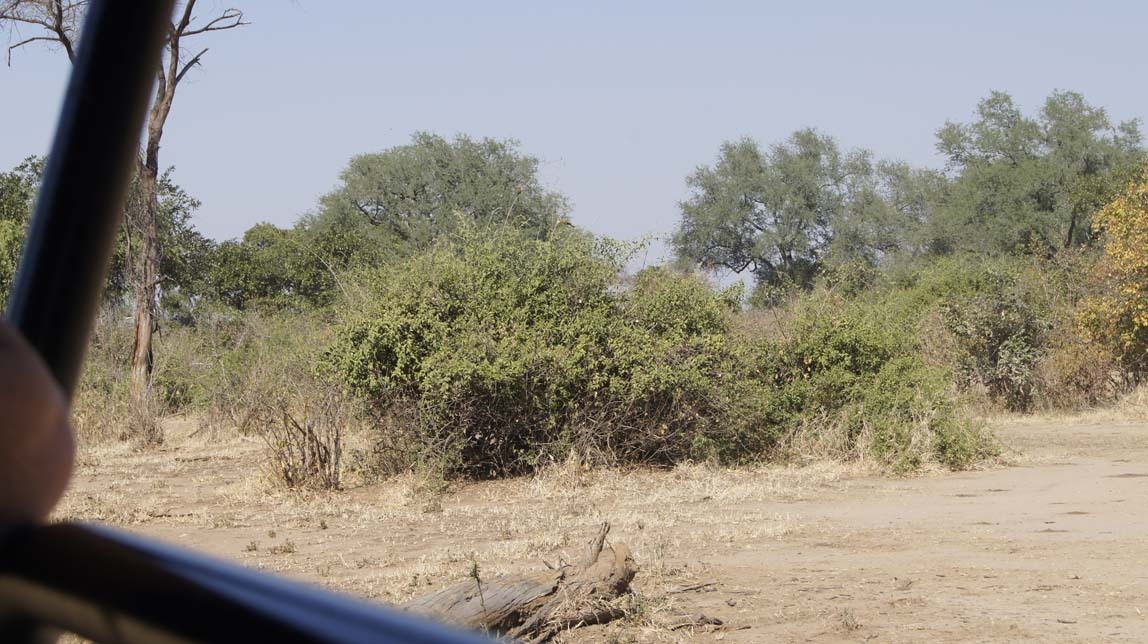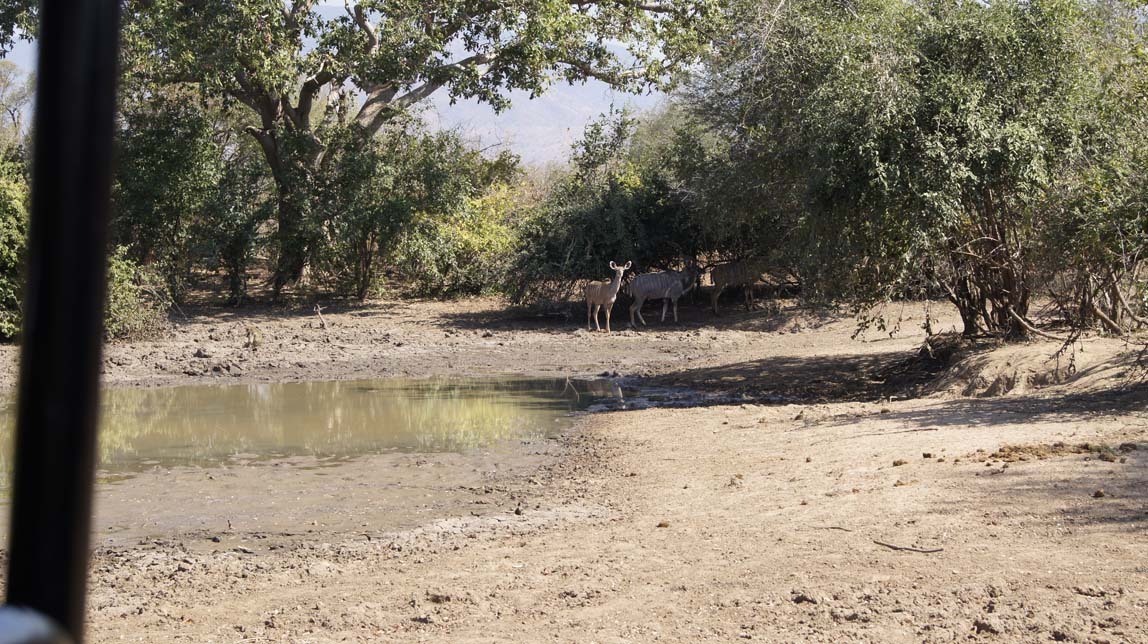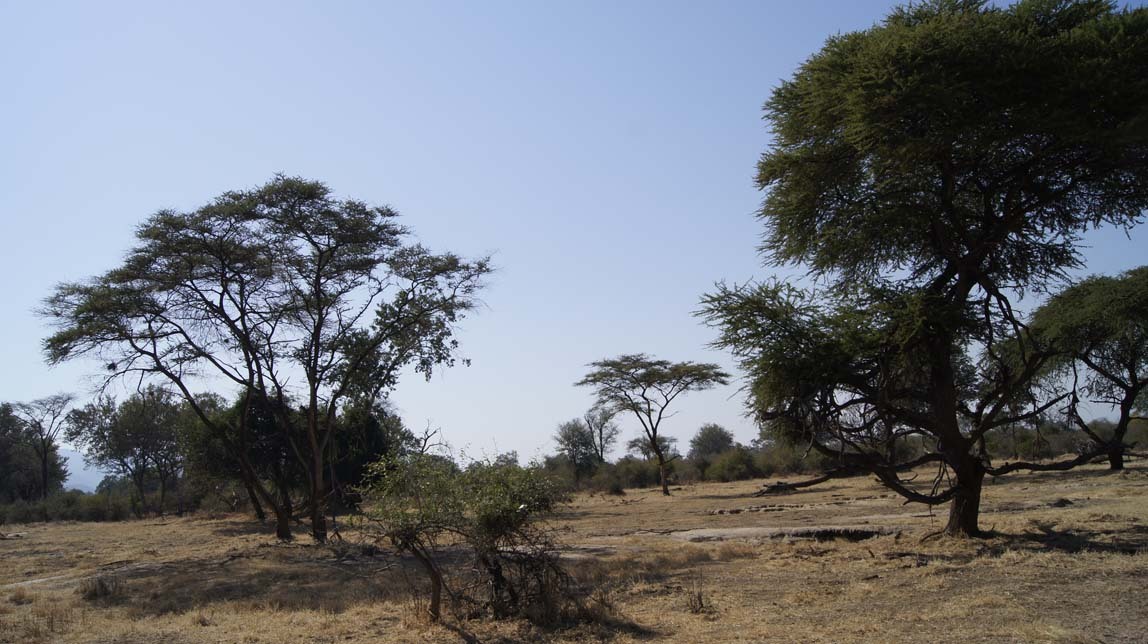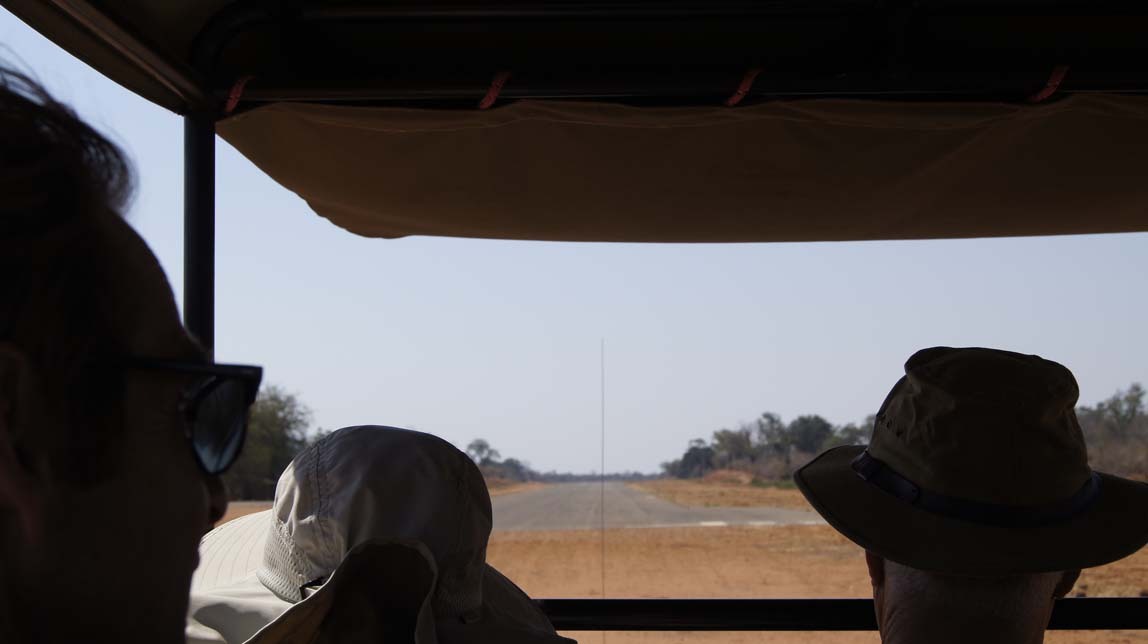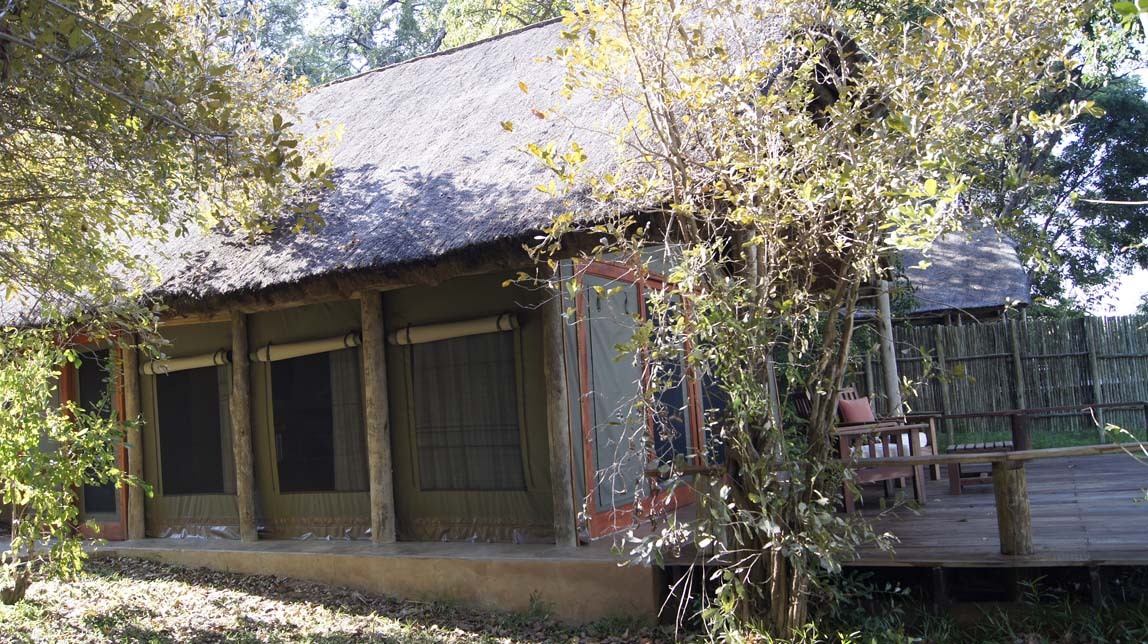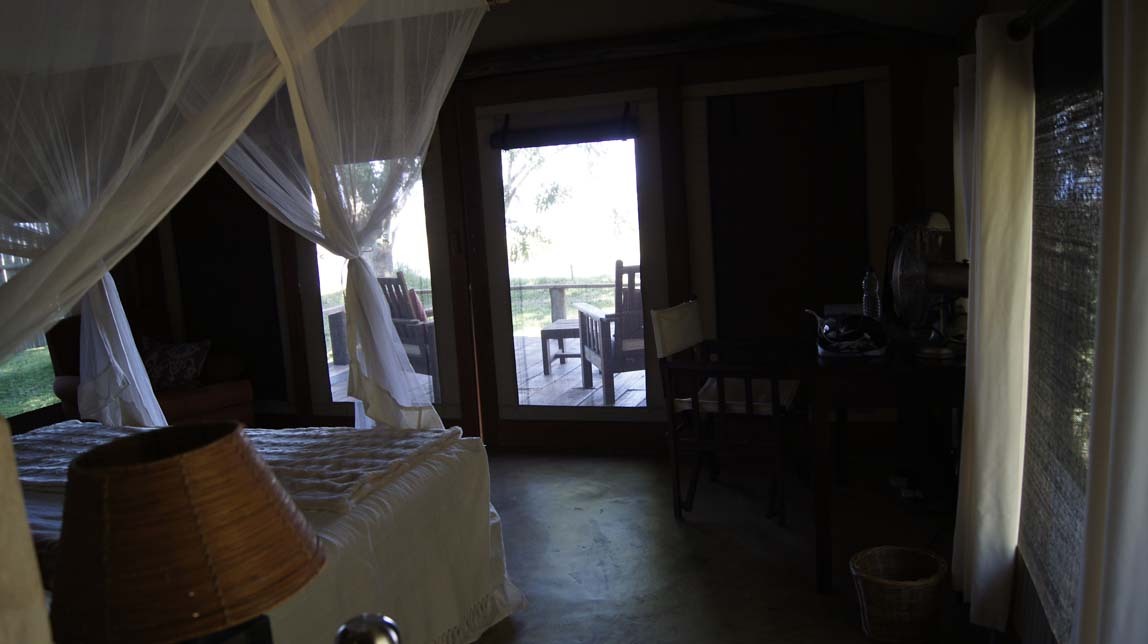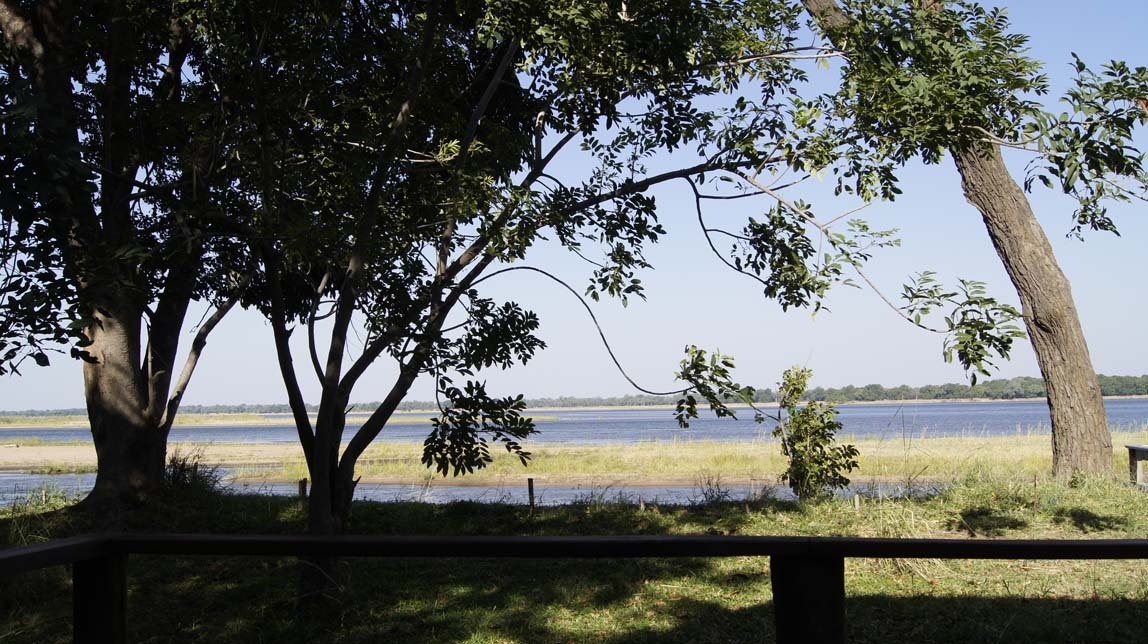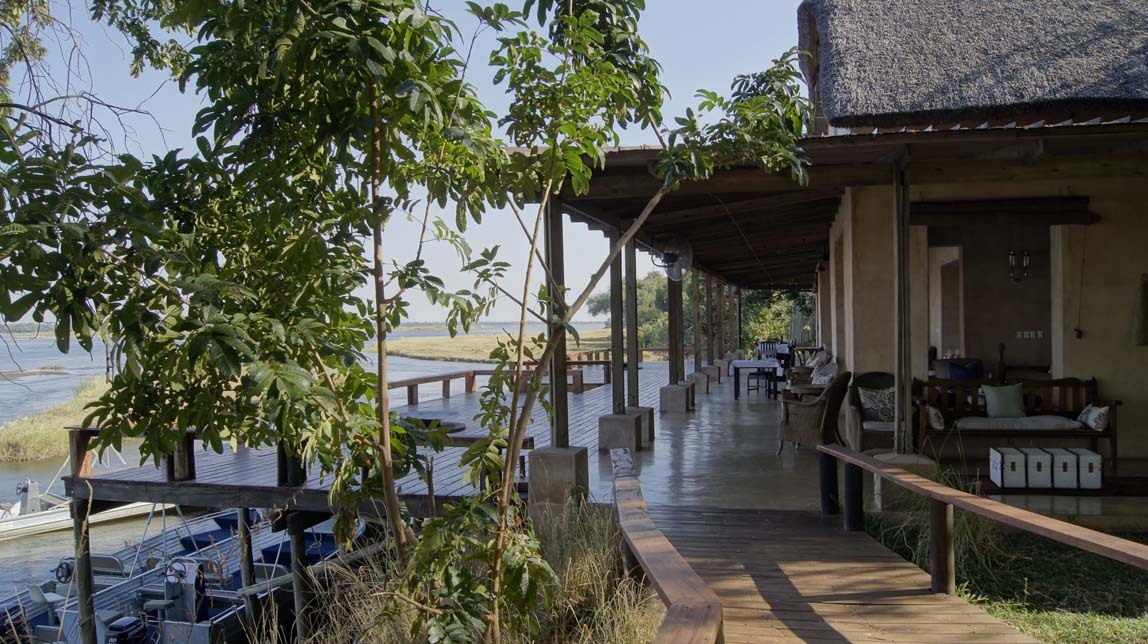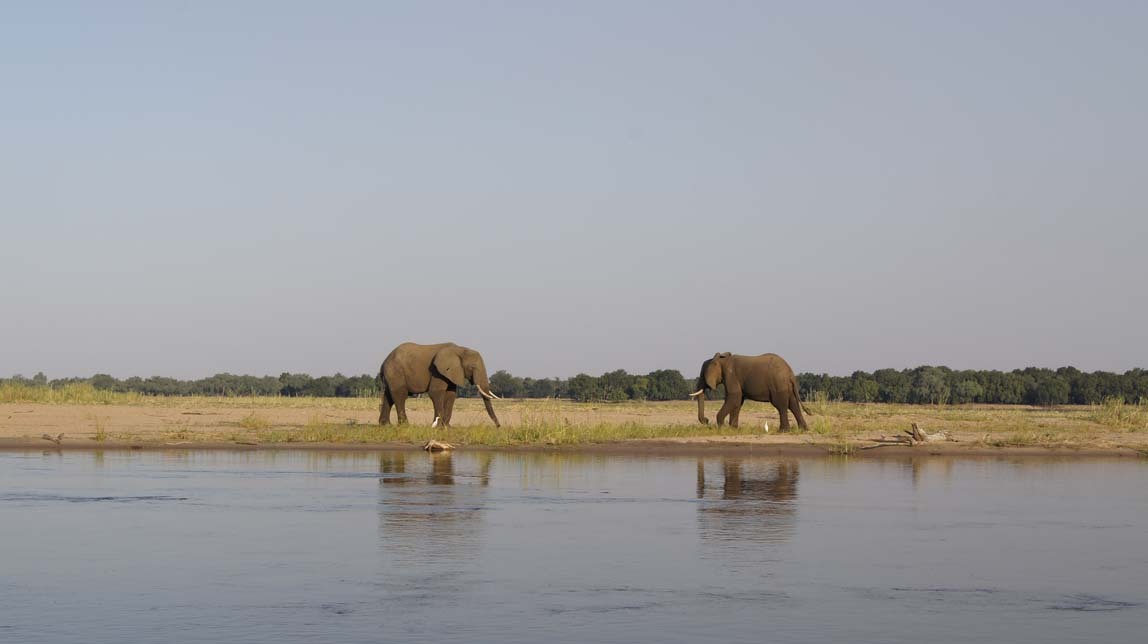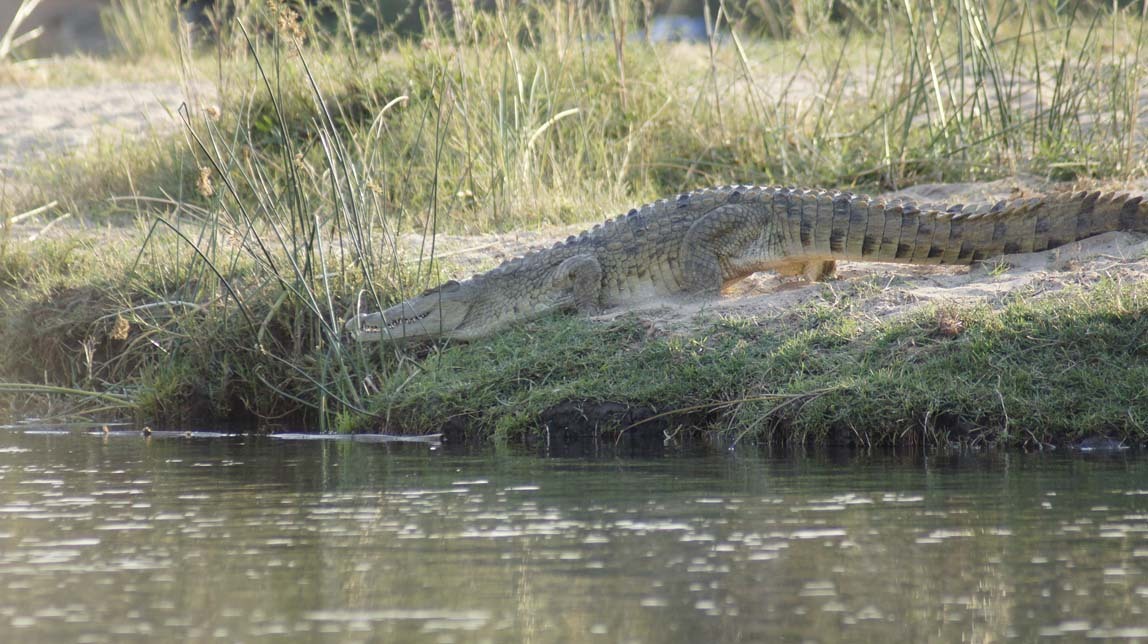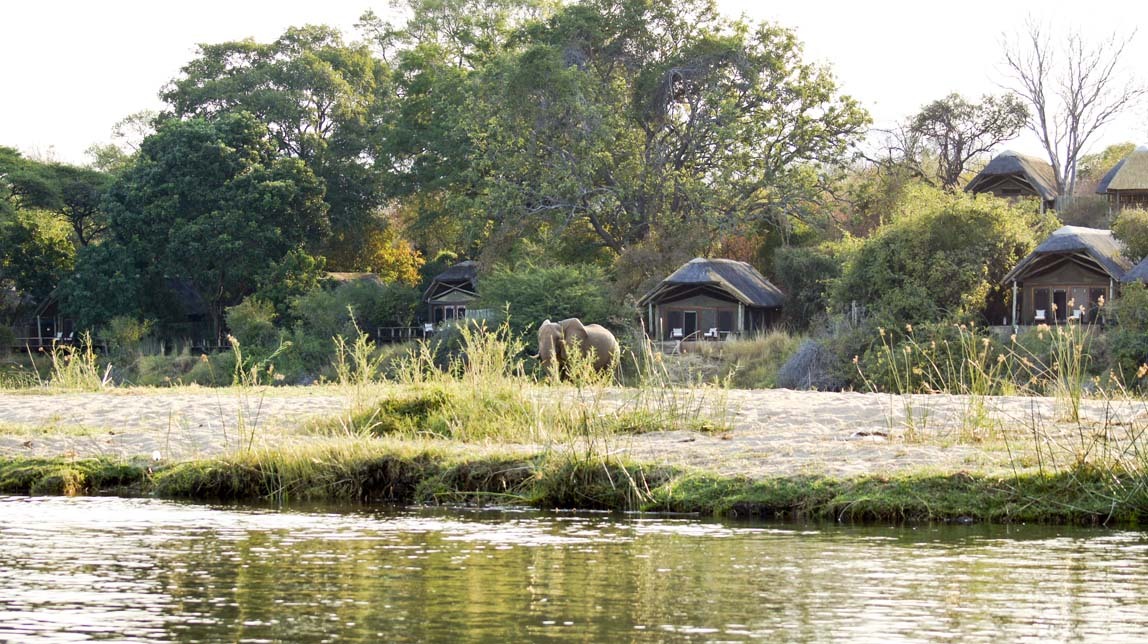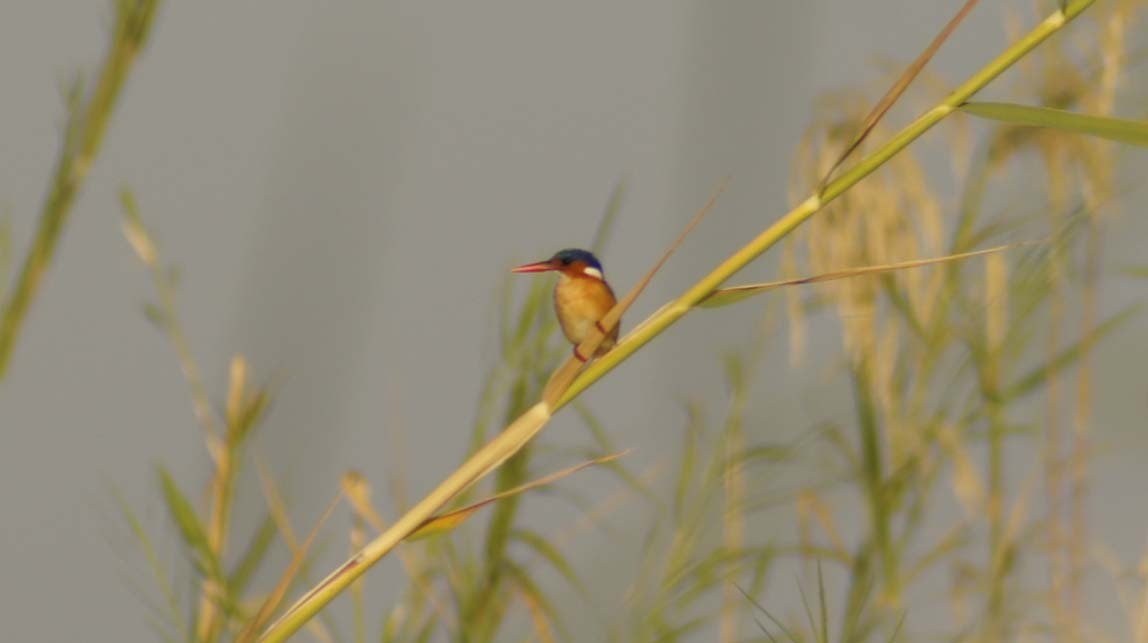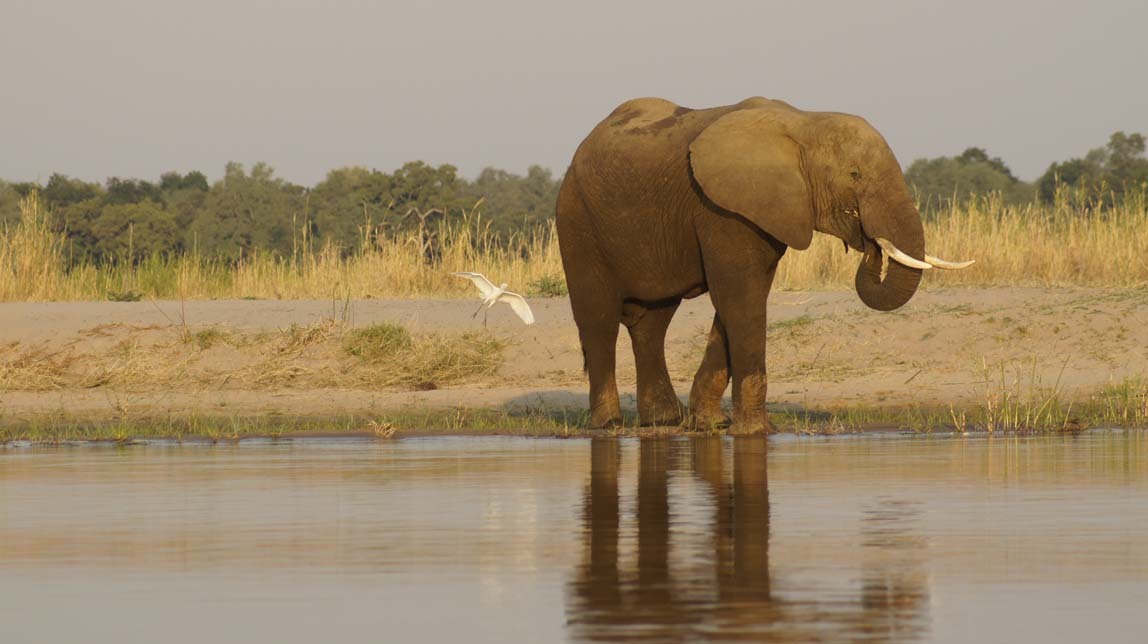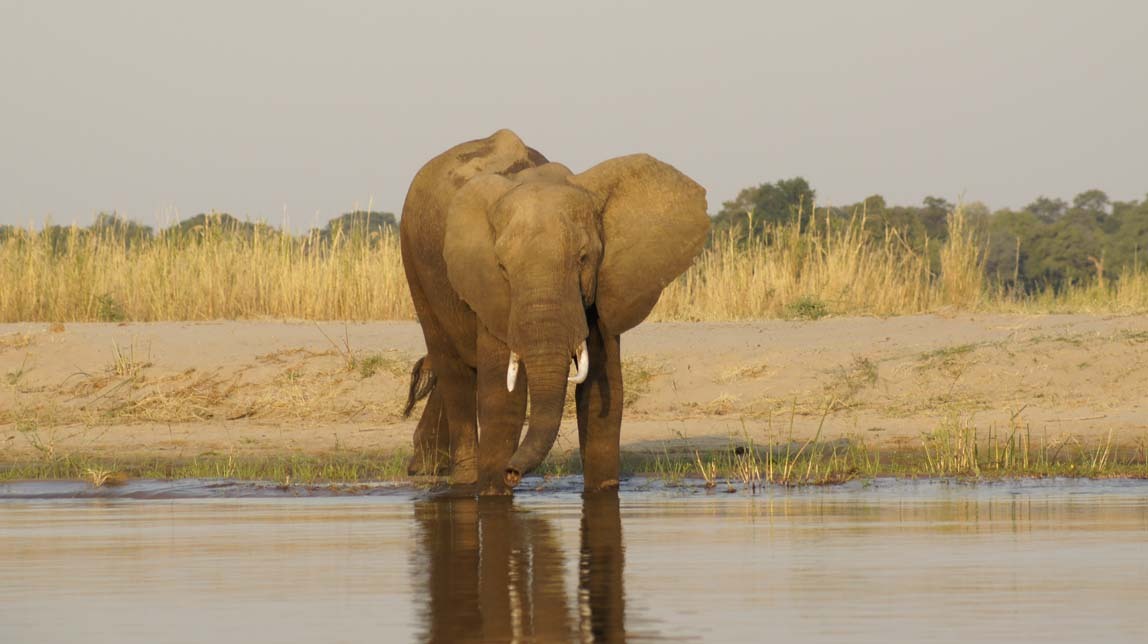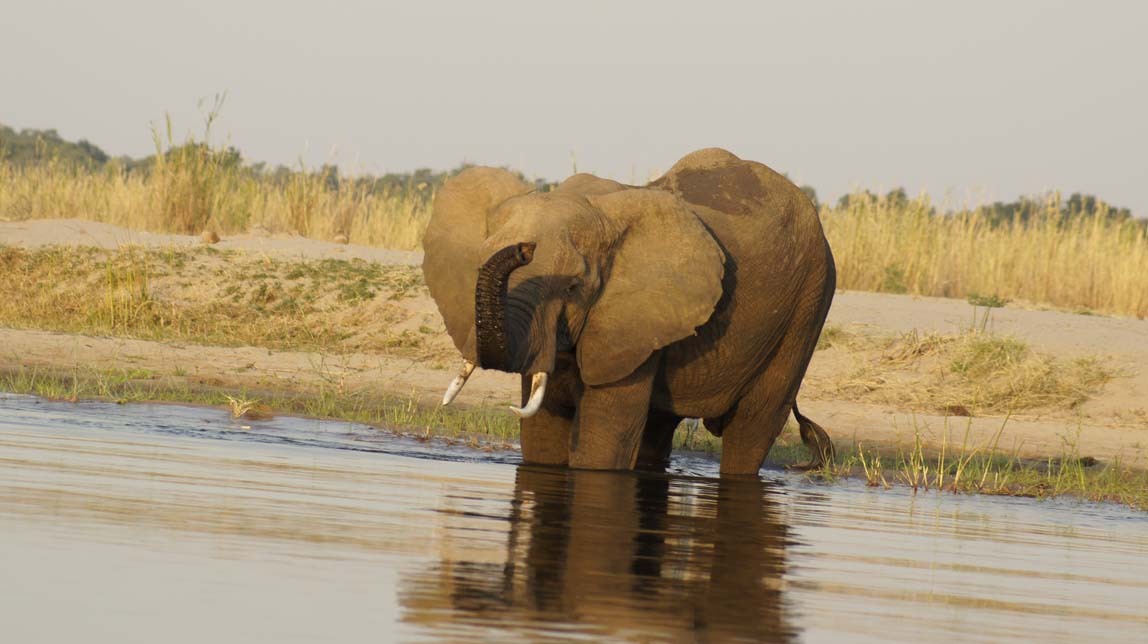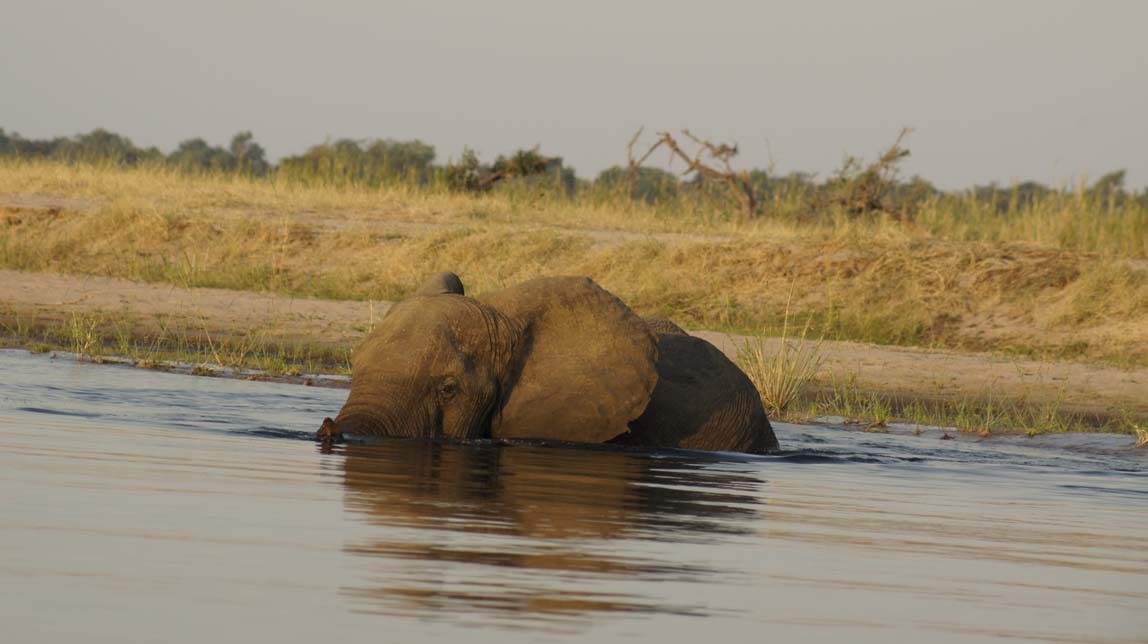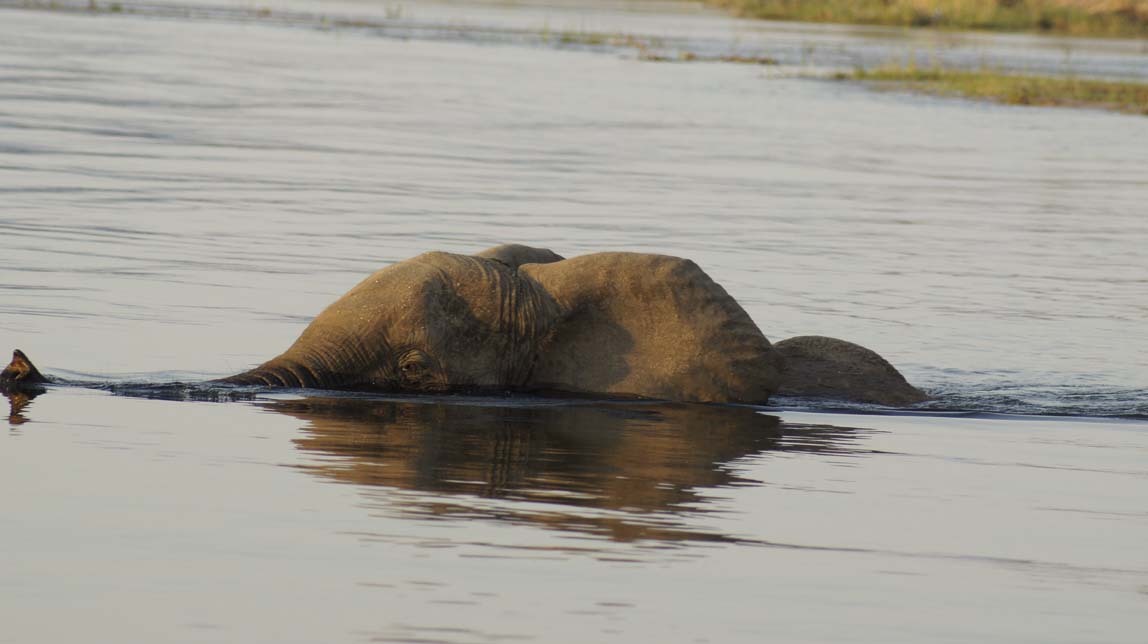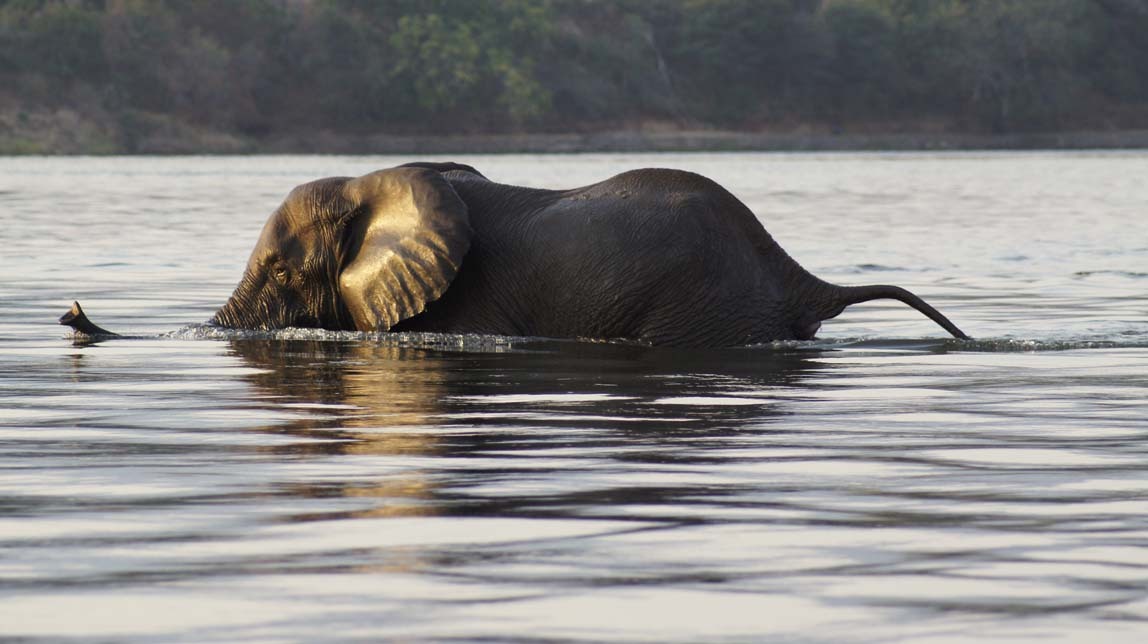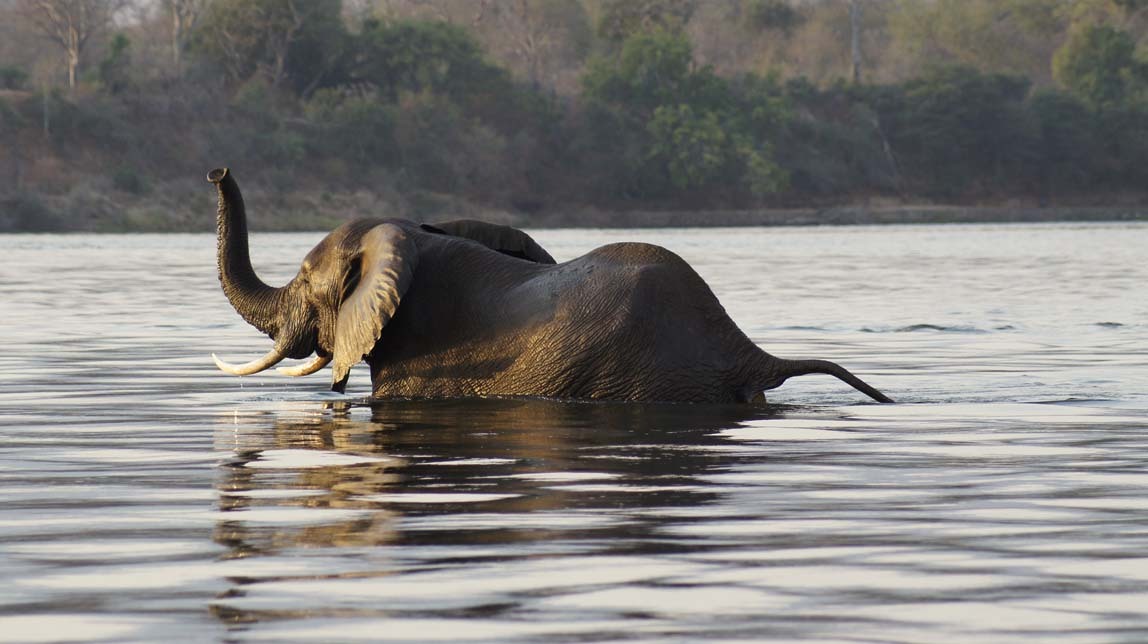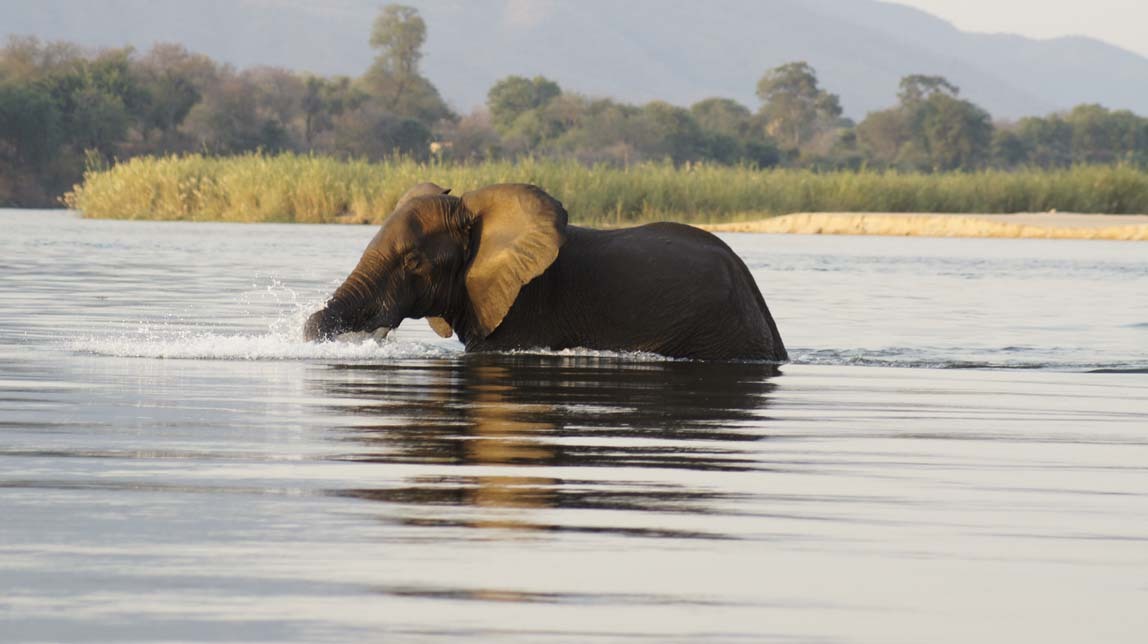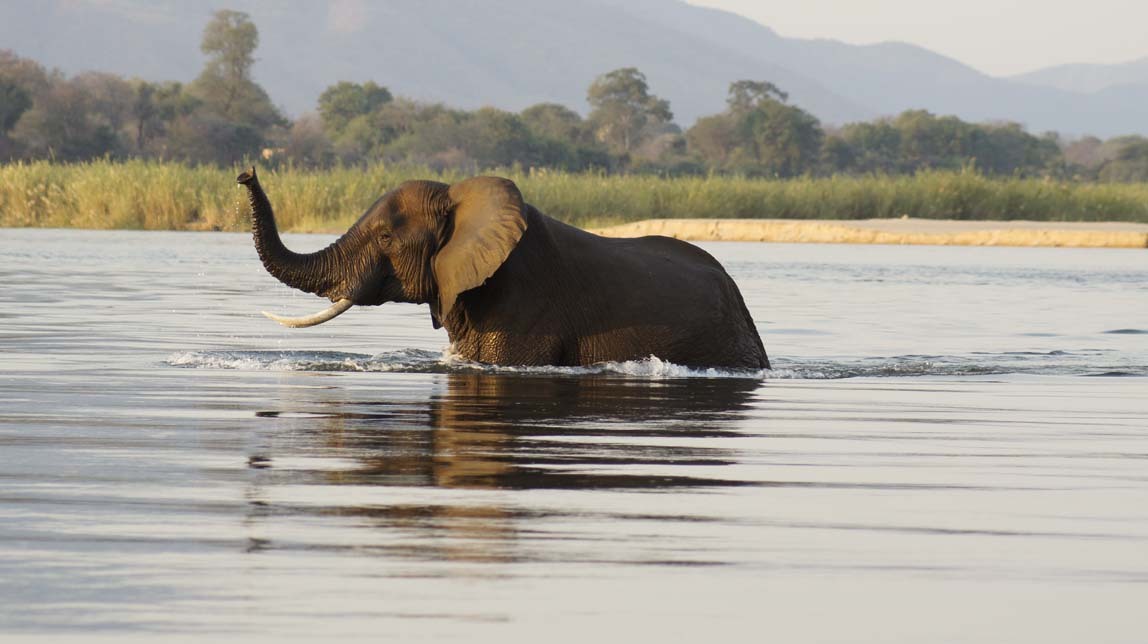We leave the Chobe Safari Lodge at 8 am and Sefi drives us the ten minutes or so to the border of Botswana and Zambia. Botswana, Zambia, Zimbabwe, and Namibia all meet at a point to the west of Victoria Falls. Before, we entered Botswana by going west over the Zimbabwe land-border. This time, we will go north from Botswana over the Zambezi River into Zambia. We were never very far from this multiple-country border while we were in Botswana, and in fact we could see Namibia on our boat trips.
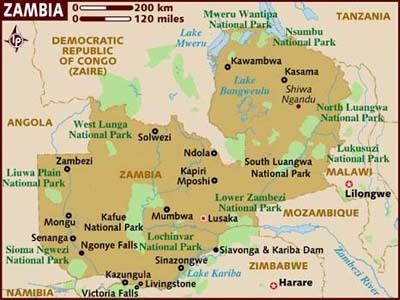 image credit
image credit
Our travel today will take us first to the town of Livingstone, just north over the Zambezi River from Victoria Falls. (Victoria Falls is in Zimbabwe, Livingstone is in Zambia.) Next, we will take a charter flight from the Livingstone Airport to our new lodge near Lusaka, Zambia.
On the drive to the border, we see miles of big trucks parked along the side of the road. In line are tons of semis with long trailers piled high or low with construction materials or other goods. Tonia explains that drivers sometimes wait weeks to get their vehicle across the border. Not only do they have to wait for the ferry, there are regulations, fees, inspections, and who knows what else to get past. So inefficient, such a hamper to business, so rife with the possibility of corruption and bribery.
The front of the line of trucks:
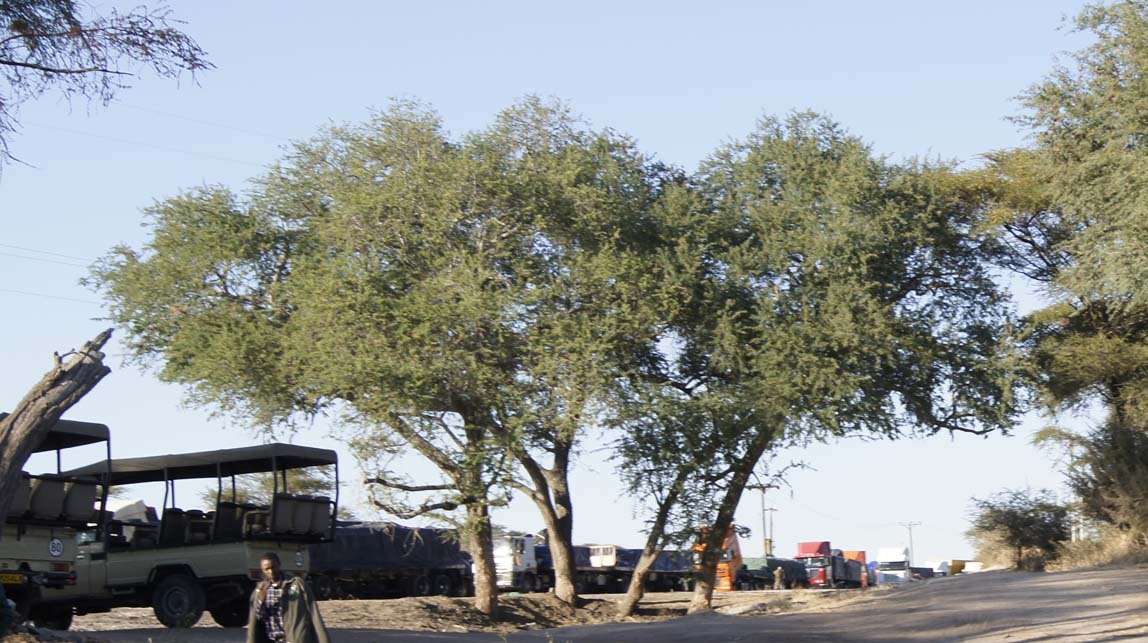
We are stamped out of Botswana at a small, efficient office. Our own people-only ferry awaits to take us to Zambia.
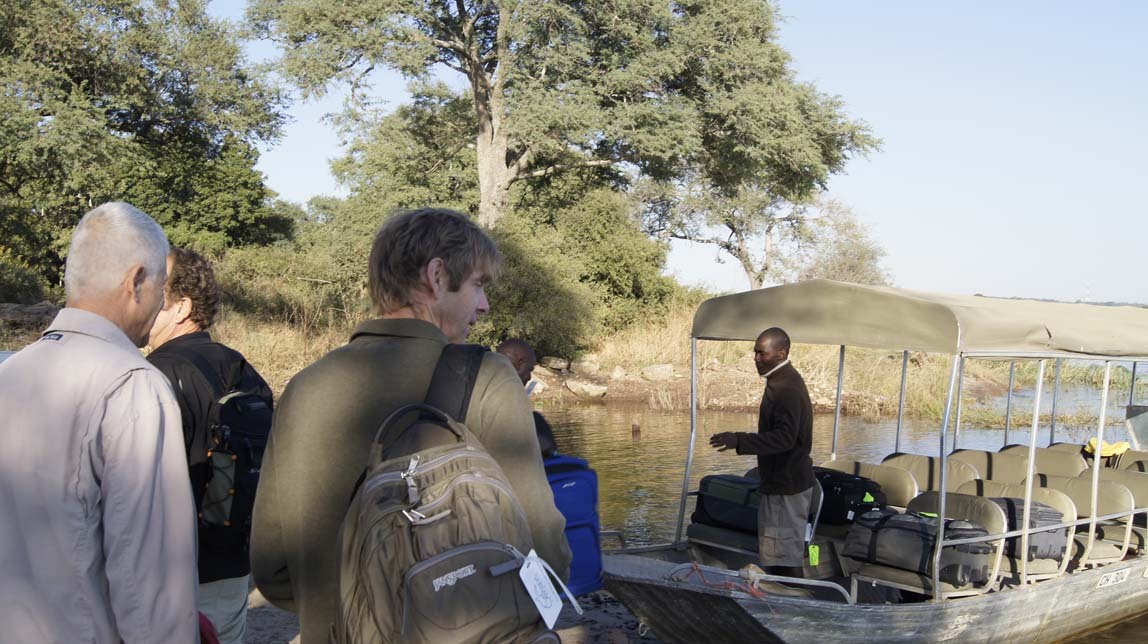
I take some photos of the river crossing. Just looks like another river from this view.
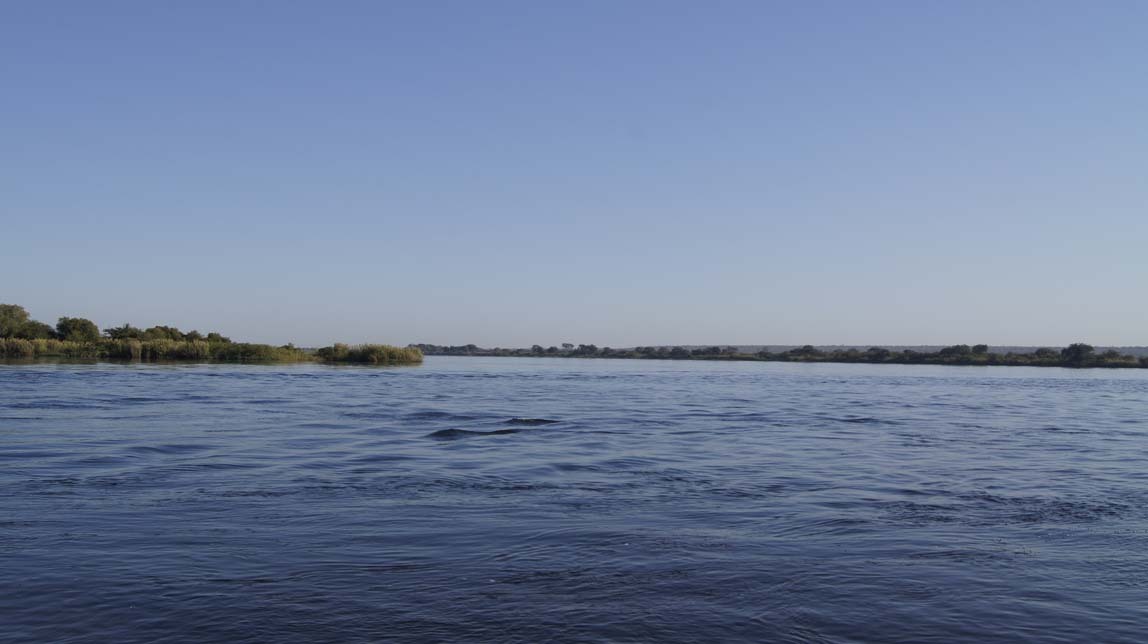
Looking back from our ferry at the line of trucks on the shore.
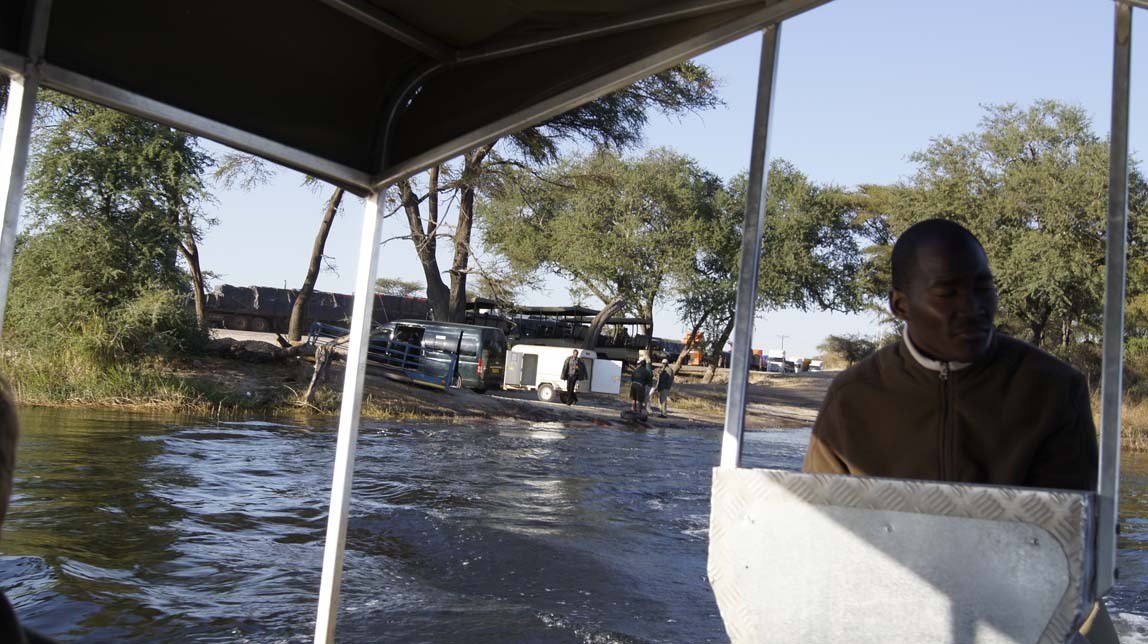
A truck ferry ready to be loaded:
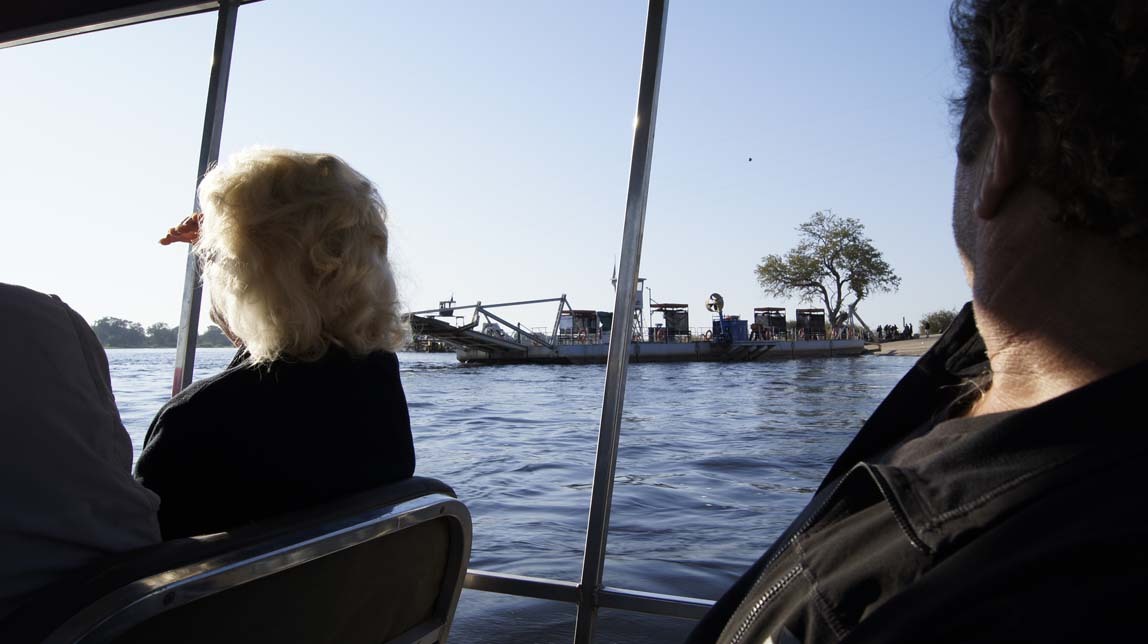
A truck ferry going the other way ready to be unloaded:
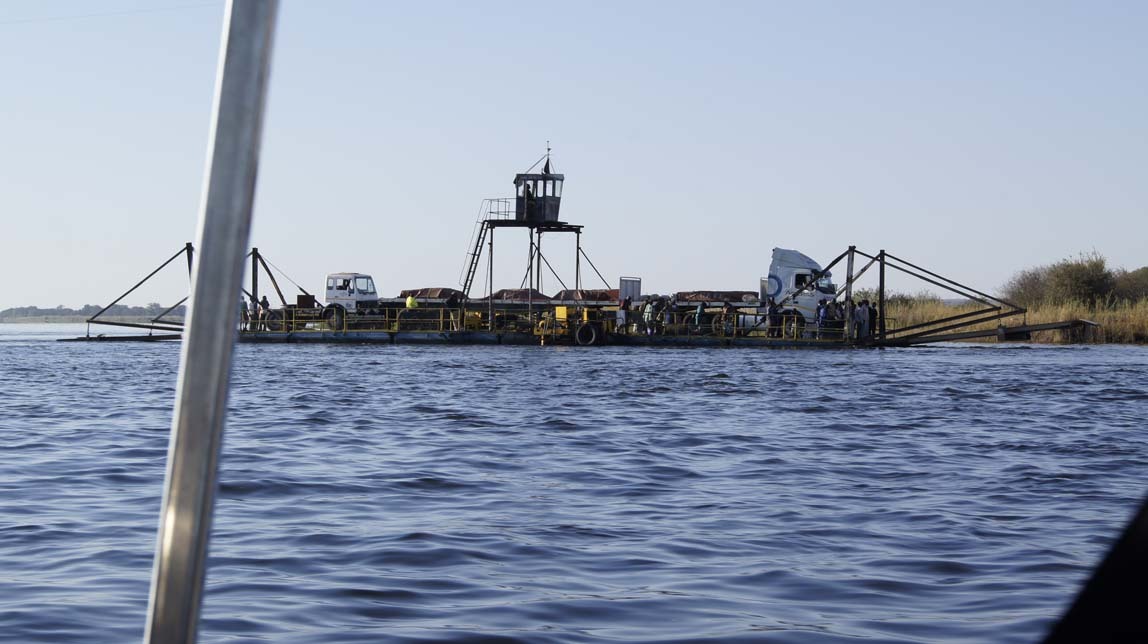
Our ferry approaches the shore, the border to Zambia. The photos give you an idea of the jumble of vehicles and structures and people that awaits us.
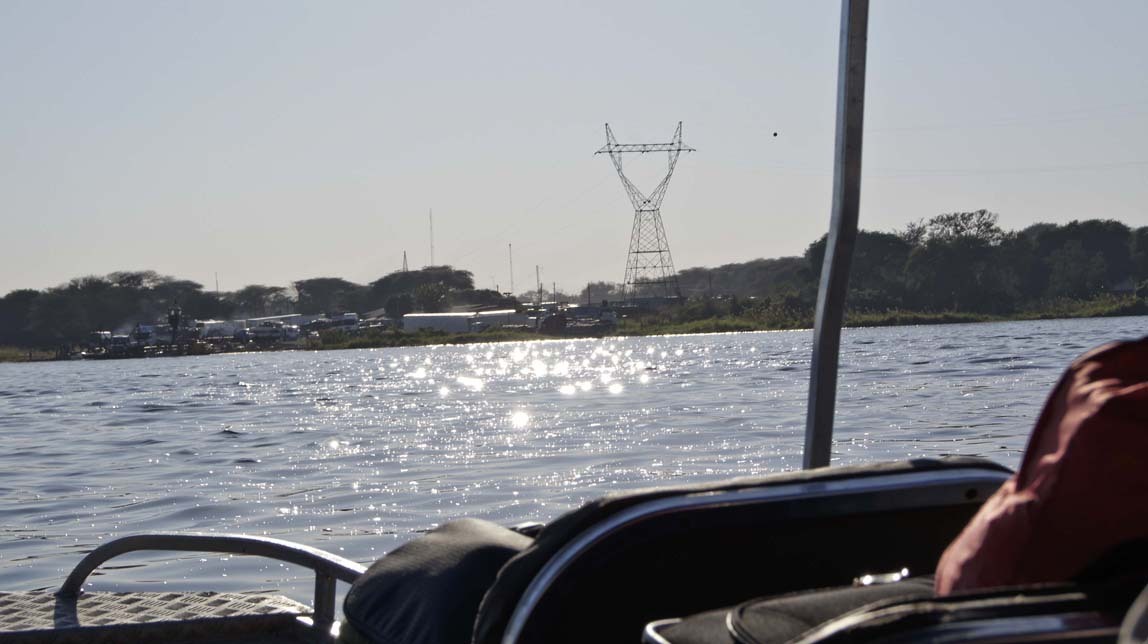
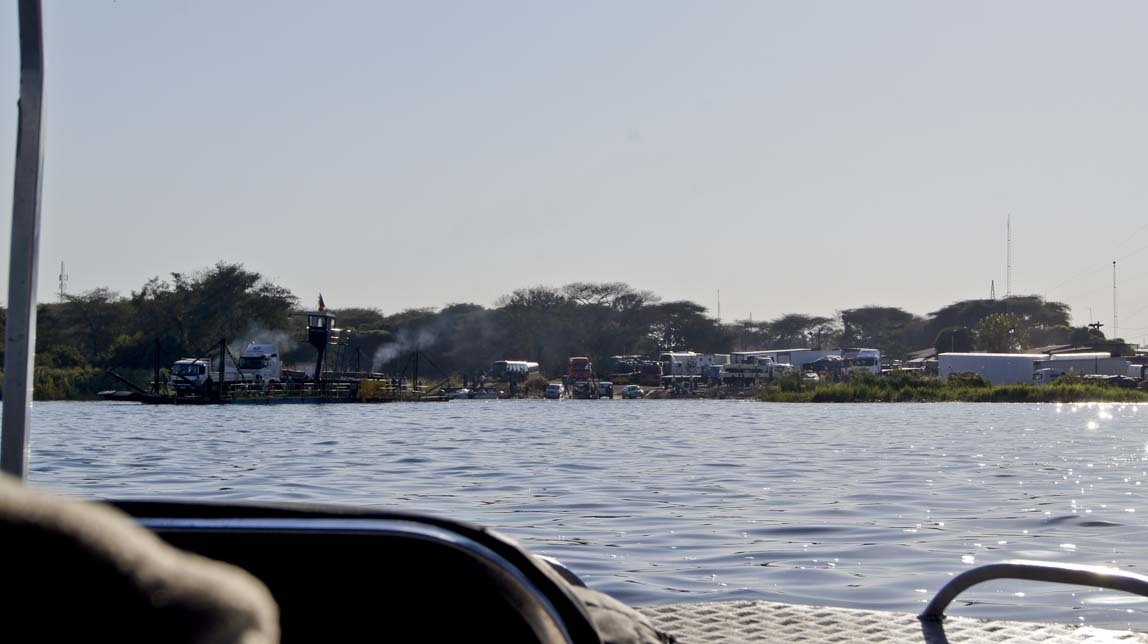
It takes about twenty minutes for our ferry to cross the river. We disembark and are thrust into chaos: a crowd of hawkers. We are trying to keep an eye on our baggage (it was on a different ferry) and Tonia and each other while fending off the Zambians who come close up to us and speak quietly, insistently "hello, my name is such-and-such, I am your friend, I make these beautiful bracelets for you to wear, you need these, buy them from me, mine are the best, the copper is from my country and the finest . . ."
Dropping into that crowd was a jolt. Back into the reality of Africa. This is so, so much the Africa we saw when we were in Togo with Tammy.
Thin pane of glass.
Tonia gathers us from the midst of the throng and gets us onto a tourist bus. Then she collects our passports and cash for visas, and she and the bus driver head for the border office, leaving the six of us on the bus.
Black faces continue to press up to the windows, "copper bracelets, I make them myself, teak animals, big five, I make them myself". We, the very rich very white foreigners, stare forward. I am very conscious of my privileged status, and I'm not sure how I feel about that. Just that thin pane of glass separates their world from my world. But what a separation.
My thoughts wander. Last year, when we visited
Tammy in Togo, we lived right in the local culture for two weeks. We got in their fro-fros and bush taxis, we stayed in a house like theirs in one of their towns, we shared meals in their homes, we drank in their bars and shopped at their open air markets. We bought items from the hawkers when thirsty or hungry. Tammy was always there to guide us, within an arms reach to help us, and we felt very little uncomfortableness. We were living the Peace Corps way, living like the locals, and only our white skin gave us away.
But this time, at the border, I felt the huge rift in status. We had spent the last week in Africa but in European-style comfort, cushioned in luxury lodges from the local culture. Looking out the bus, we see how most of Africa really is. Poor. It's awkward, I did nothing to deserve this status. But I would not change places with them.
Slowly I become aware that it's taking a long time for Tonia and the driver to return. Then, a guy comes on the bus and says he will drive us up a little ways, out of the throng. He repeats his plan several times. A few of us are apprehensive: we are sitting there without our guide, without our passports! (Is he a kidnapper?) But John and the other guys note that he is wearing the same uniform as our driver, and we say "okay", and he moves us up past the border office. Almost immediately Tonia and our driver return and flourish our stamped passports, all of us smiling at her recount of how she got to the front of the line. And smiling because all is well! We are safe again.
And on our way.
It's about an hour to the Livingstone airport.
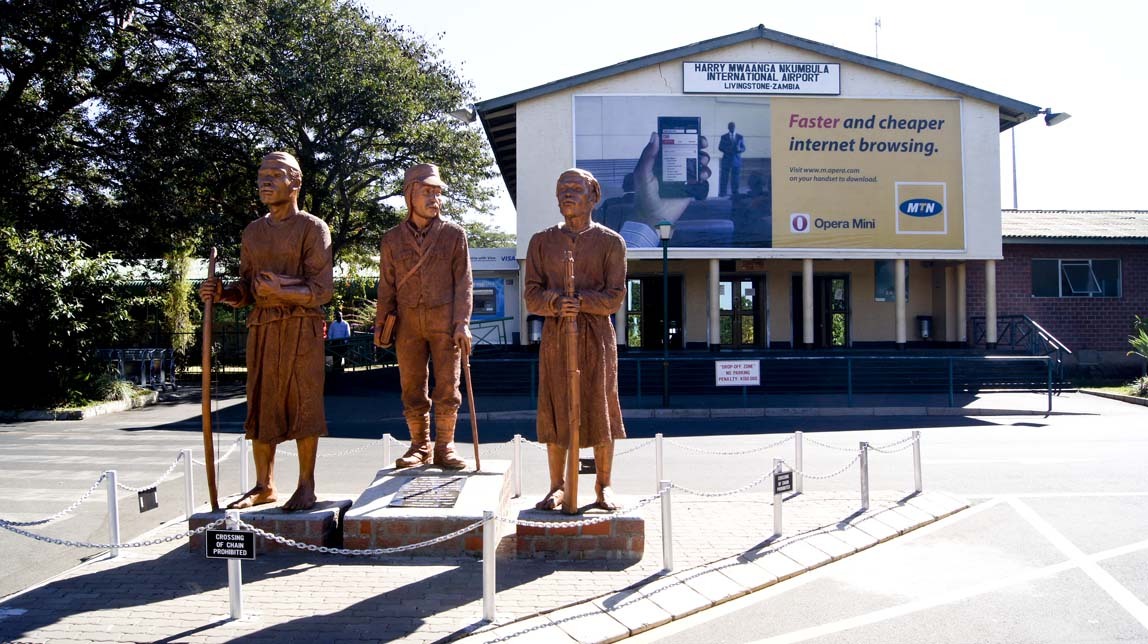
We wait in a small restaurant-lounge. Is it too early for a beer? Why no, it's 10:01am!
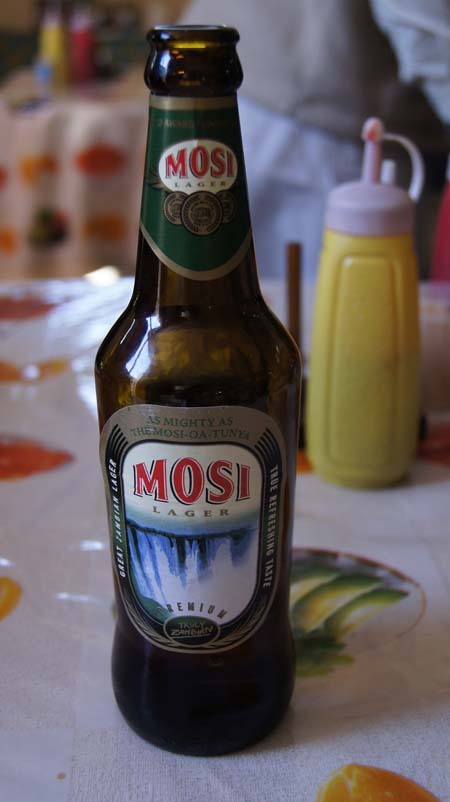
Our plane is one of the small ones in the center of this photo:
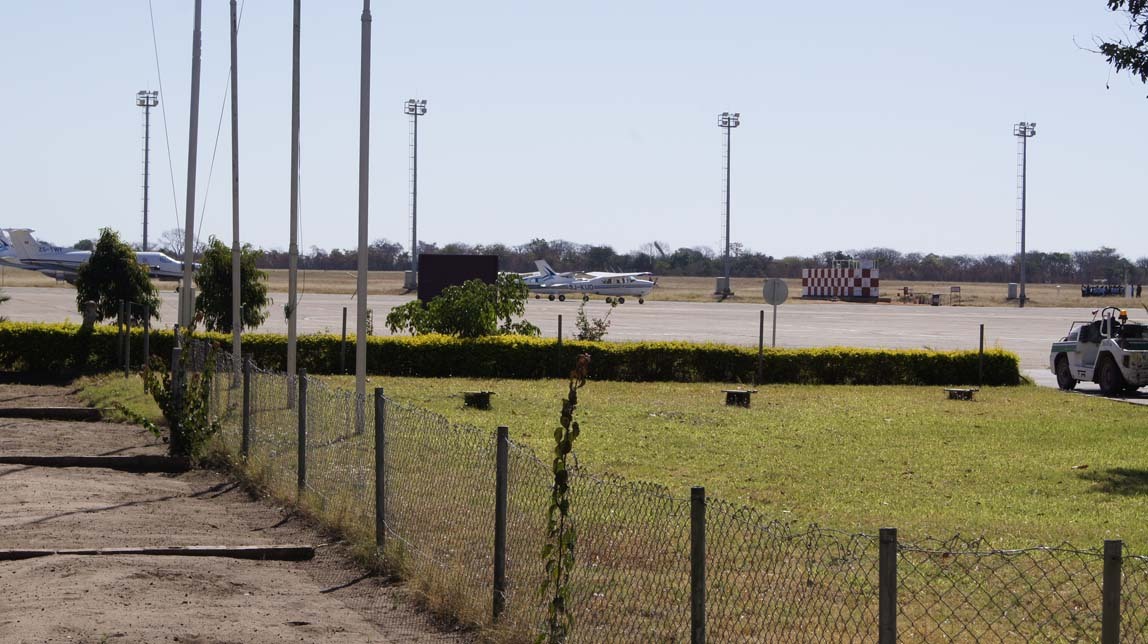
I liked climbing into the small plane. John got to sit up front next to the pilot. They offered us chips and bottled water. We settled into the hour-and-a-half flight.
Here is a view through the foggy plane window and through the hazy sky, taken soon after we took off. Even though it's not a sharp photo, you can see the mist from Victoria Falls in the center of the frame:
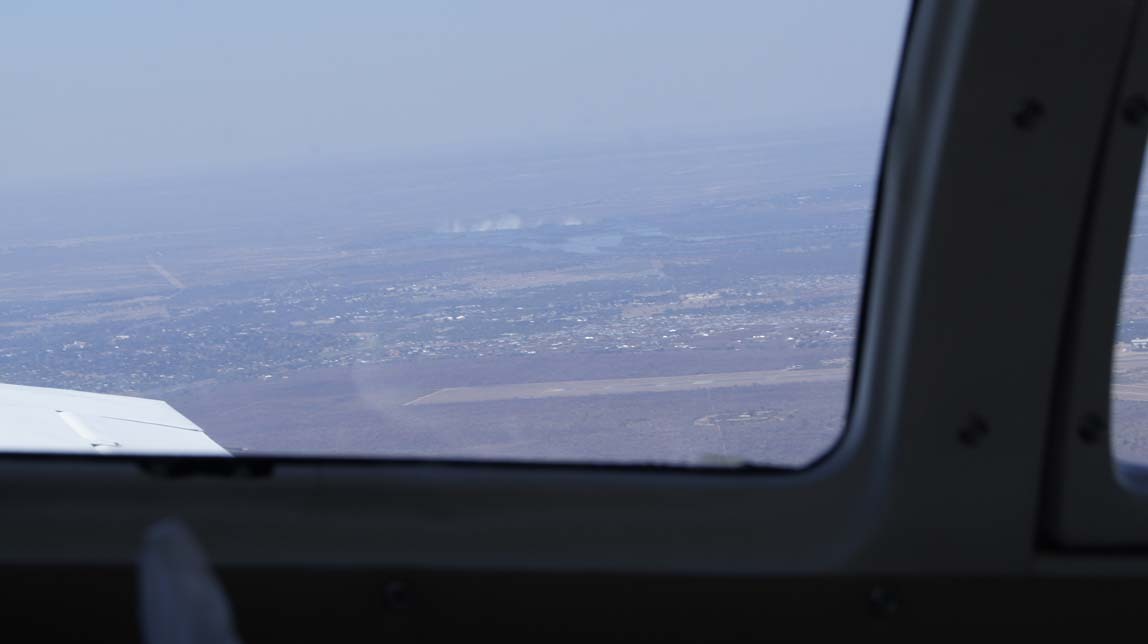
And now we are at the airstrip in Zambia. Here is our plane on the small landing strip:
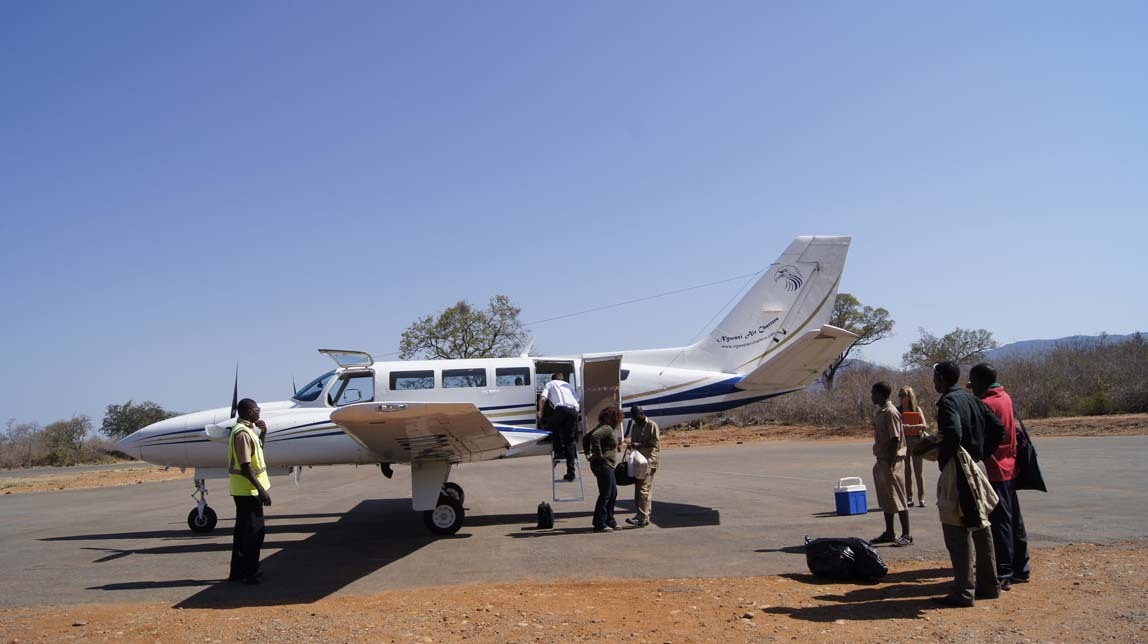
We are met by Simeon, our guide in Zambia. He drives us to the Royal Zambezi Lodge, just a few minutes from the private airstrip. We are met with cool glasses of juice. We walk through the open lodge area and gaze on the elephants on the sandbar.
Tonia claimed we'd have to be taken kicking and screaming from the Stanley and Livingstone, our first lodge on the trip. But she was wrong, it's the Royal Zambezi that caught our hearts and still calls to us "come back, come back!"
More on that later. It's time for us to settle into our tents (tents!) and then go out on a boat on the river. To be continued . . .
Navigation: first safari blog entry
Next blog entry

